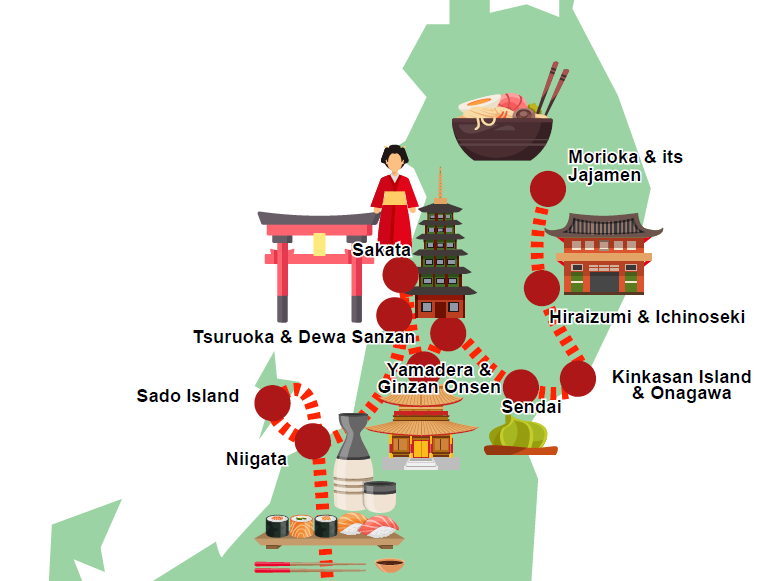
(Recommended itinerary) 11 days to see (and taste!) the best of the Tohoku region! 🚆A JR-pass compatible tour
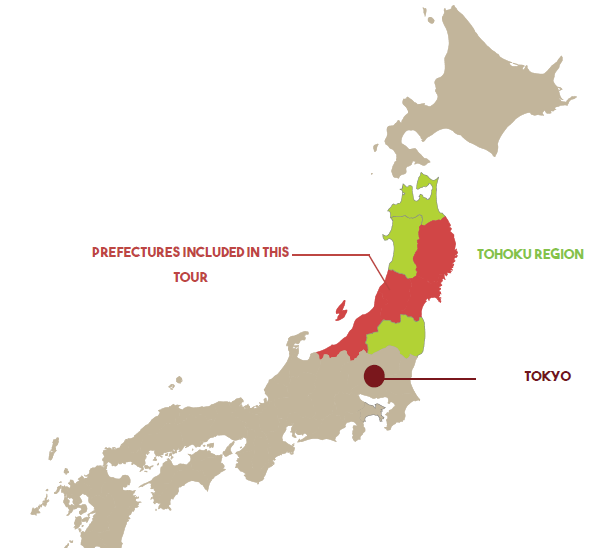
Ready to venture outside Japan’s beaten tracks? Eager to discover the beauty and the spiritual essence of the Northeastern part of Japan, known as “Tohoku” in Japanese? Do you consider travel incomplete without indulging in delicious food? Look no further. We have the perfect 10-nights itinerary for you to explore the Tohoku region, experiencing each prefecture’s iconic dishes and drinks while visiting the most historic, fascinating, and beautiful landmarks! This tour is also JR-pass friendly (but feel free to use the means of transportation of your choice!).
Places visited: (Niigata prefecture) Niigata city, Sado island, (Yamagata prefecture) Tsuruoka and the Dewa Sanzan, Yamadera, Ginzan Onsen, (Miyagi Prefecture) Sendai, Onagawa, Kinkasan, (Iwate prefecture) Hiraizumi, and Morioka.
This trip idea can be completed all-year-round but we recommend to avoid the snowy season if you wish to walk the hiking parts entirely.
Physical activity level: Easy
Budget: 200$ a day on average
(D1) Niigata: the gateway to the Tohoku region
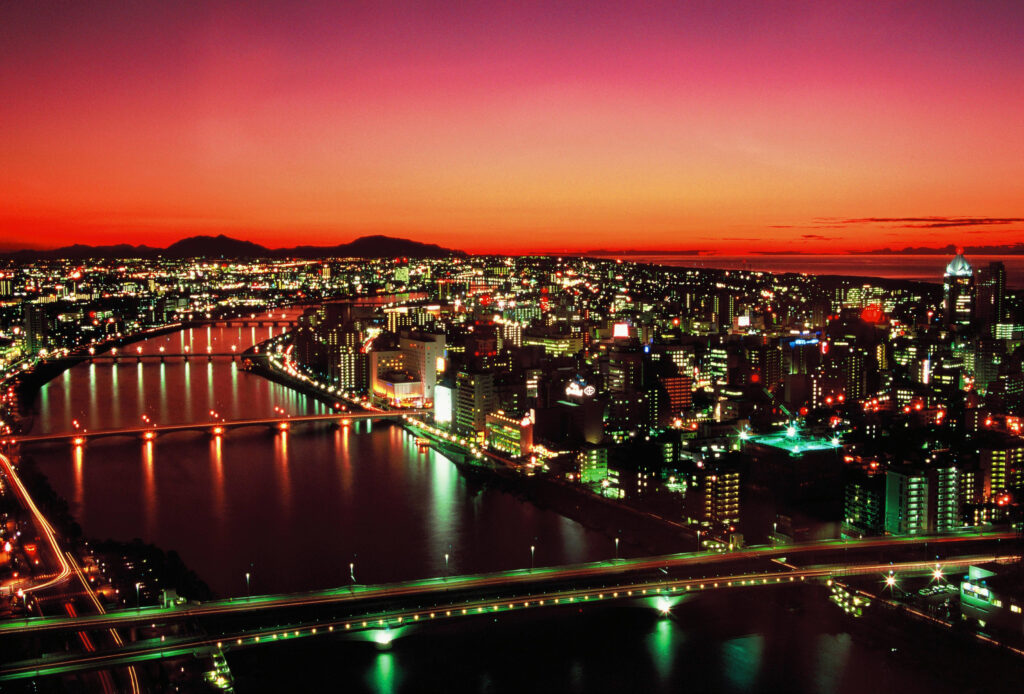
(From Tokyo station) By Shinkansen: Take the JR Joetsu Shinkansen bound for Niigata station (between 1 hour and 30 minutes and 2 hours)
→ Did you know? The shinkansen that leaves at 9:12 from Tokyo station (Toki 311) is the fastest to reach Niigata station! (89 minutes)
While it is true that technically, the Niigata region doesn’t belong to the Tohoku region (it is actually part of the Hokuriku region), its convenient location, right between Tokyo and Yamagata Prefecture, makes it the perfect gateway for those wishing to visit the Tohoku region from Tokyo. Additionally, Niigata’s position along the Sea of Japan, its heavy winter snowfalls, and its cultural similarities with northern Japan often lead to its association with Tohoku. Furthermore, travelers looking to visit the beautiful Sado Island must stop at Niigata’s port to take the ferry to this famous island.
Below are our recommended places to visit while in Niigata City:
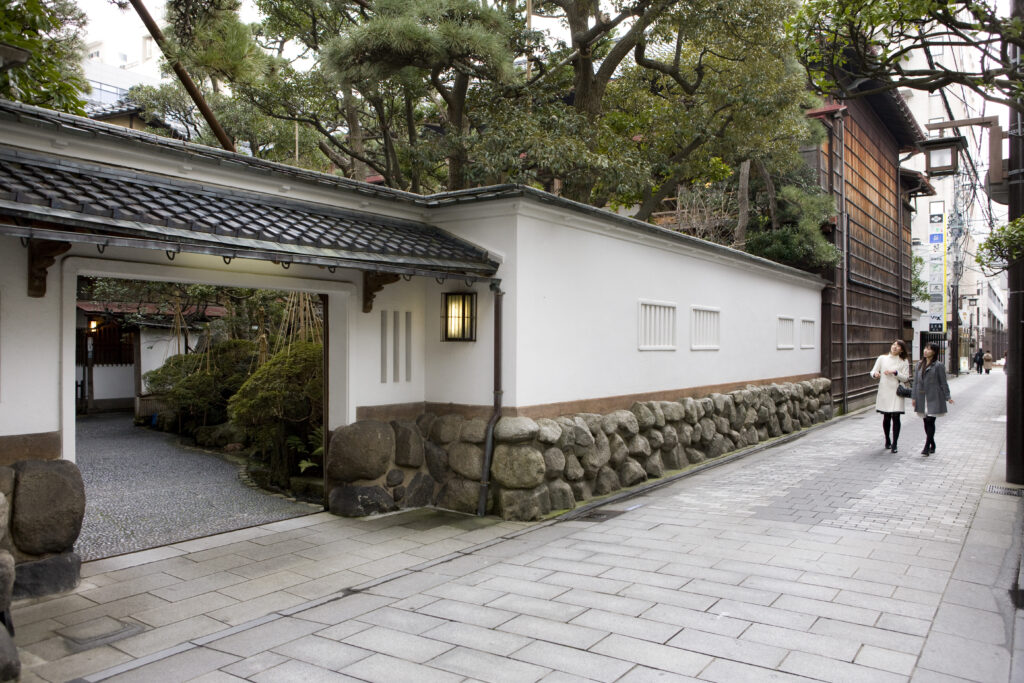
The “Old-Town” (Furumachi)
Distance from Niigata station: 9 min. by bus (Bandai-bashi line or 40 min. on foot). Bus stop name: Furumachi.
The Old Town is full of charming cafés, restaurants, and, most importantly, historical sites such as the Saito Family Residence (Saito-ke bettei 斎藤家別邸). This traditional Japanese house once belonged to one of the most influential families in the region and is also a venue for “Geigi” (Niigata’s geisha and maiko) performances.
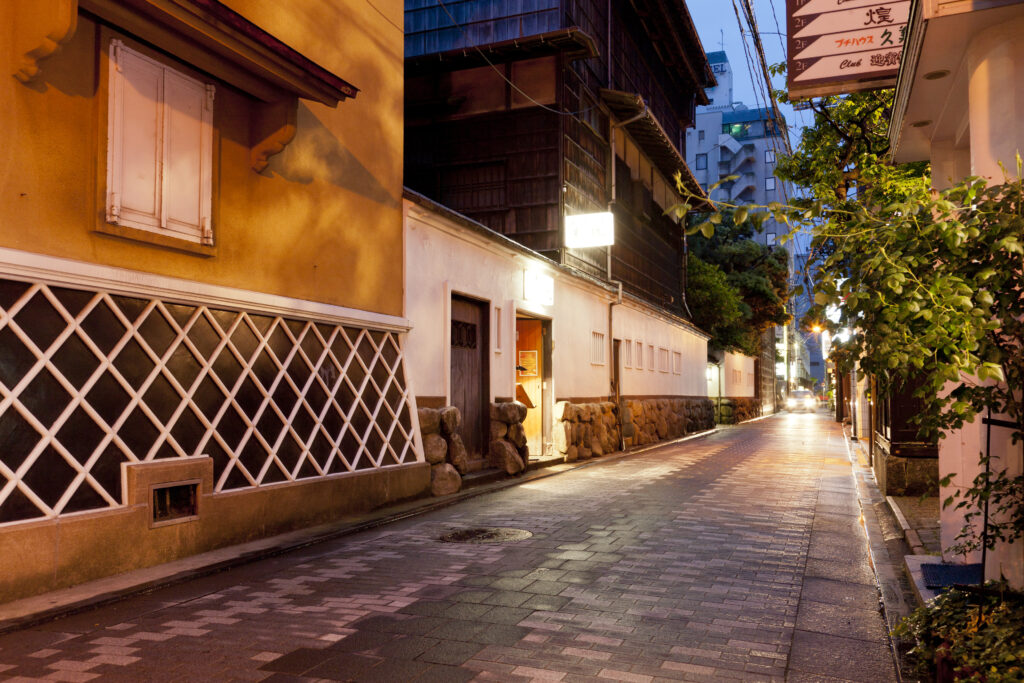
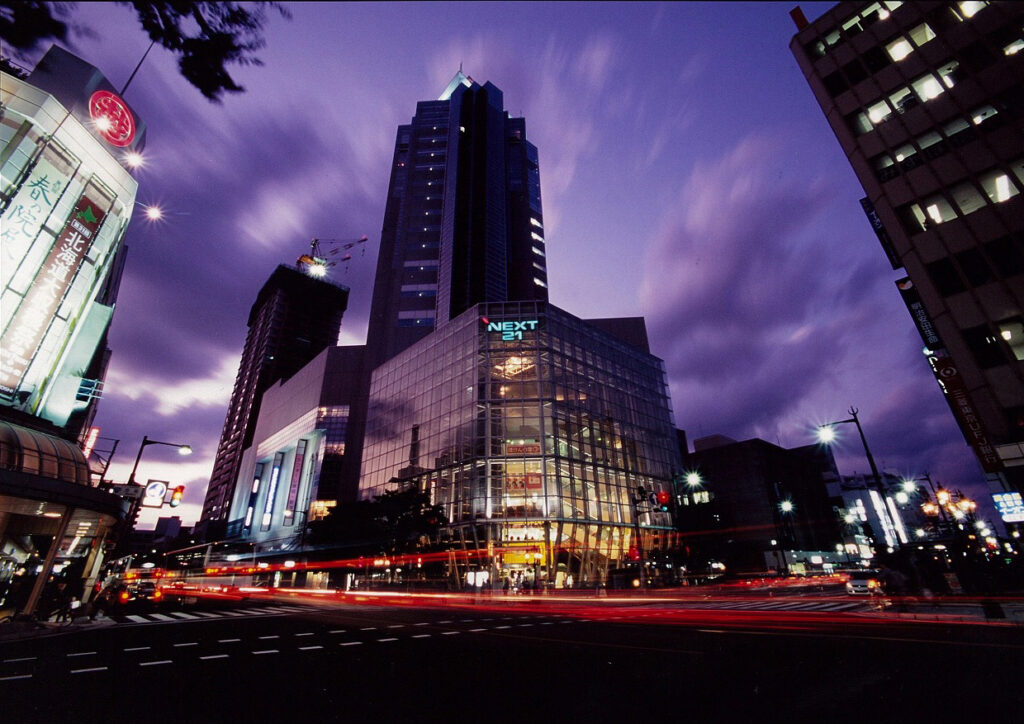
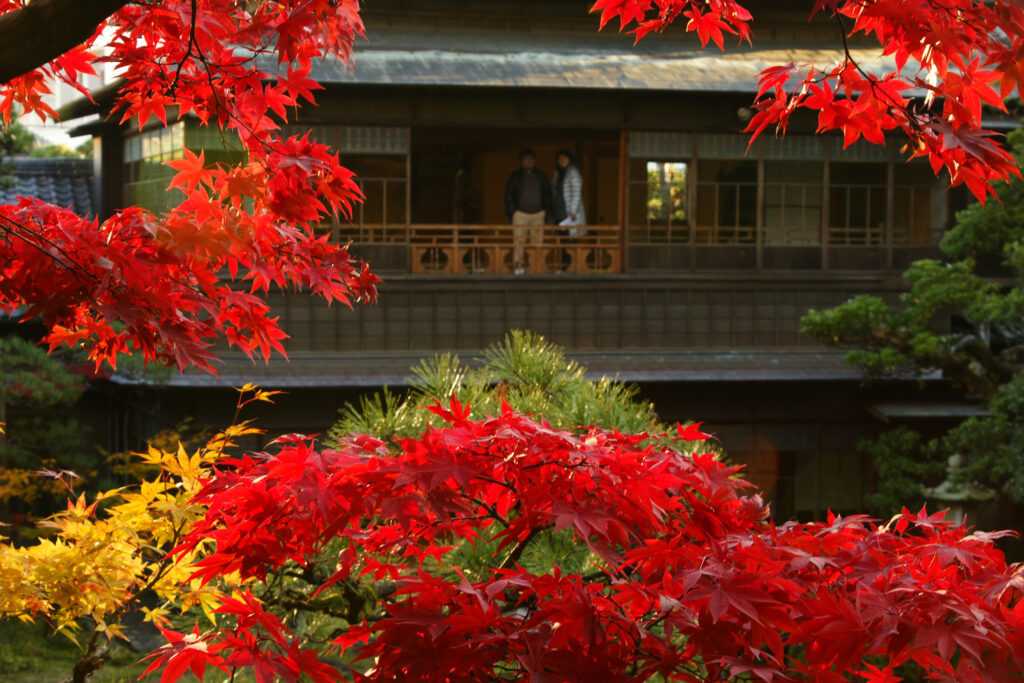
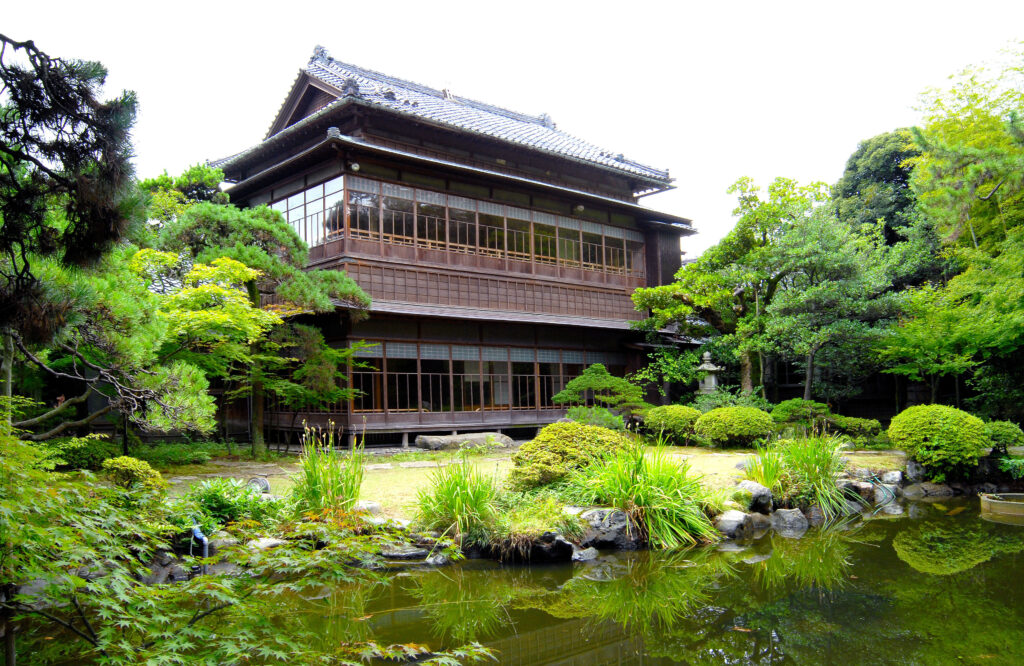
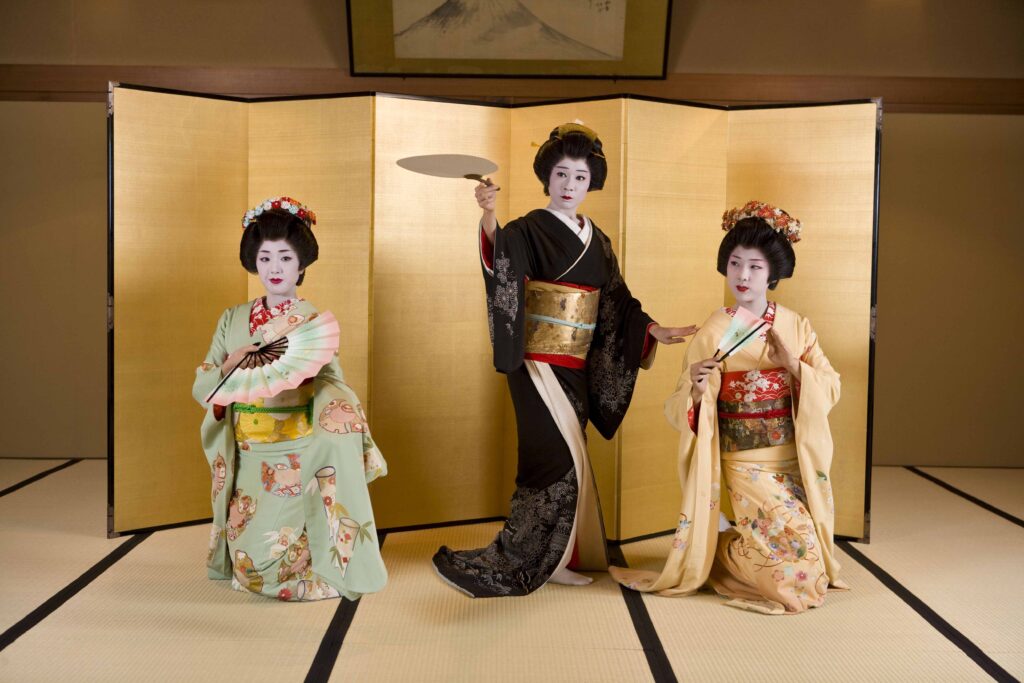
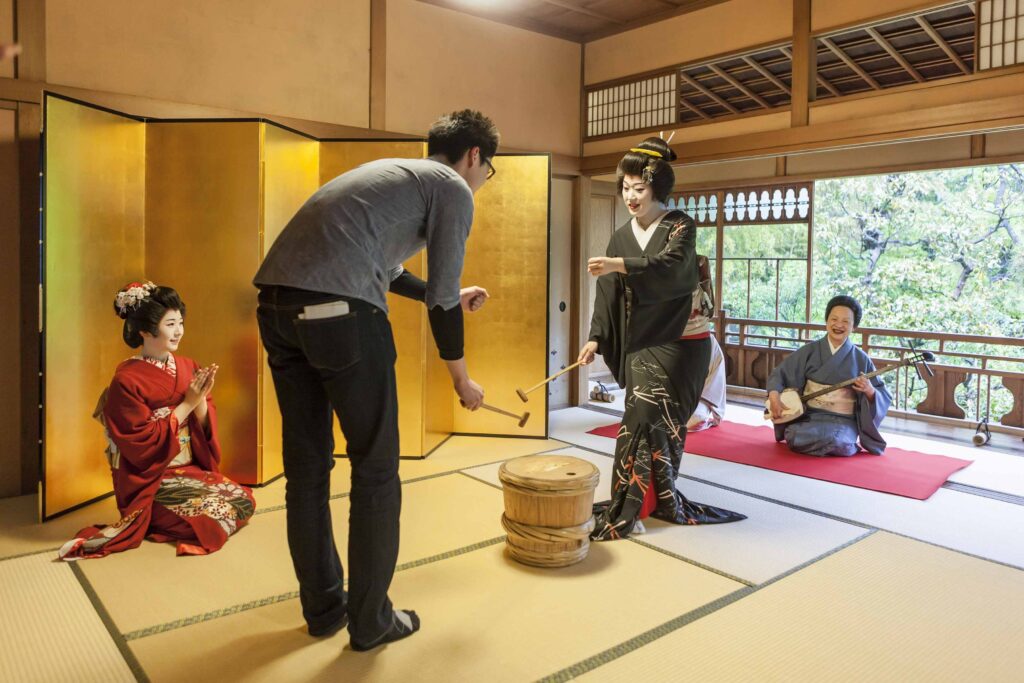
Did you know?
Niigata’s Geigi (芸妓, “girls of arts”) first appeared 200 years ago, catering to the needs of wealthy merchants who sailed from Hokkaido to Kyoto along the Sea of Japan. These merchants traveled on boats called “Kitamaebune” 北前船 (a Japan Heritage site since 2017) to buy and sell goods from harbor to harbor. This new maritime trade route facilitated cultural, culinary, architectural, and artisanal exchanges in these harbors. Niigata’s Geigi are a manifestation of these cultural exchanges, as the tradition of geishas, a form of entertainment that originated in Kyoto, was brought to Niigata during this time.
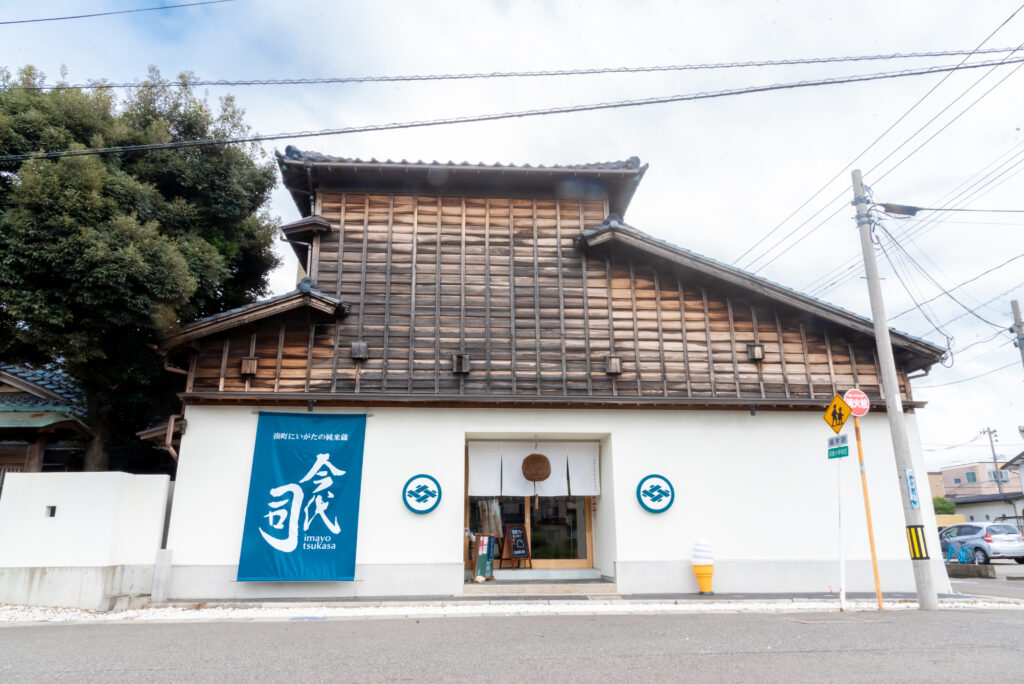
The Imayo Tsukasa sake brewery and other sake tasting activities
Distance from Niigata station: 15 min. on foot.
The Imayo Tsukasa brewery, established in 1767, boasts nearly three centuries of expertise in sake brewing. Renowned for its exceptional sake, the brewery consistently earns awards for taste, packaging, and innovation. The brewery offers free tours (with English tours costing 400 yen per person), but reservations are required via their website. Some sake samples are available for free tasting, but we recommend trying the premium sake tasting (1000 yen per person) to experience a wider selection of Niigata’s diverse and unique sake.
For those short on time, Ponshukan, a sake-tasting space inside Niigata Station, offers a glimpse of Niigata’s sake. Here, you can sample around 90 varieties of local sake; 500 yen gets you five coins to use in the different sake dispensers.
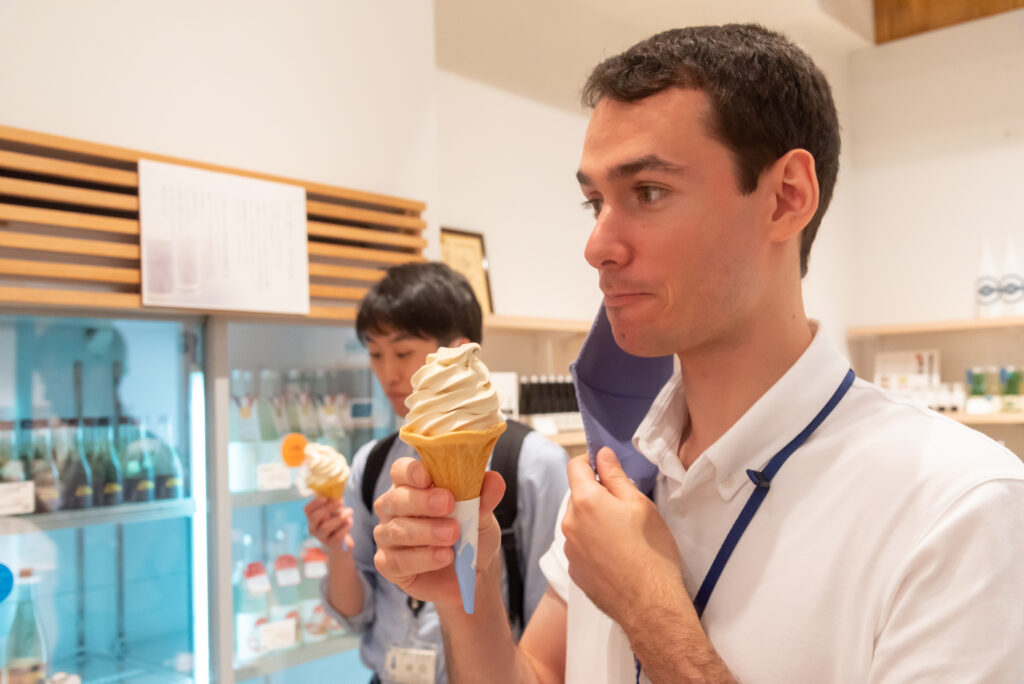
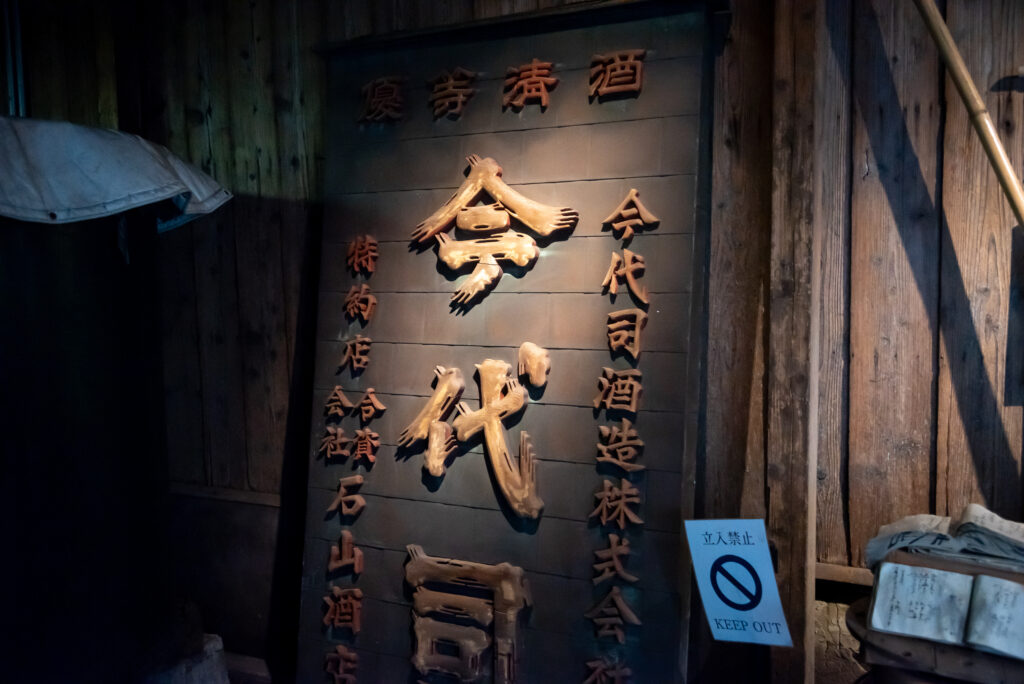
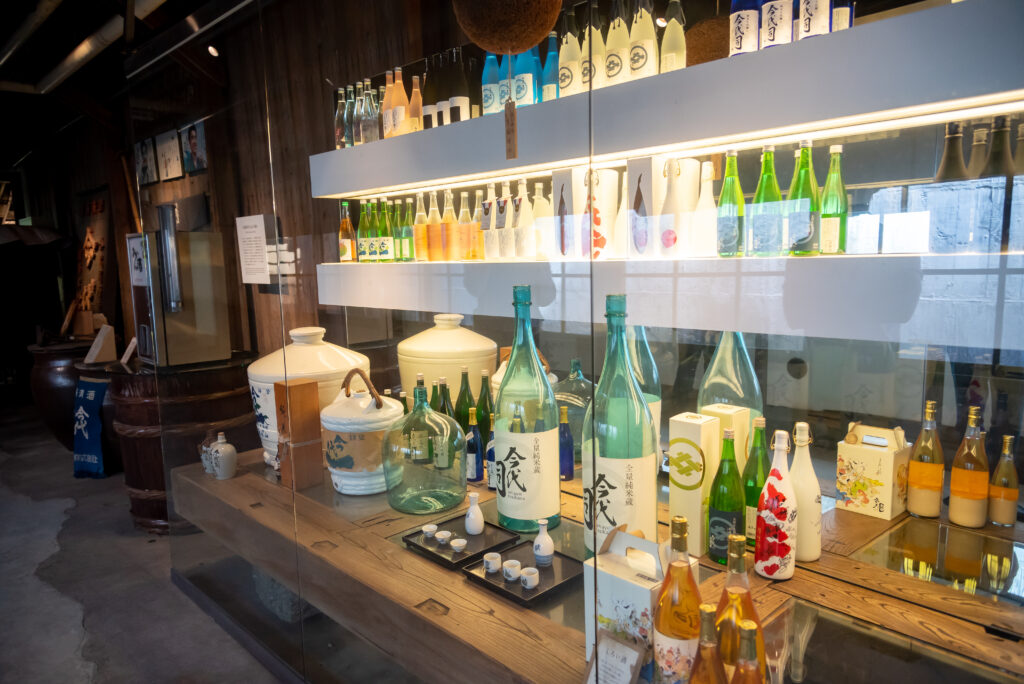
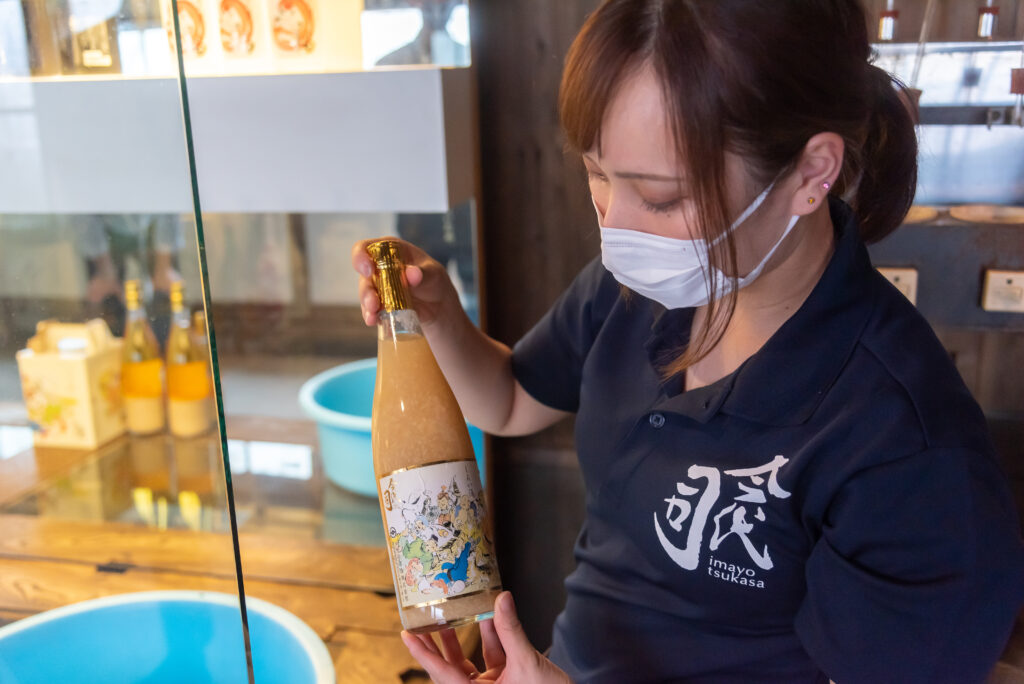
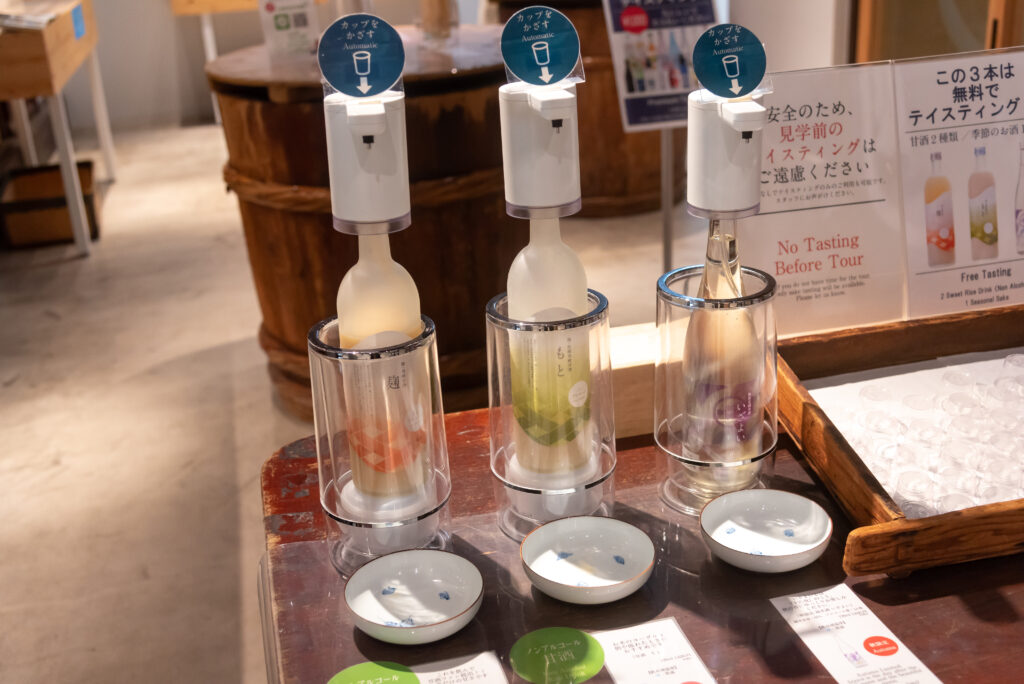
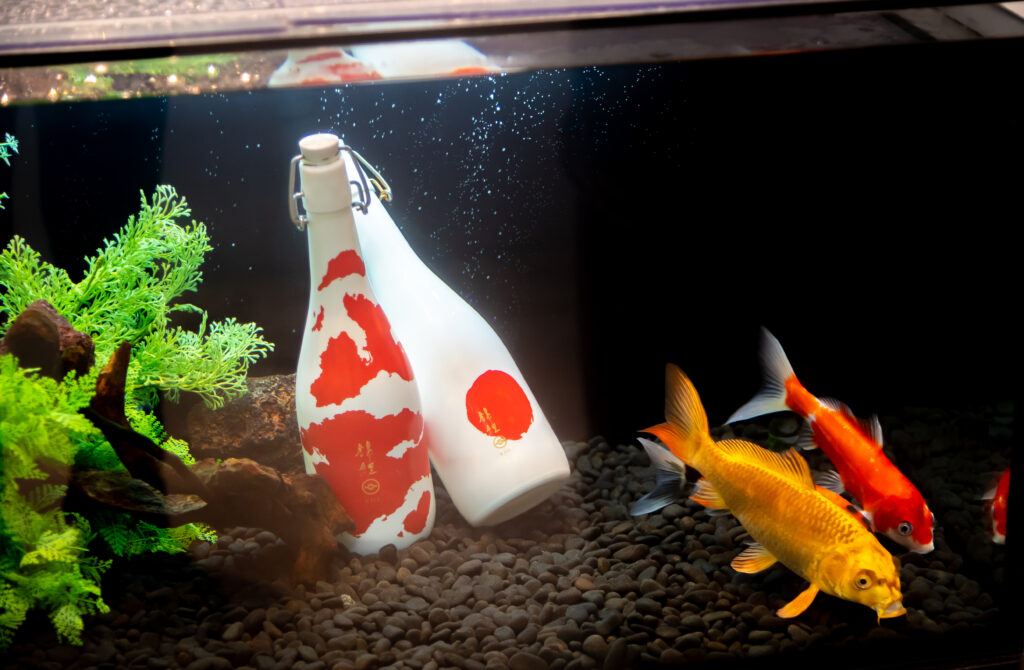
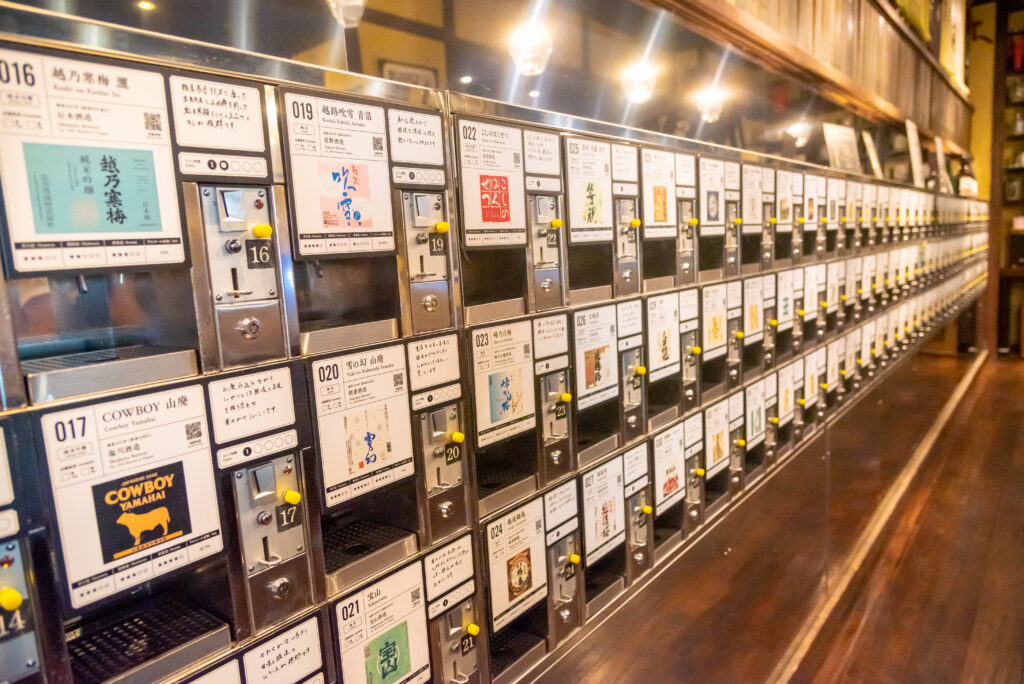
Did you know?
Niigata Prefecture is Japan’s number one sake producer in terms of the number of “sakagura” (酒蔵, “sake brewery”), boasting the largest number of sake breweries in the country. This is due to Niigata’s ideal environment for cultivating rice: abundant snowfall in the winter, warm and humid summers, and extensive fields with high-quality water. The perfect year-round temperature and rich soil nutrients result in plentiful crops and delicious rice, which is essential for producing top-quality sake.
What to eat in Niigata
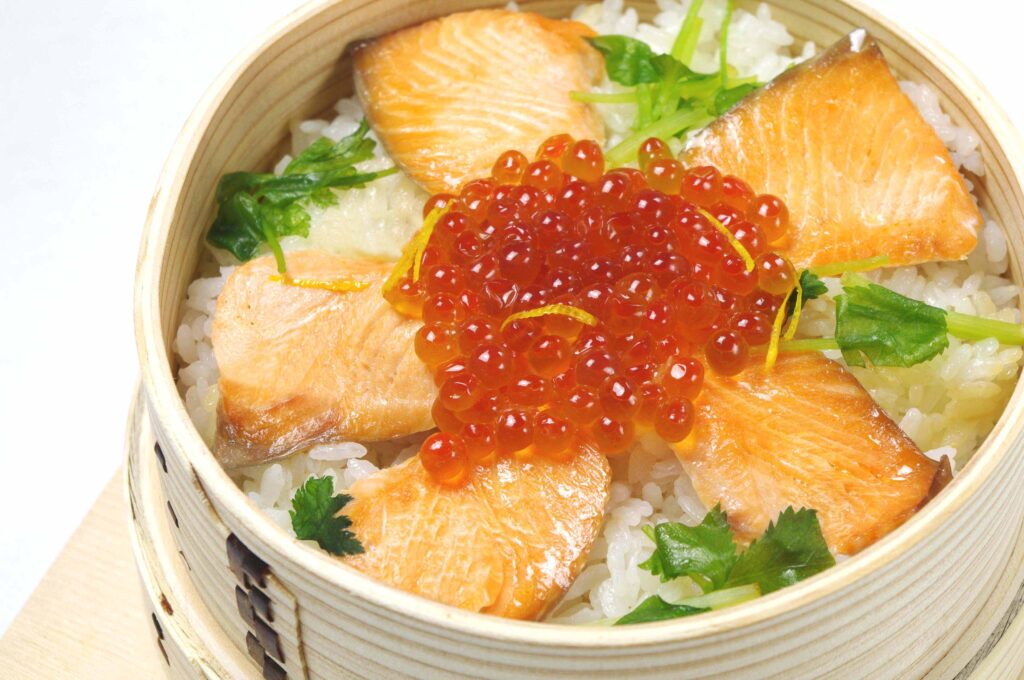
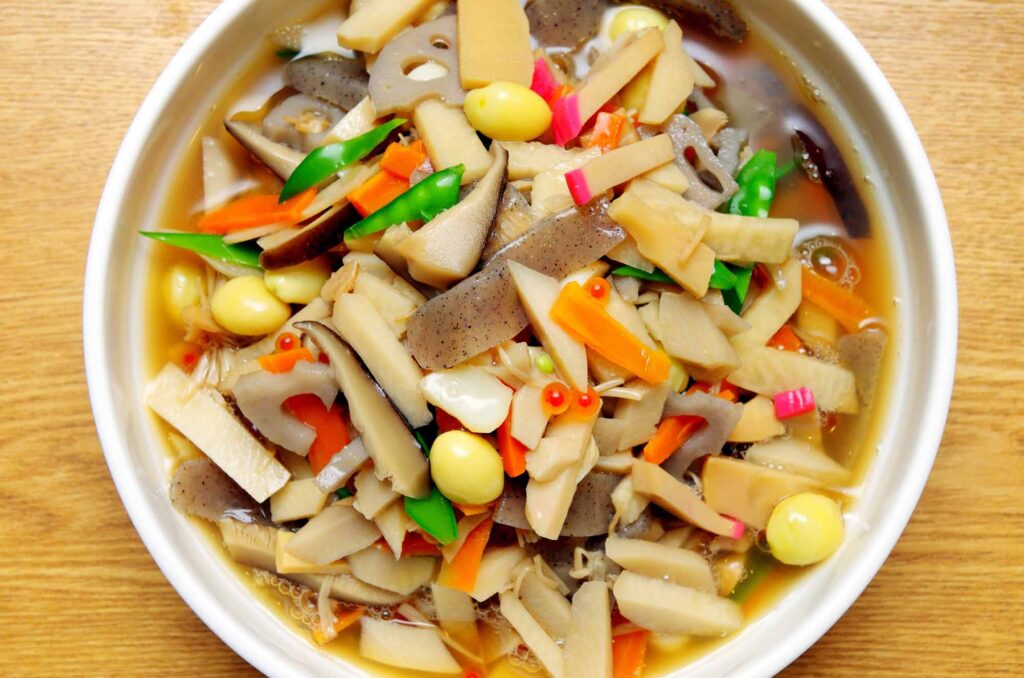
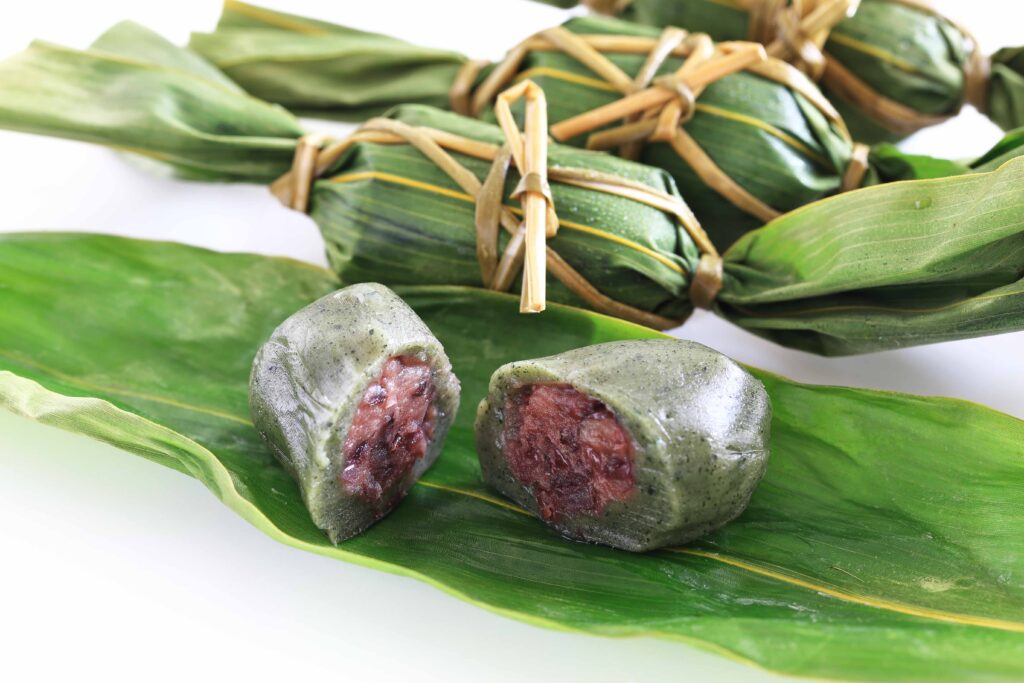
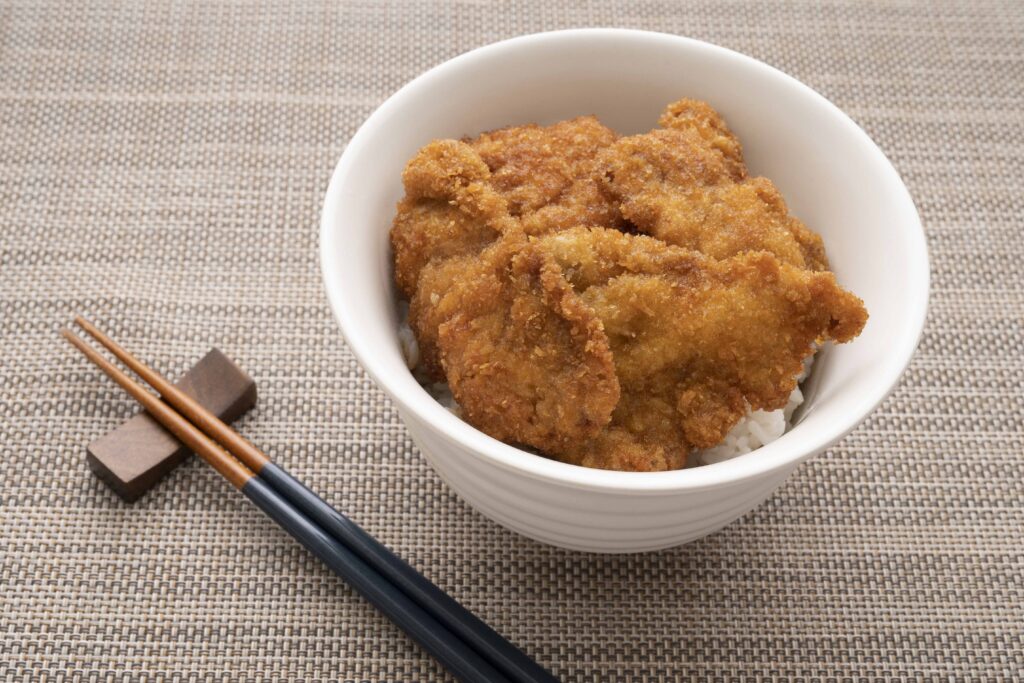
Plenty of stay options around Niigata station! Use your favorite booking website to choose the one that fits your needs.
For more ideas of things to do in Niigata…
(D2) Off to Sado Island!
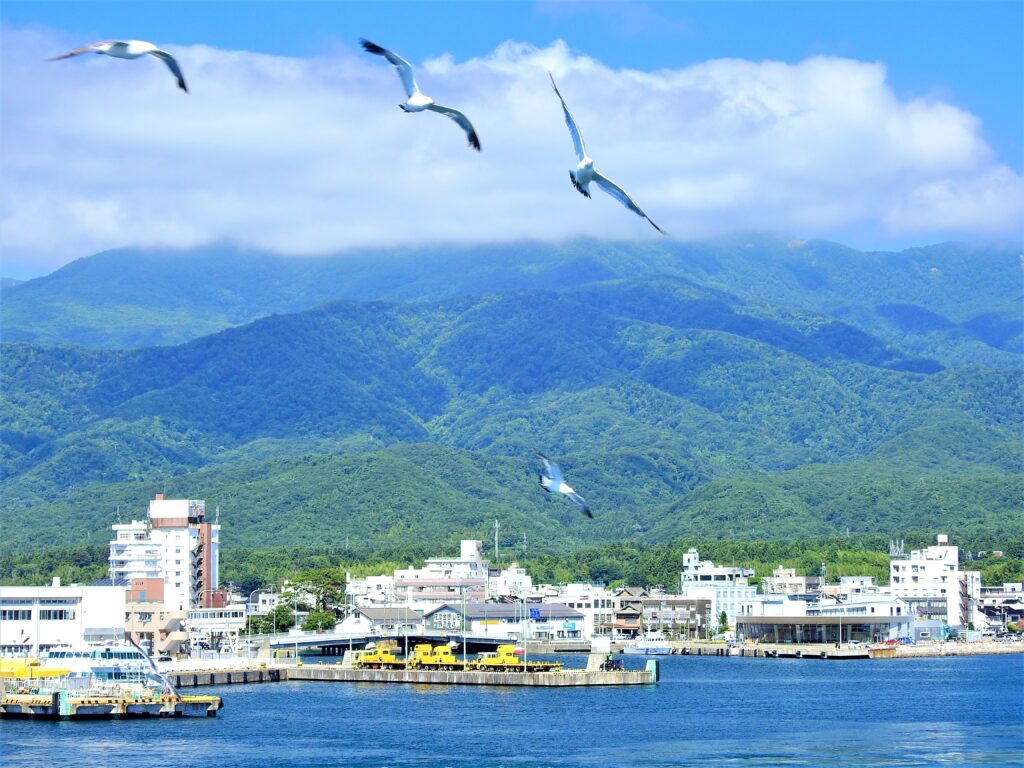
-Jetfoil (the fastest way to reach Sado Island, around 65 min.) : From Niigata port to Ryotsu port 7,050 yen/adult (one way) – 13,490 yen/adult (two-ways)
-Car ferry (the cheapest way to reach Sado Island, around 2 hours 30 min.) : From Niigata port to Ryotsu port starting from 2960 yen/adult (one way)
Sado Island, a little paradise on the sea just one hour away from Niigata by jetfoil boat, is beloved by hikers and enthusiasts of traditional Japanese arts. The island is famous for the Sado Taiko drums and offers excellent opportunities for wildlife photography. In 2024, Sado’s Gold Mines were listed as UNESCO World Heritage sites, highlighting the island’s cultural significance in Japan’s history. Sado Island is renowned for its seafood and its historical connection to maritime activities. Visitors can enjoy “taraibune” tub boat tours, diving sessions, and sea kayaking.
Here is a list of recommended activities and sights on Sado Island:
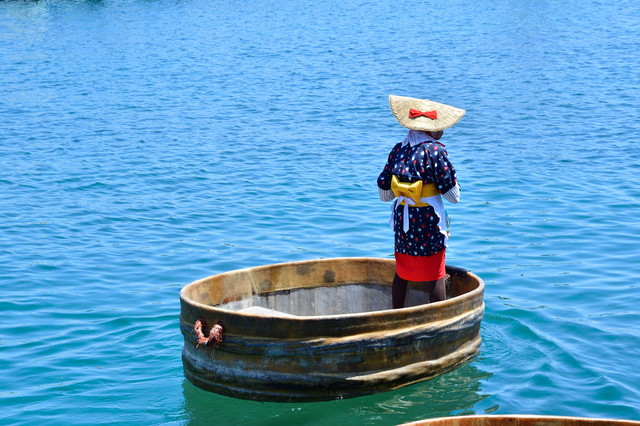
Taraibune tub boat tour on the sea at Rikiya Kanko Kisen
The tub-boats were devised around the beginning of the Meiji era. They were repeatedly improved from laundry tubs into the current design of the tub-boats.
The idea originated on the Ogi Coast, where the many hidden rocks made the tub-boats more stable and easier to maneuver than small boats.
Tub-boats were used to catch turban shells, abalone, and seaweed.
The tub-boats used for sightseeing are made slightly larger than those used for actual fishing.
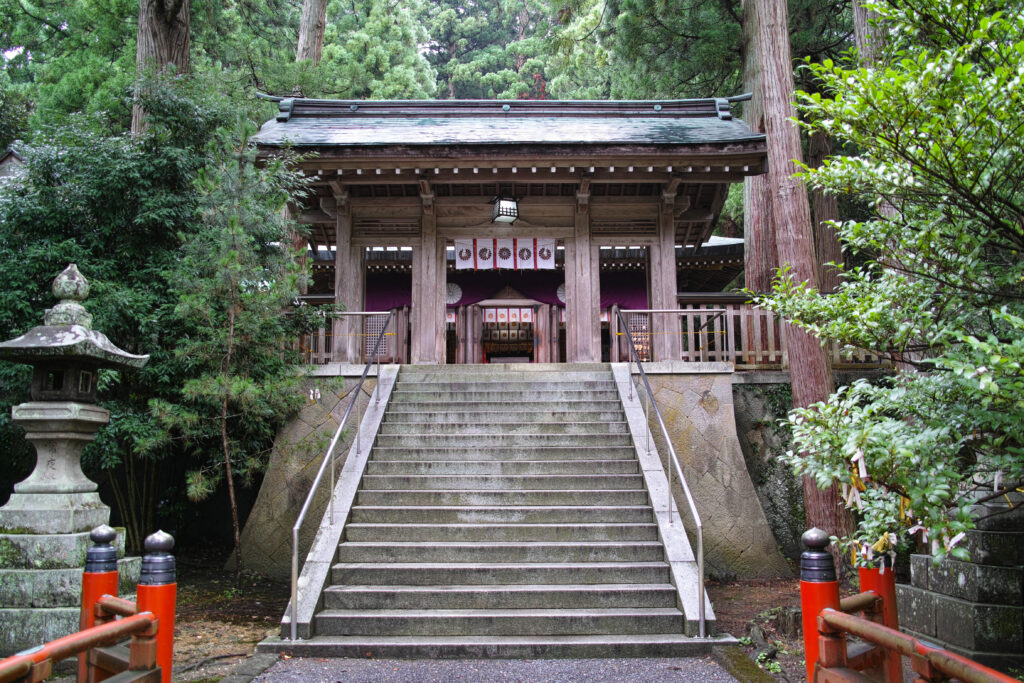
Cycling along the island’s shrines
With fares ranging from 500 yen for 2 hours to 2000 yen for 2 hours, the island proposes in the Tourism Information Center electrical bicycle-rental plans called “Eco-da-chari”. The best way in our opinion to discover the island’s little shrines and temples that are full of wonders. Did you know there was a “Rabbit Temple” (Chokokuji Temple), where one can find the giant statue of a Rabbit Bodhisattva and many baby rabbits wandering around? The monk-in-charge of the temple fondly takes care of them.
Website in English (bicycle rental)
Website in Japanese (Chokokuji temple)
What to eat in Sado
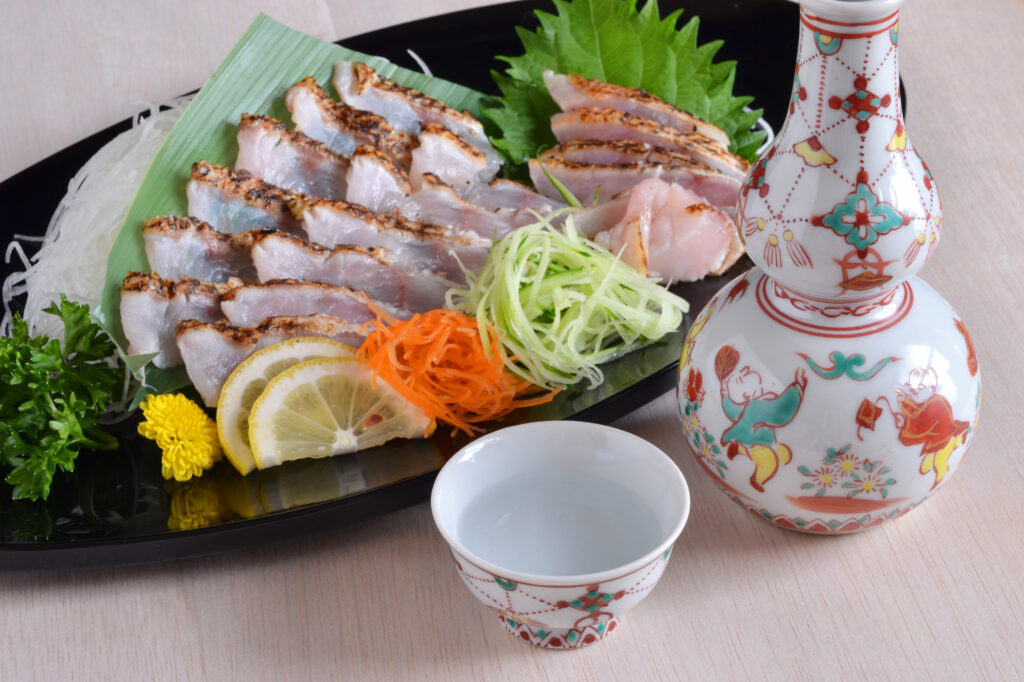
Seafood and more specifically: sashimi!
There are many places in Sado to taste the freshest sushi, sashimi and seafood in general. But never forget to pair your sushi with some local sake.
Where to stay in Sado?
Yahatakan, an hotel with open-air onsen (rotenburo). Website
Other places to stay (Sado’s DMO’s website)
More ideas of things to do in Sado
(D3) Off to Tsuruoka & Mt. Haguro!
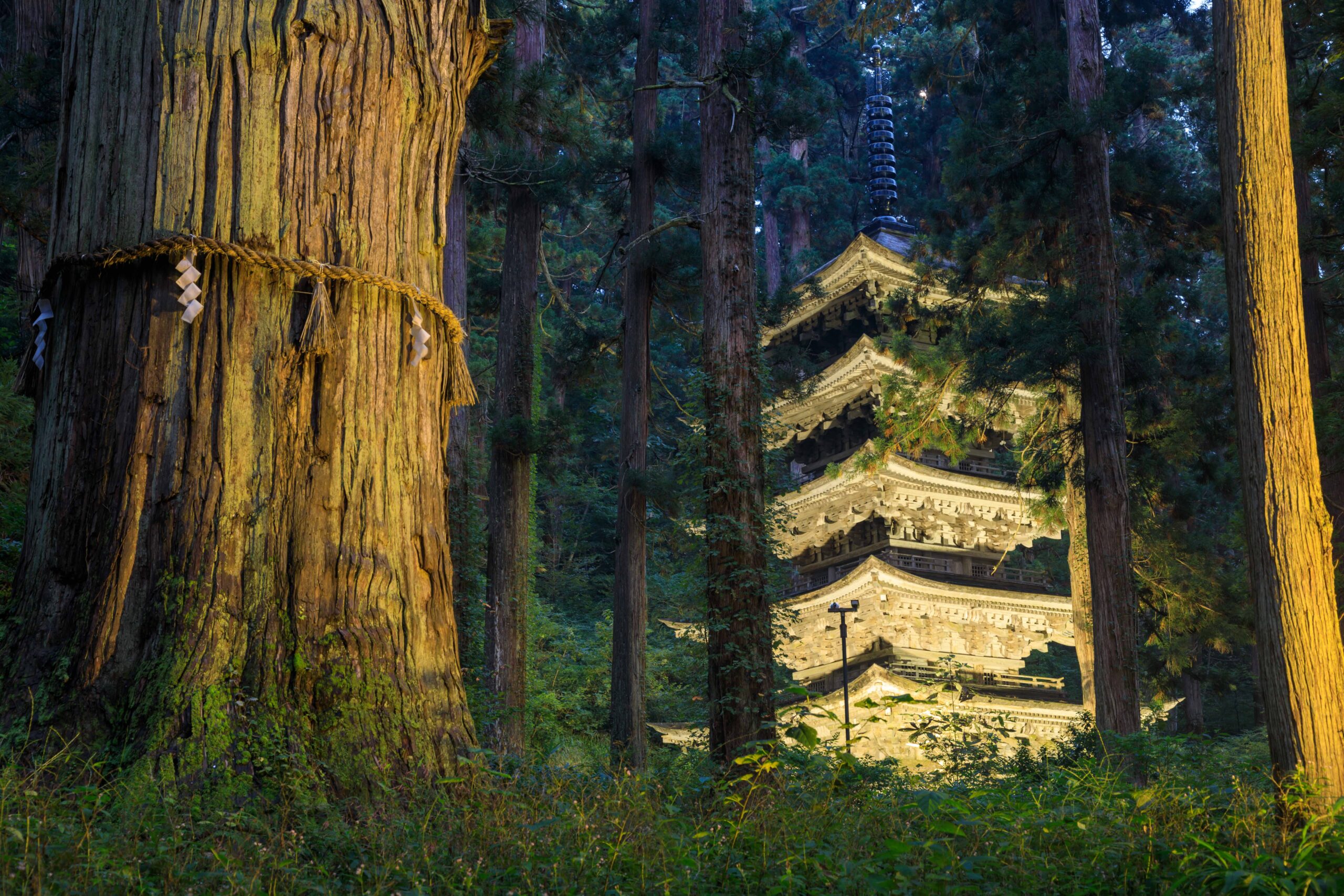
Take the local train (JR Limited Express Inaho) to Sakata (1 hour 49 minutes). Get off at Tsuruoka Station (or Atsumi Onsen if you’re staying there).
→ For the quickest ride, be sure to take the Limited Express Inaho, as other local trains can take twice as long!
Tsuruoka City (hi! that’s us!), once the castle town of the Shonai Clan, who governed the historic Dewa Province (Dewa no kuni 出羽の国, other phonetic version: Ideha no kuni いではの国) a now obsolete term that designated an area that used to cover Yamagata and Akita Prefectures), was and still is renowned as one of Japan’s top rice-producing regions. The Shonai Clan was famous for its military prowess, including their undefeated record during the Boshin War (1868) and the strict teachings based in Ogyu Sorai’s doctrine (deriving from Confucianism) of the Sakai family, their leaders. Besides its rich feudal past, Tsuruoka is a spiritual center for pilgrims and practitioners of ancient mountain-worshipping traditions like Shugendo, as well as esoteric Buddhist schools such as Tendai and Shingon. The sacred Dewa Sanzan, a pilgrimage route with over 1,400 years of history, includes three mountains: Mt. Haguro (414m), Mt. Gassan (1,984m), and Mt. Yudono (1,500m). In addition to its exciting hiking trails, and historical and spiritual significance, Tsuruoka is home to the world’s largest jellyfish collection at Kamo Aquarium, located near the Yunohama Onsen hot spring village, and is Japan’s first UNESCO Creative City of Gastronomy.
Here’s a plan to experience all of the above in a 2-day trip to Tsuruoka:
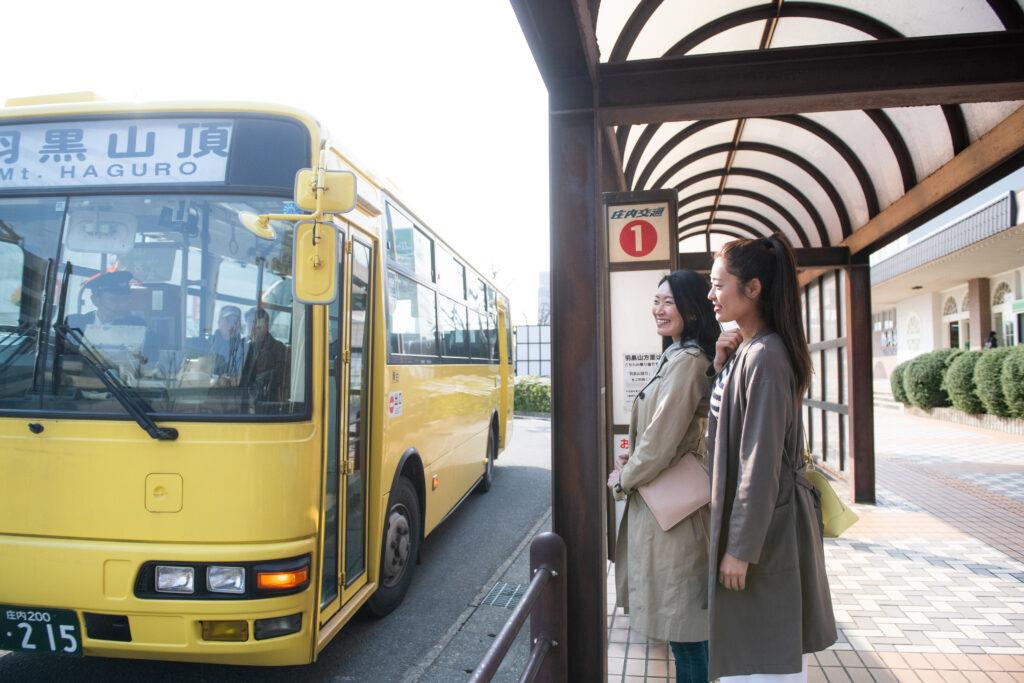
Arrive at Tsuruoka station (in Japanese: Tsuruoka ekimae 鶴岡駅前)
If you came with the Limited Express Inaho bound for Sakata from Niigata at 8:22, you’ll arrive at Tsuruoka station at 10:12
From there, take the bus bound for Haguro-Gassan at the bus stop n°1. If you arrived at Tsuruoka with the first train, you’ll be able to pick the 10:43 bus.
I need help before continuing my trip!
In front of the station and the bus stations, there is a building called “FOODEVER”. Inside, you will find the Tsuruoka Tourist Information Center, where English-speaking staff will answer your questions and help you sort out any problem you have from 9am to 5:30pm. There are also coin lockers, toilets, a restaurant, seats, Wi-Fi, and tourist brochures at your disposal (the building is open from 9am to 10pm).
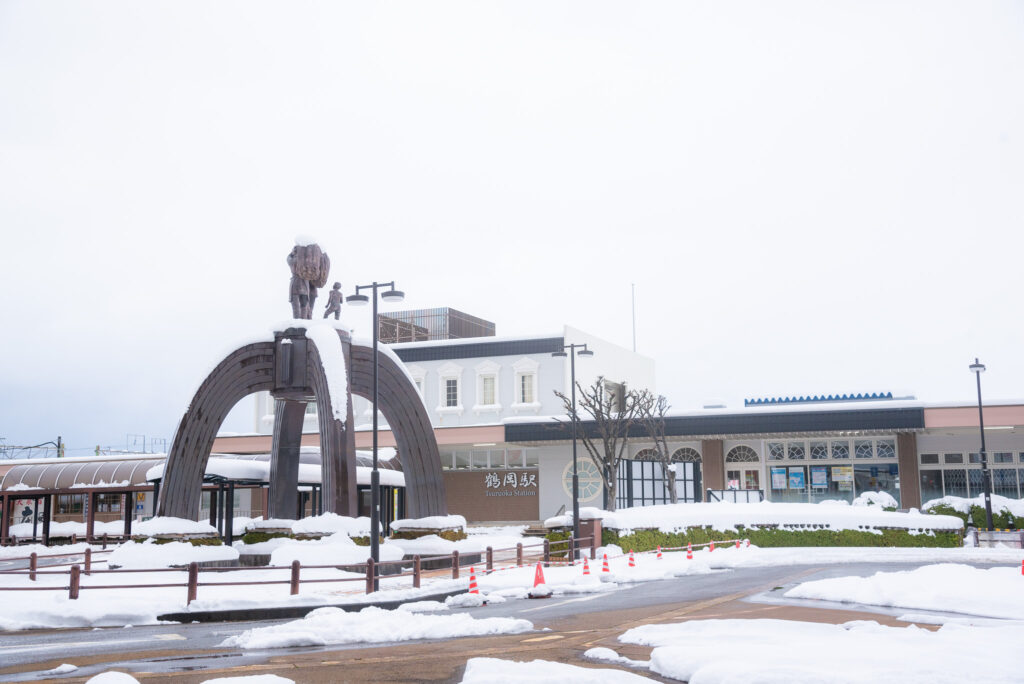
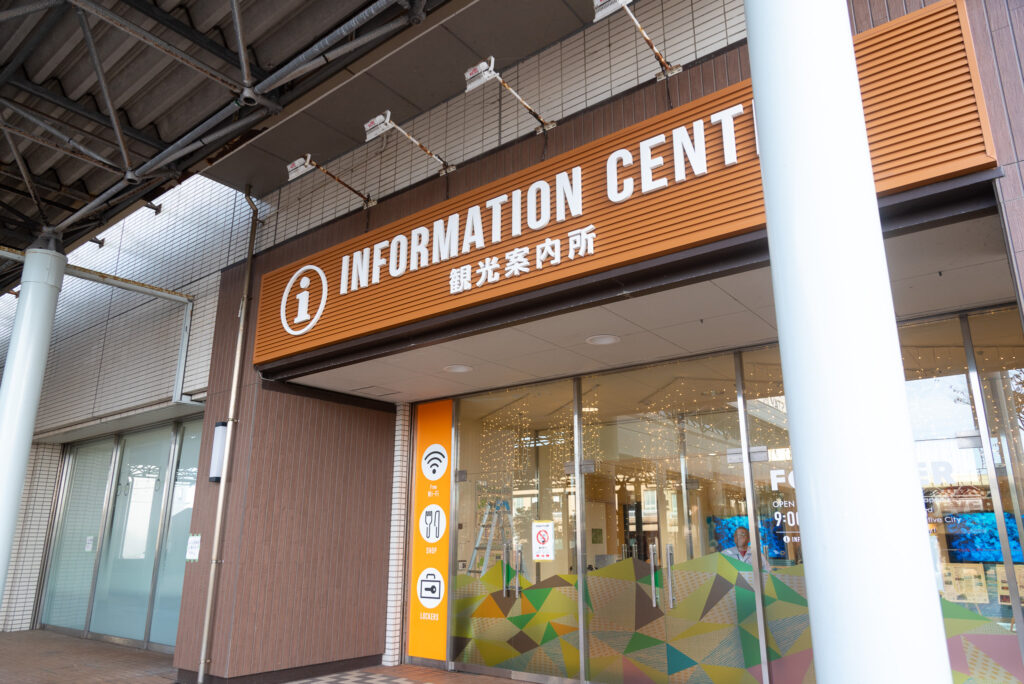
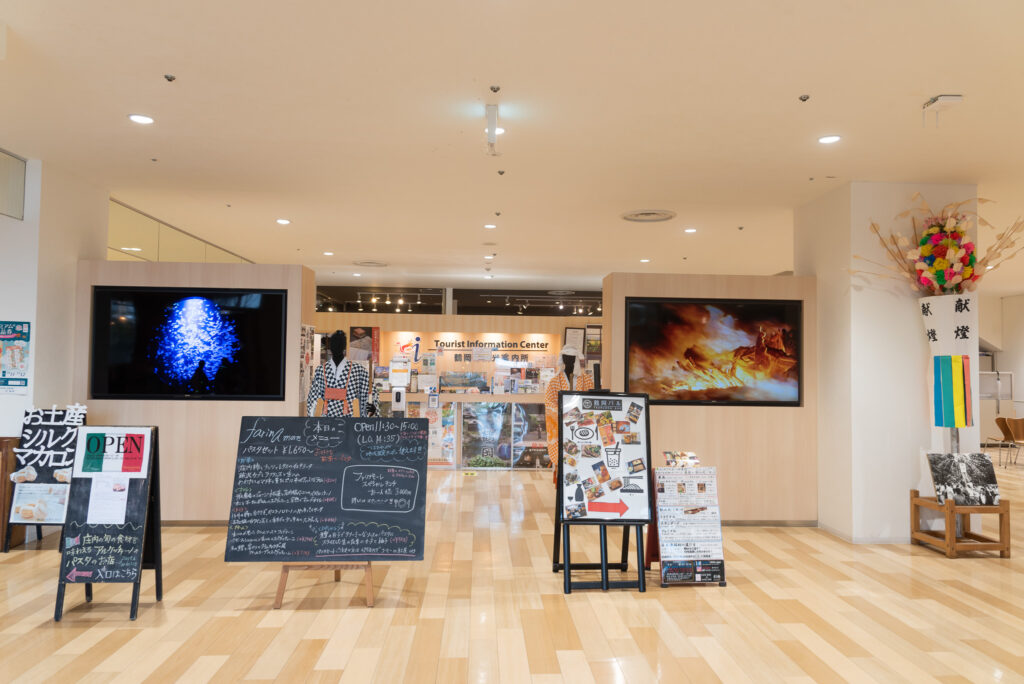
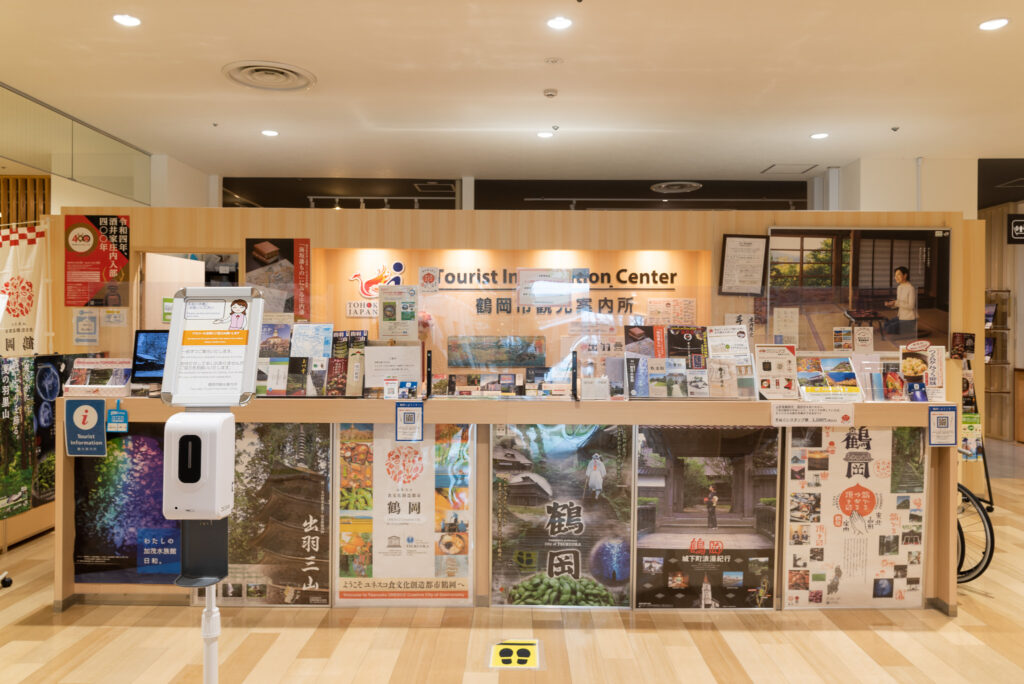
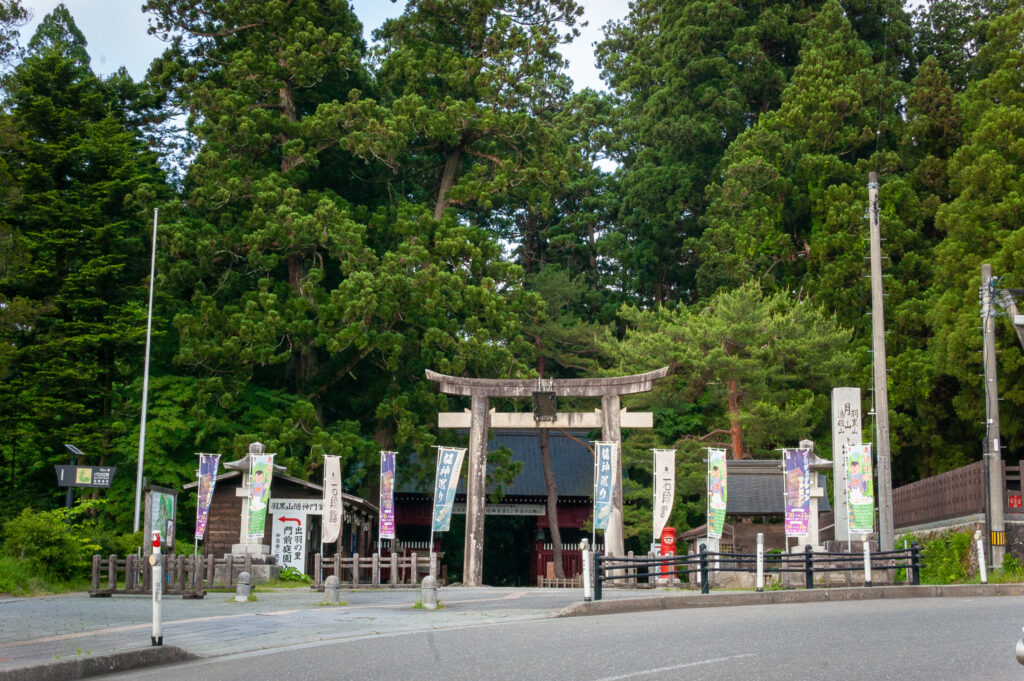
Get off the bus at Haguro Zuishinmon
Get off the bus at the bus stop called “Hagurozuishinmon”. If you took the 10:43 bus from Tsuruoka ekimae, you will arrive at Haguro Zuishinmon at 11:19. (reminder: Bus timetable)
Haguro Zuishinmon is the entrance gate to Mt. Haguro’s hiking path and its 2446 stones. You need to start here if you wish to see the Five-Storied Pagoda, the Suga Falls, Grandpa Cedar, Minamidani, and many little shrines and Buddhist remains. There is no toilet on the way so please use the toilets located inside the rest area near the bus stop. You can also have lunch at the soba restaurant “Okawa Shoten” 大川商店 (no reservation needed). If you place a reservation prior to your visit, you can have shojin-ryori for lunch at Saikan, the lodge/restaurant at the top of Mt. Haguro.
Now, time to start your hike (approx. 1 hour 30 minutes).
Please acknowledge that the duration of the hike depends on your hiking pace and the number of times you make pauses.
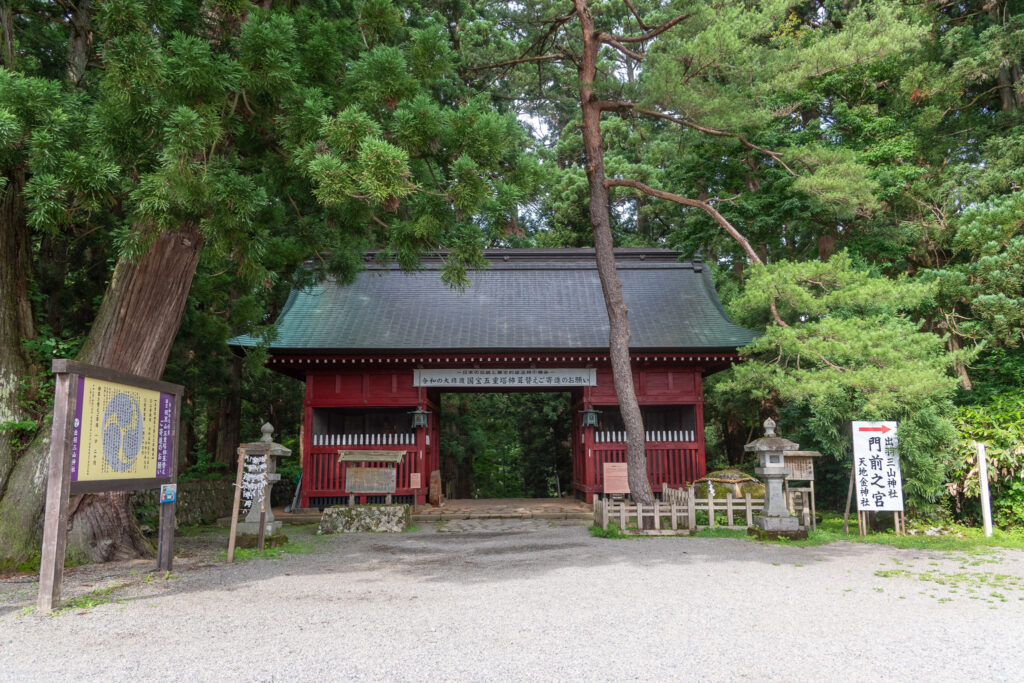
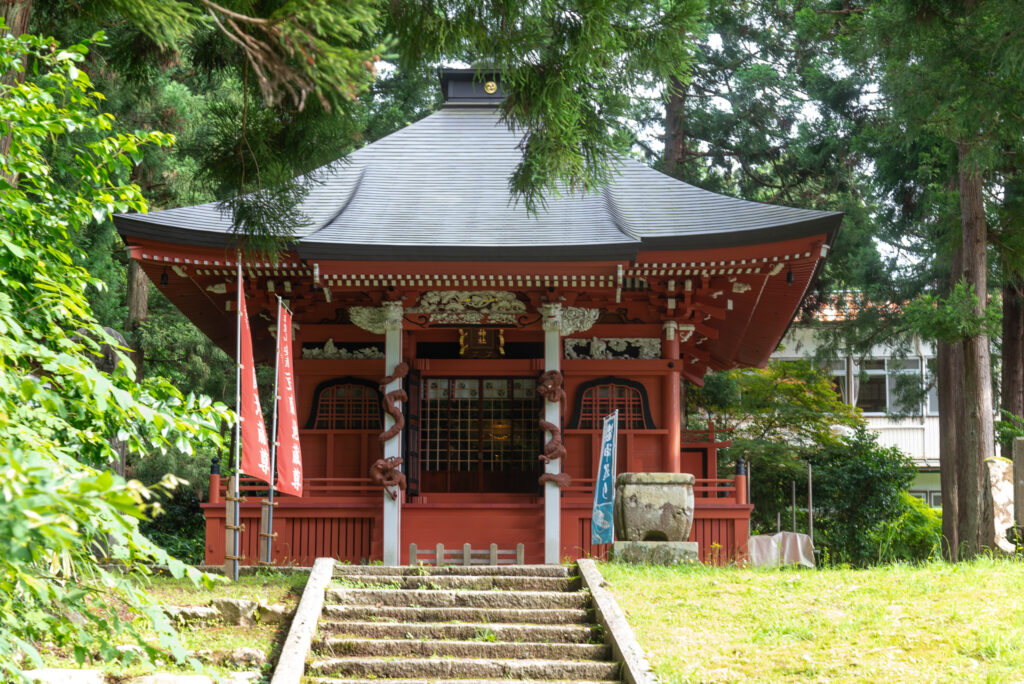
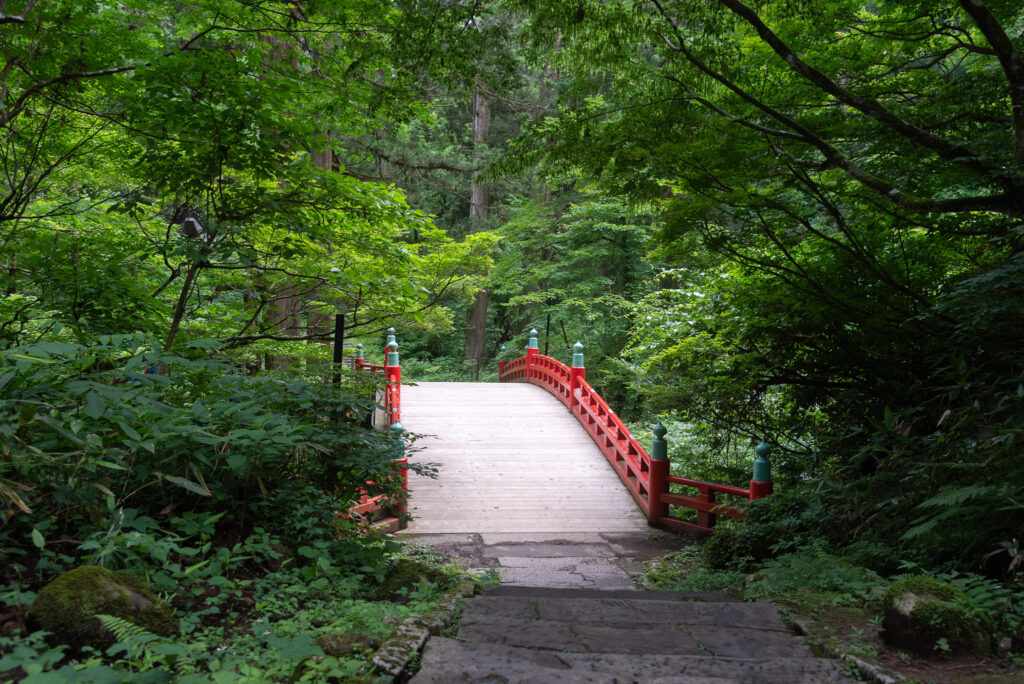
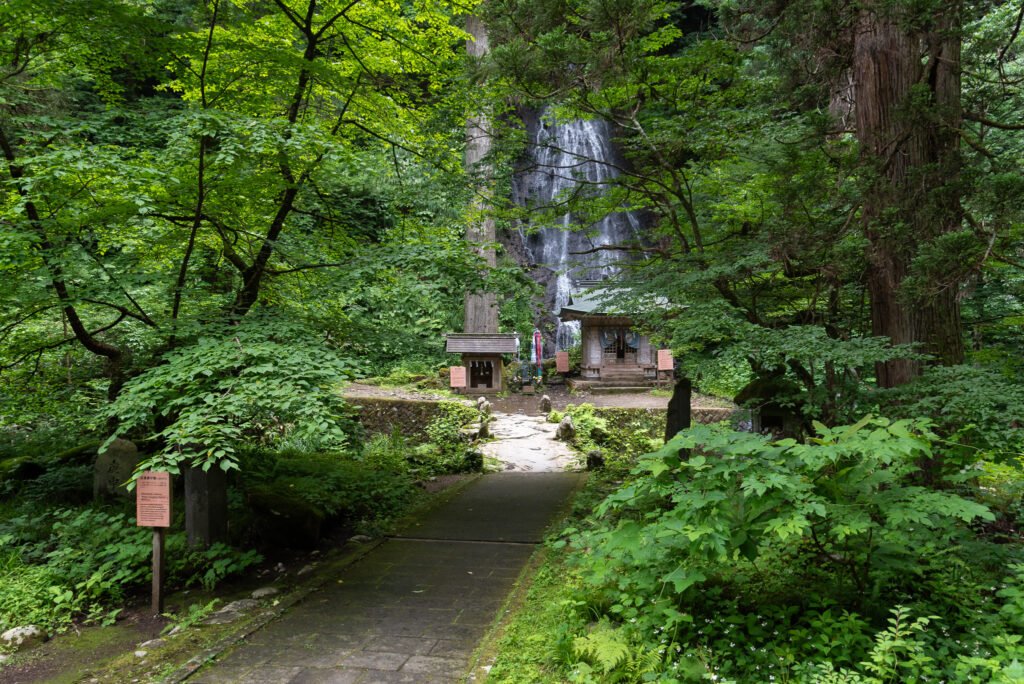
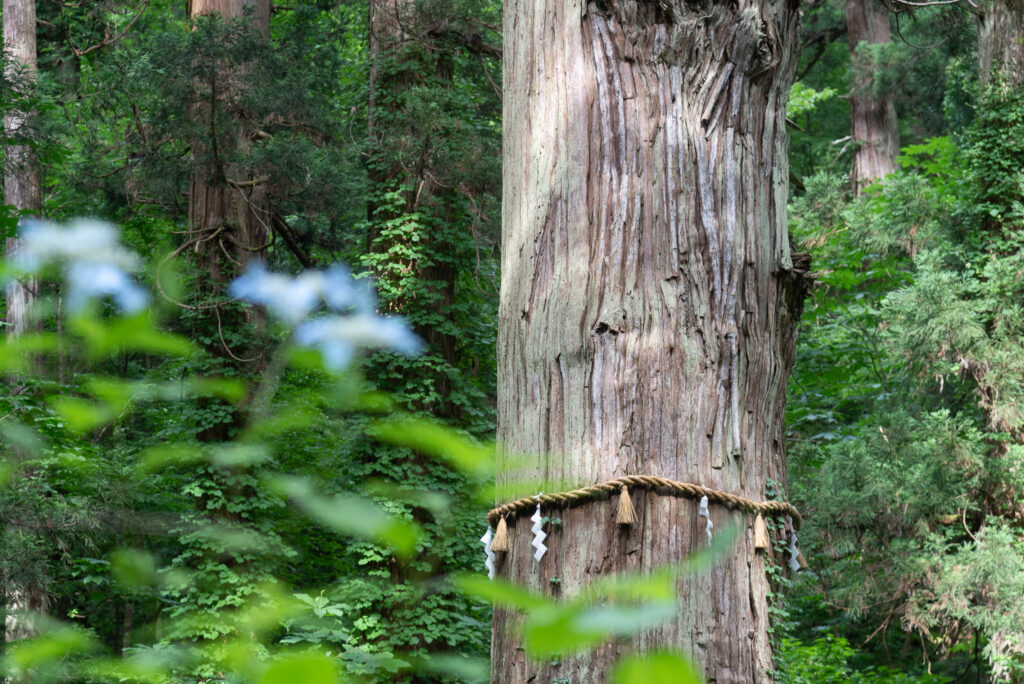
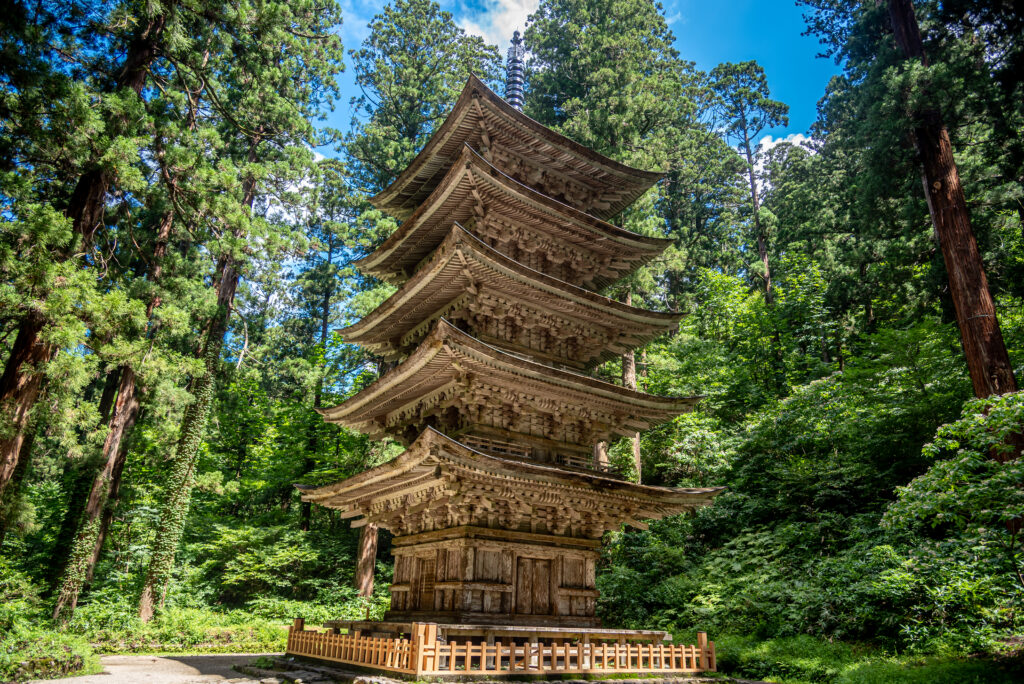
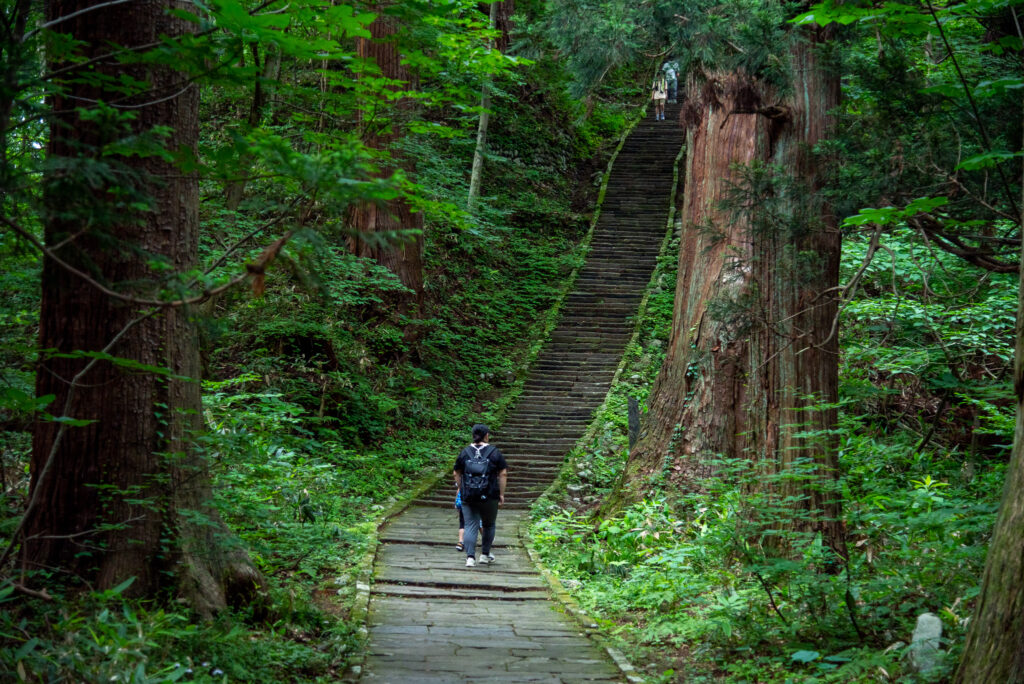
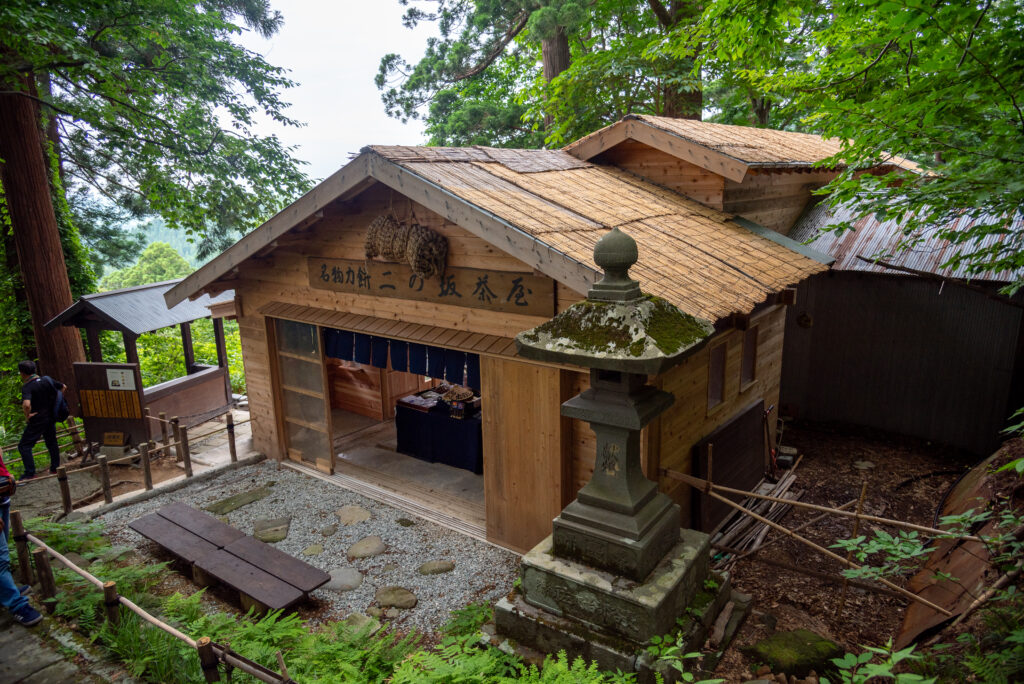
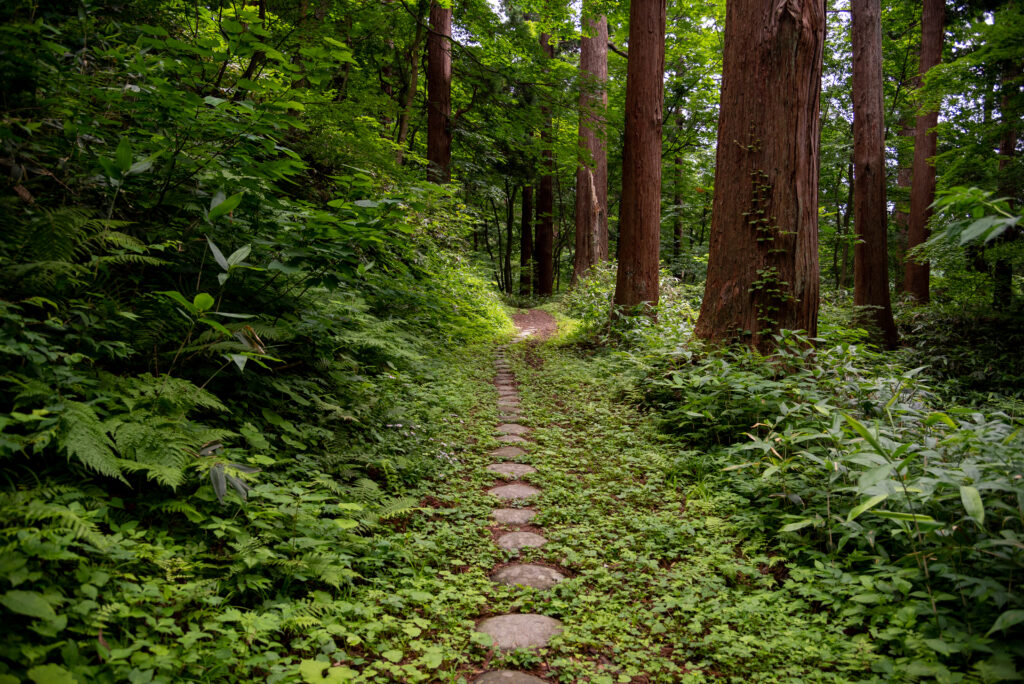
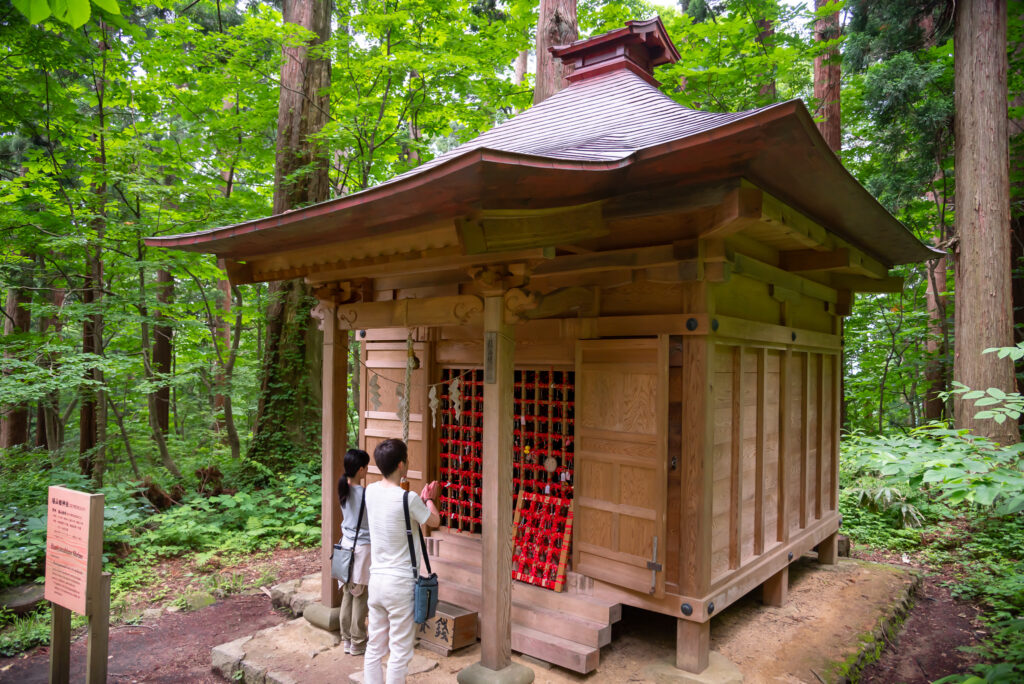
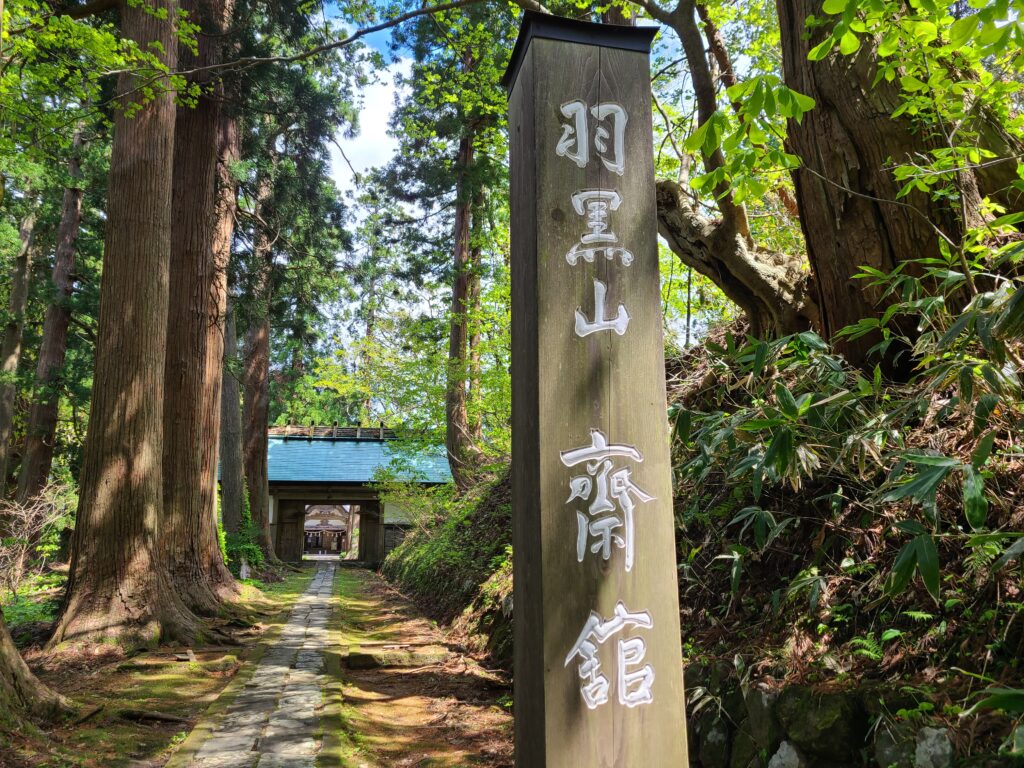
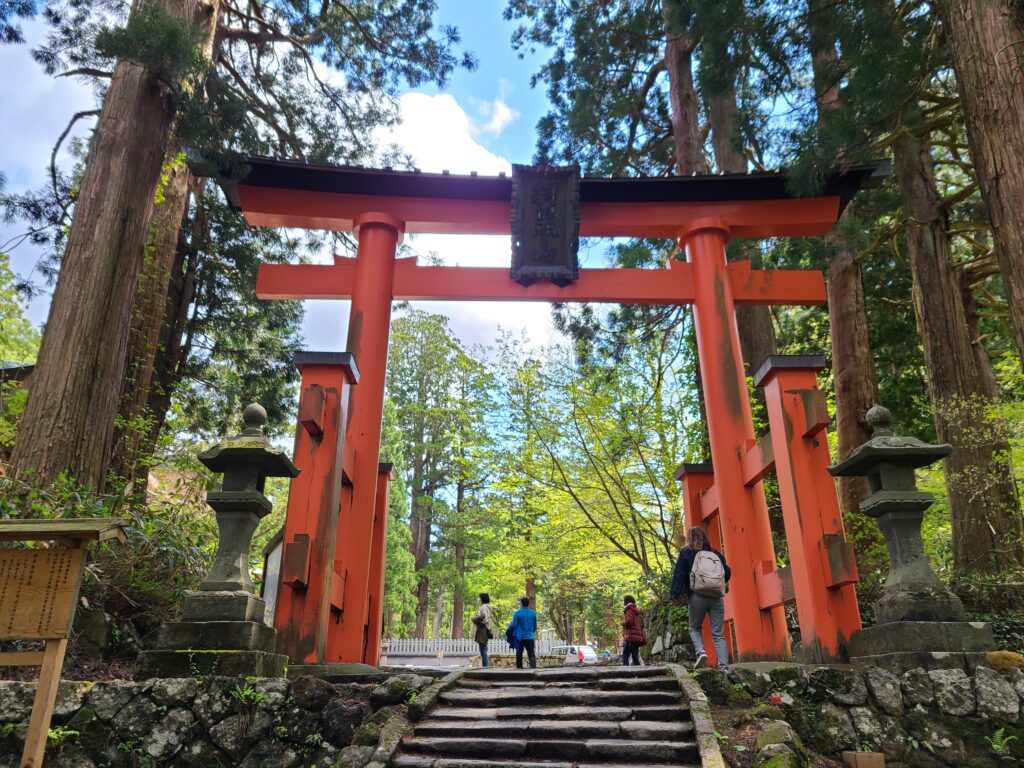
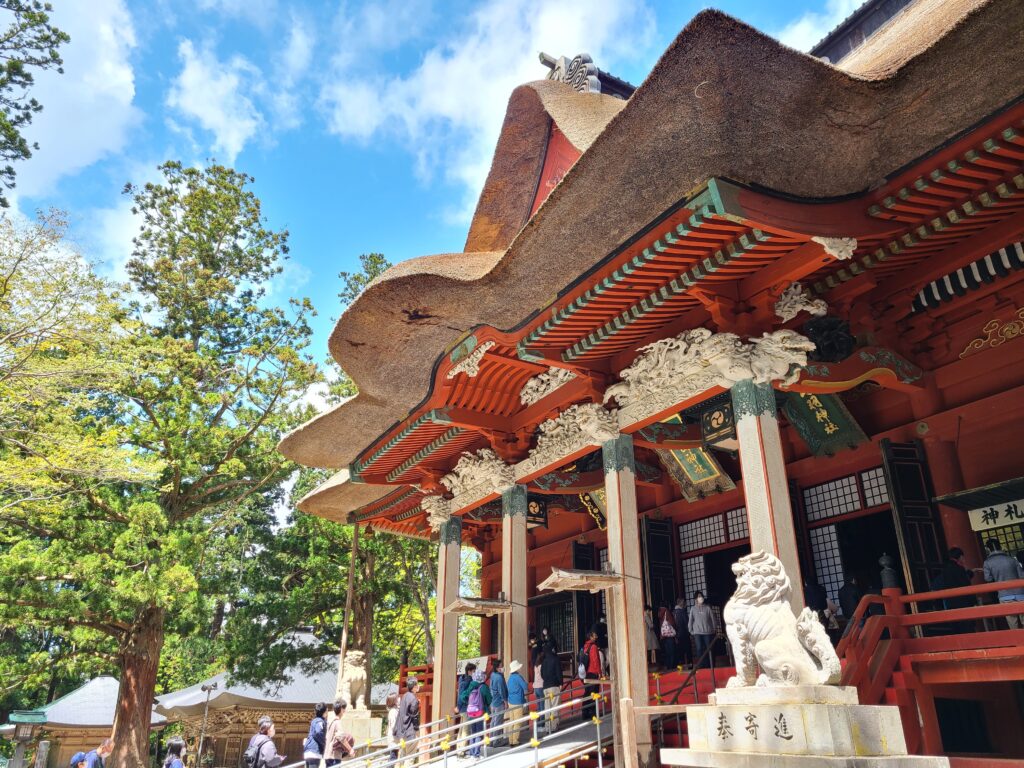
Where to stay in Haguro
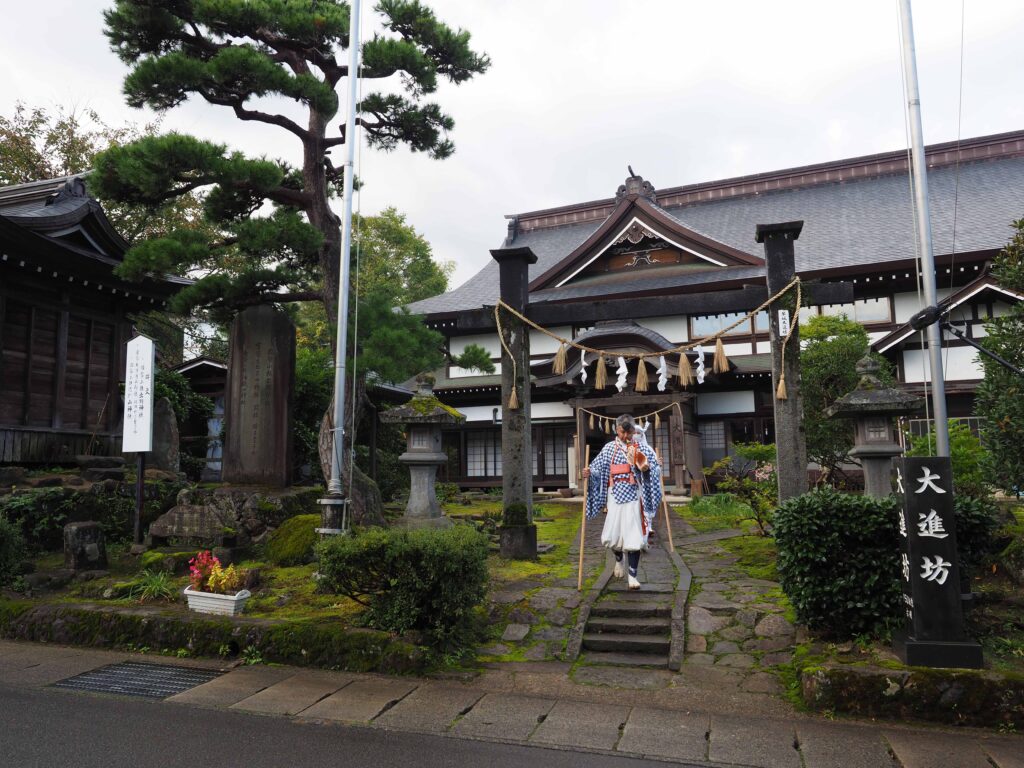
Stay at a shukubo lodge on Mt. Haguro
The original way to start the Dewa Sanzan pilgrimage/spiritual training is to stay at a Yamabushi shukubo lodge. Yamabushi are the practitioners of the Shugendo religion (a blend of Buddhist and Shinto practices, with many other beliefs intertwined together). In Mt. Haguro, most of the lodges belong to the Shinto religion, which is different from the shukubo in Koya-san for example (Buddhist). Hence, food at Haguro’s shukubo lodges is NOT vegetarian (Buddhist lodges often offer vegan dishes). They can be made vegetarian upon requests most of the time.
The Yamabushi families that run the shukubo can offer morning prayers, Haguro guided tours, rides to Mt. Gassan (paying) and other special services.
Did you know?
Mt. Haguro belongs to the National Park of Bandai-Asahi, along with the two other mountains of the Dewa Sanzan (Mt. Gassan & Mt. Yudono). The Bandai-Asahi National Park includes many natural sites over the prefectures of Yamagata, Niigata and Fukushima. This national park hosts a great variety of endemic animal and vegetal species. In Mt. Haguro, lucky visitors can spot the Japanese flying squirrel (musasabi in Japanese) or the moriaogaeru モリアオガエル frog who likes to lay eggs above Mt. Haguro’s Kagamiike pond in July.
Website for the Bandai-Asahi National Park
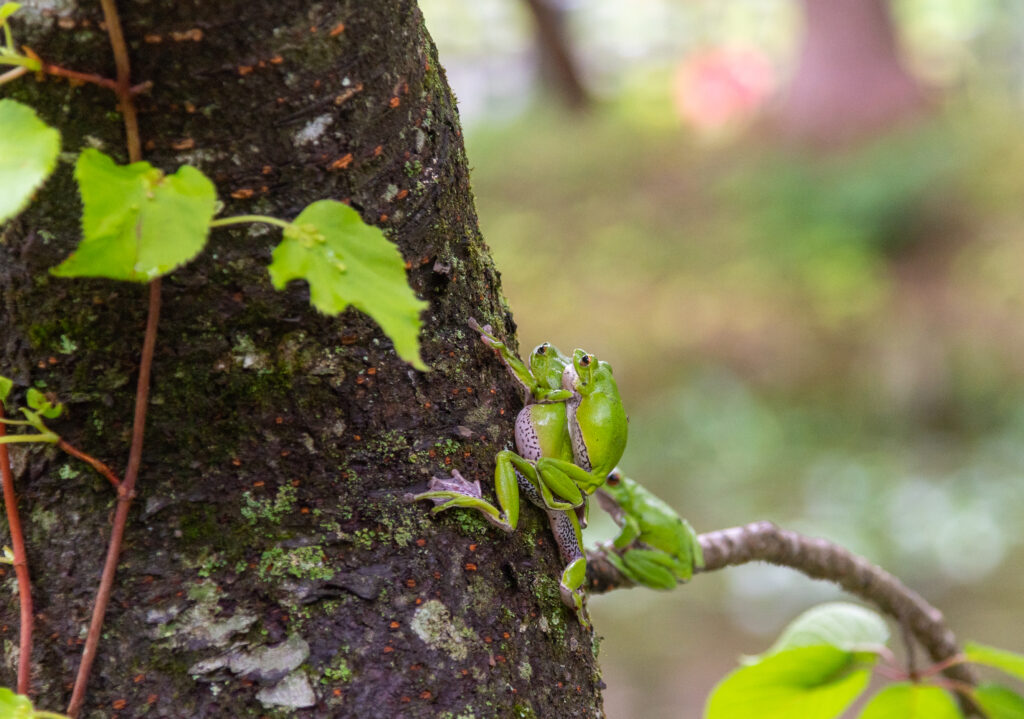
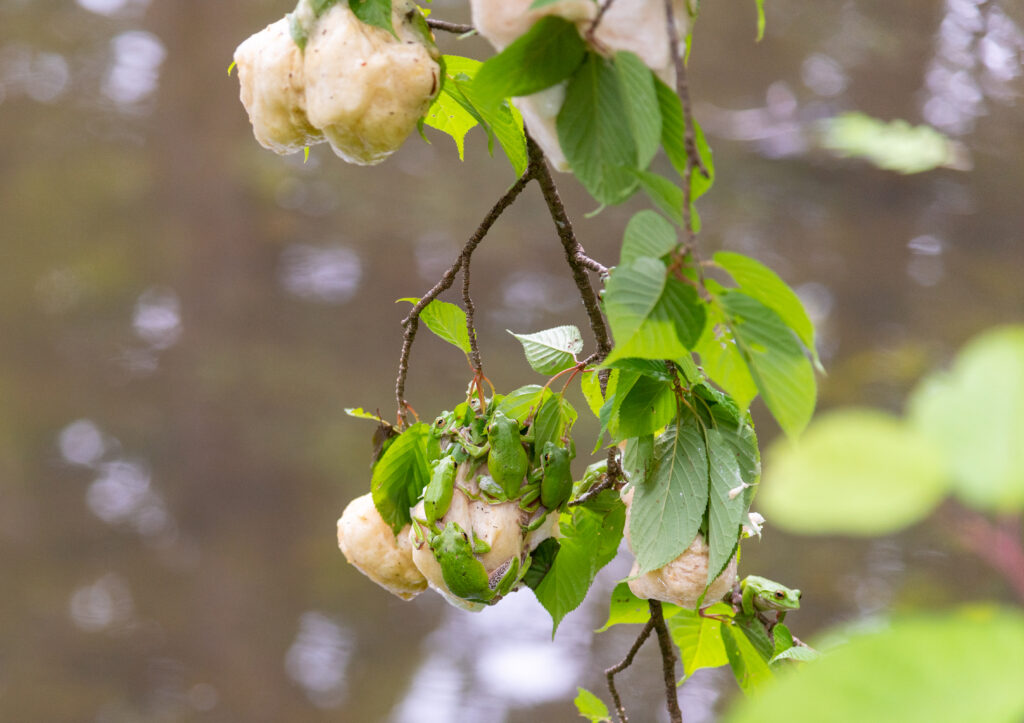

(D4) Kamo Aquarium, Zenpoji Temple and Yunohama Onsen
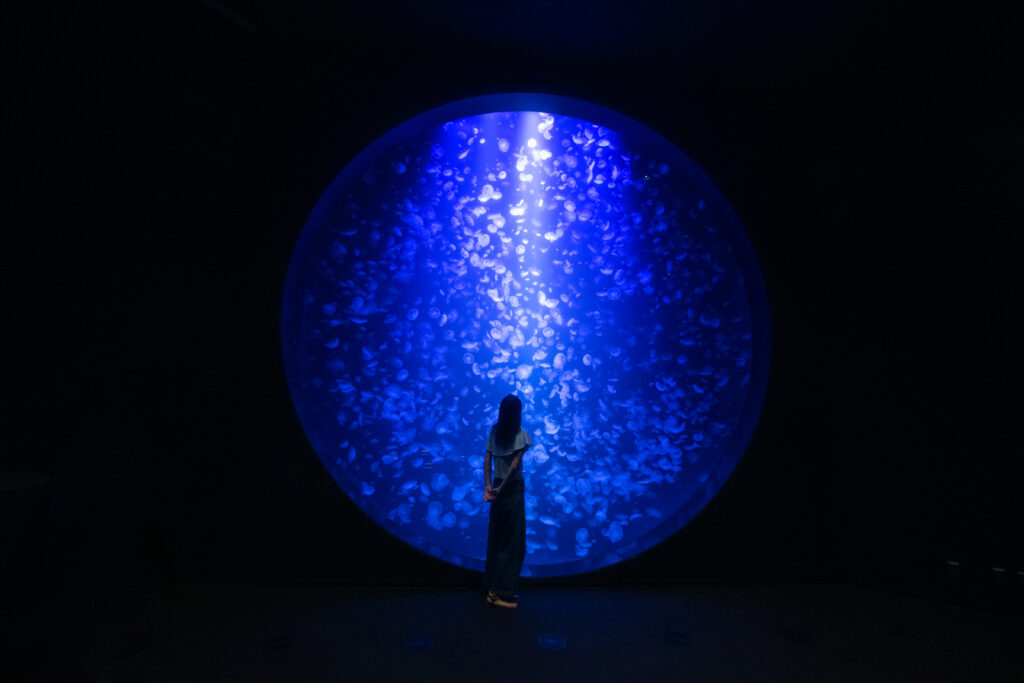
Wake up from your shukubo lodge, have the morning prayer, breakfast, and head back to Tsuruoka station (reminder: the bus stop is called “Tsuruoka ekimae”, bus timetable). If you are staying in a lodge at the foot of Mt. Haguro (a place called “shukubo-gai”, the “shukubo town”), there are many bus stops. The most recognizable is located near the Koganedo/Shozen’in temple (bus stop name: Koganedomae). Take the 9:21 bus. Arrive at Tsuruoka station at 9:55.
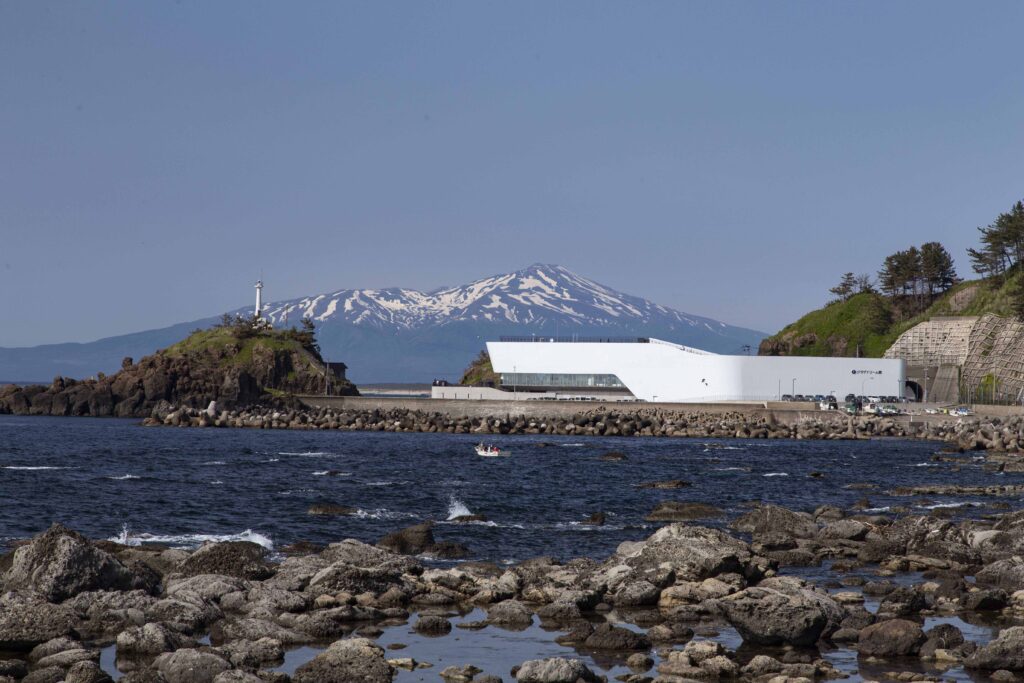
Go to Kamo Aquarium
Take the bus that goes to Yunohama Onsen via Kamo Aquarium at 10:38 from Tsuruoka ekimae’s bus stop n°2. (bus timetable) Arrive at the aquarium at 11:19.
The entrance costs 1500 yen per adult.
You can have lunch at Okimizuki, the restaurant inside the aquarium. Orders need to be placed through the ticket dispenser machine at the entrance of the restaurant. You have a plethora of choice: seafood menu, fish tempura, or even jellyfish ramen! Will you feel adventurous that day to try the jellyfish dishes? Estimated visit time at the aquarium : 1 hour (more if you wish to take pictures or see the performances)
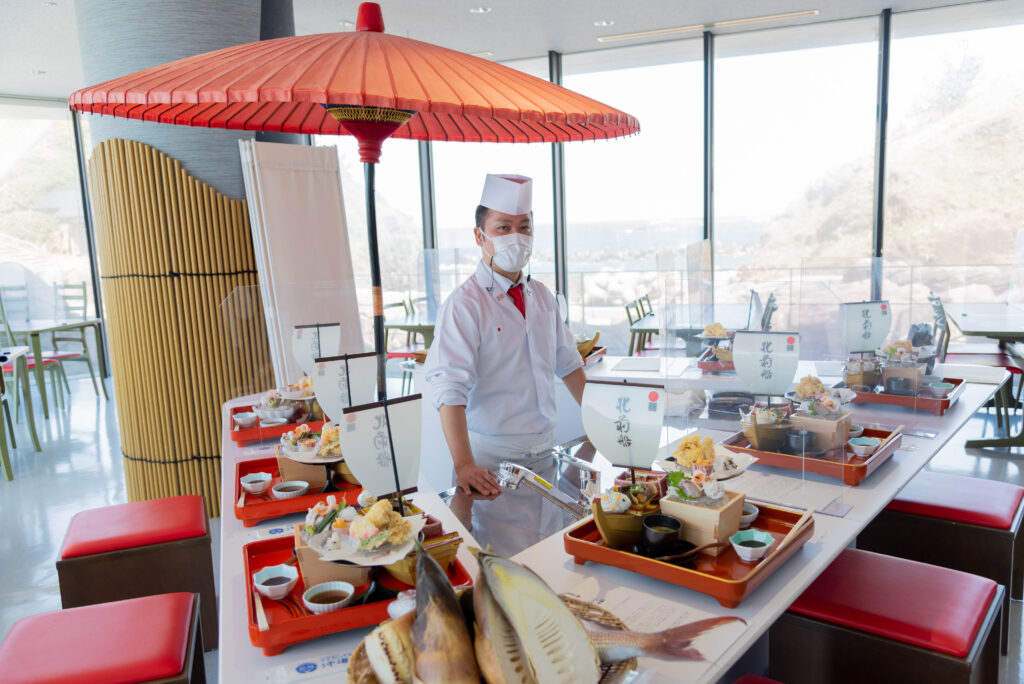
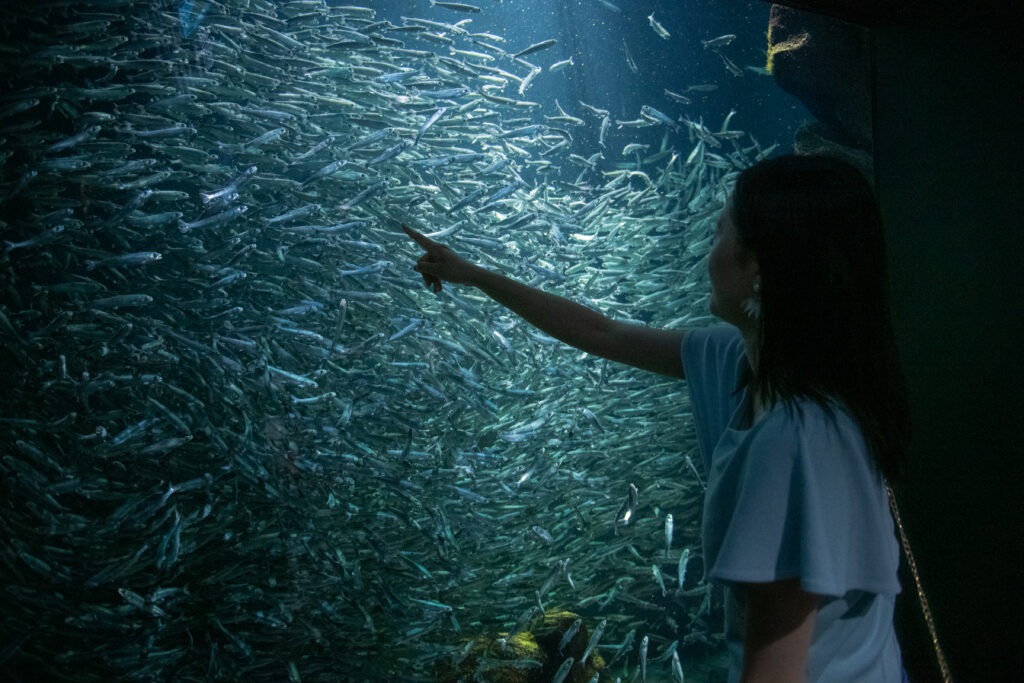
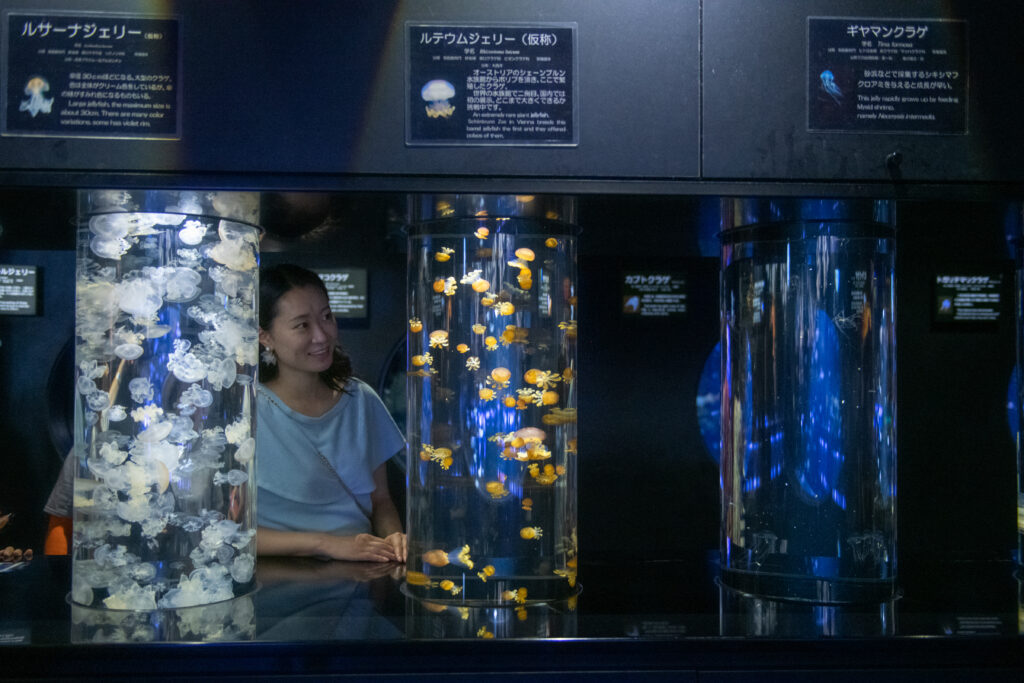
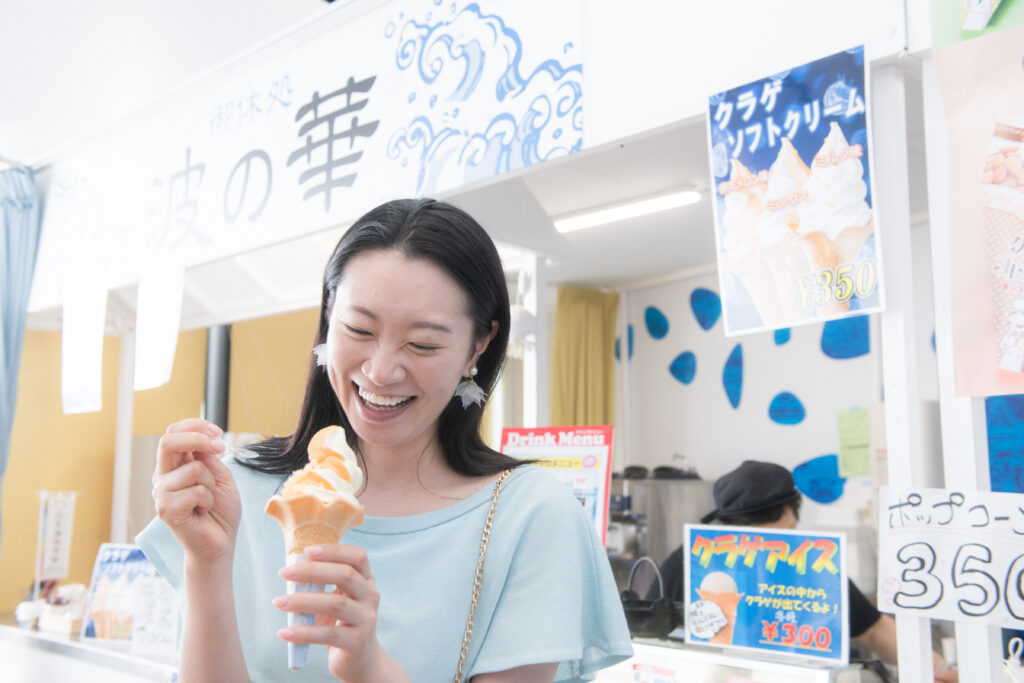
Did you know?
Kamo Aquarium is renowned for having the largest collection of jellyfish in the world, with over 60 successfully reproduced species. It features the world’s only “jellyfish-only fish tank,” a five-meter-diameter tank filled with Aurelia Aurita (moon jellies). The aquarium shares its expertise globally through partnerships with aquariums and universities, including Paris Aquarium, Monterey Bay Aquarium, and La Rochelle Aquarium.
Before its transformation into a jellyfish-specialized aquarium, Kamo Aquarium faced bankruptcy as a generalist aquarium. The current director, Mr. Okuizumi Kazuya, who was then a keeper, proposed the idea of specializing in jellyfish. Despite their simple anatomy, jellyfish are extremely difficult to keep in captivity due to their need for stable environmental conditions. Mr. Okuizumi mastered the complexities of jellyfish care, significantly expanding the aquarium’s jellyfish collection with the help of his skilled team of keepers and researchers.
Mr. Okuizumi also assisted Dr. Osamu Shimomura, the 2008 Nobel Prize winner in Chemistry, by providing specimens of Aequorea victoria. This jellyfish produces a bioluminescent protein called GFP, which was central to Dr. Shimomura’s Nobel-winning research. Since then, Kamo Aquarium has continued to thrive and innovate.
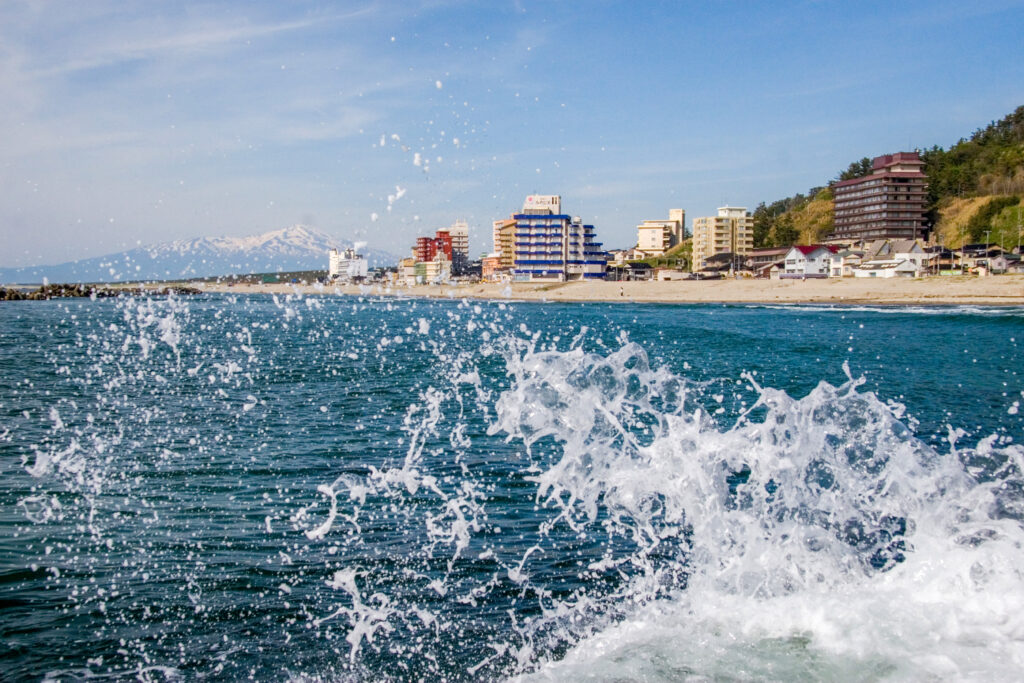
Go to Yunohama Onsen (bus transfer & ryokan check-in)
You can aim for the 13:45 bus to Yunohama Onsen from the aquarium’s bus stop (reminder: the bus stop name is Kamo Suizokukan, bus timetable).
Get off at Yunohama Onsen at 13:55. Check-in at the ryokan you have chosen for the night.
See our list of ryokan to stay at Yunohama Onsen
Then, take the bus from Yunohama Onsen’s bus stop to Tsuruoka city through Zenpoji temple (bus timetable) at 14:45.
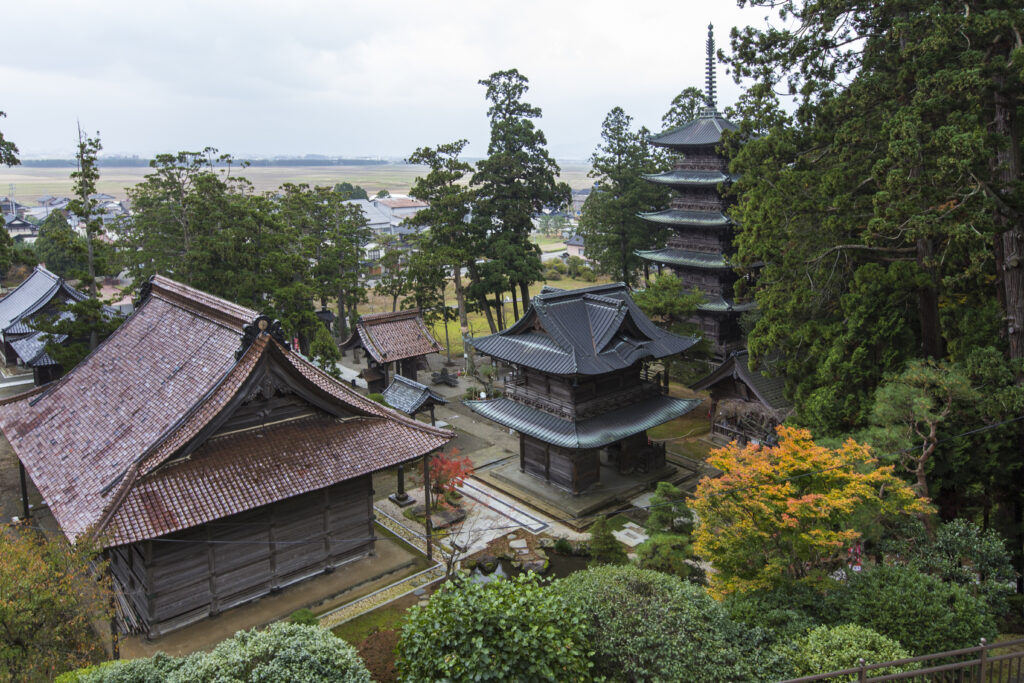
Visit Zenpoji Temple
Get off the bus at Zenpoji at 14:53 and explore the temple’s precincts for about 45 minutes. To visit the inside of the temple, there is a 500 yen entrance fee. Don’t miss the last prayer of the day at 16:00, where the monks perform the Heart Sutra Prayer for around 20-30 minutes. You can ask to be blessed during the prayer by paying a blessing fee (starting from 3000 yen) up to 10 minutes before the prayer begins. Otherwise, you can attend the prayer with just the 500 yen entrance fee.
The bus back to Yunohama Onsen leaves Zenpoji temple at 17:20. Until then, feel free to visit Kaibami-ike pond with its human-faced fish and explore the many buildings of the temple. Go back to Yunohama Onsen to have a relaxing soak and some well-deserved sleep.
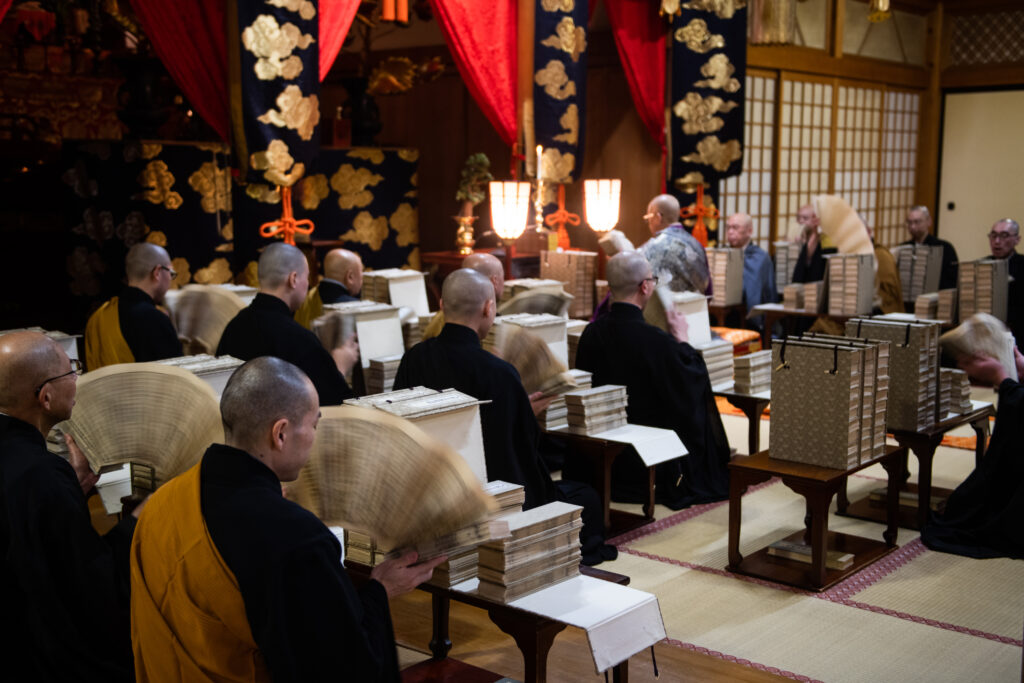
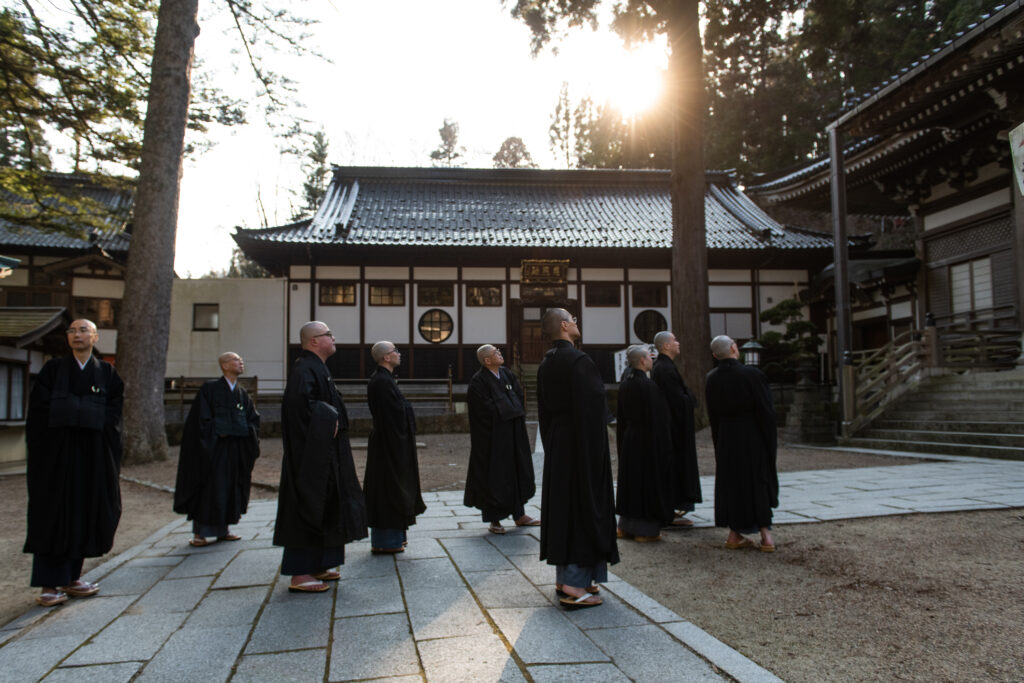
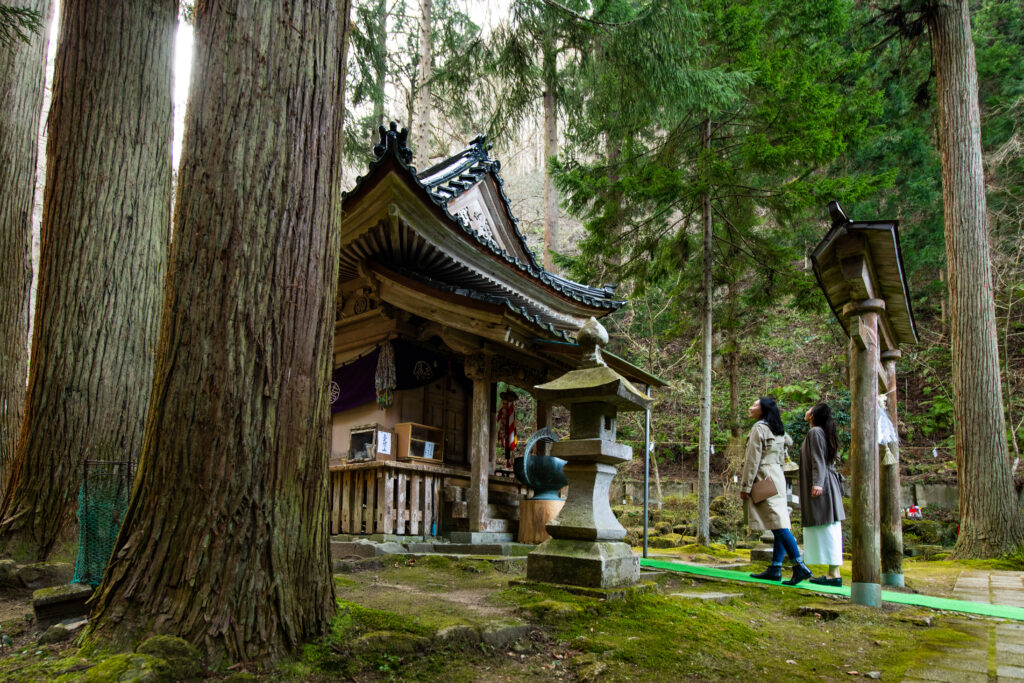
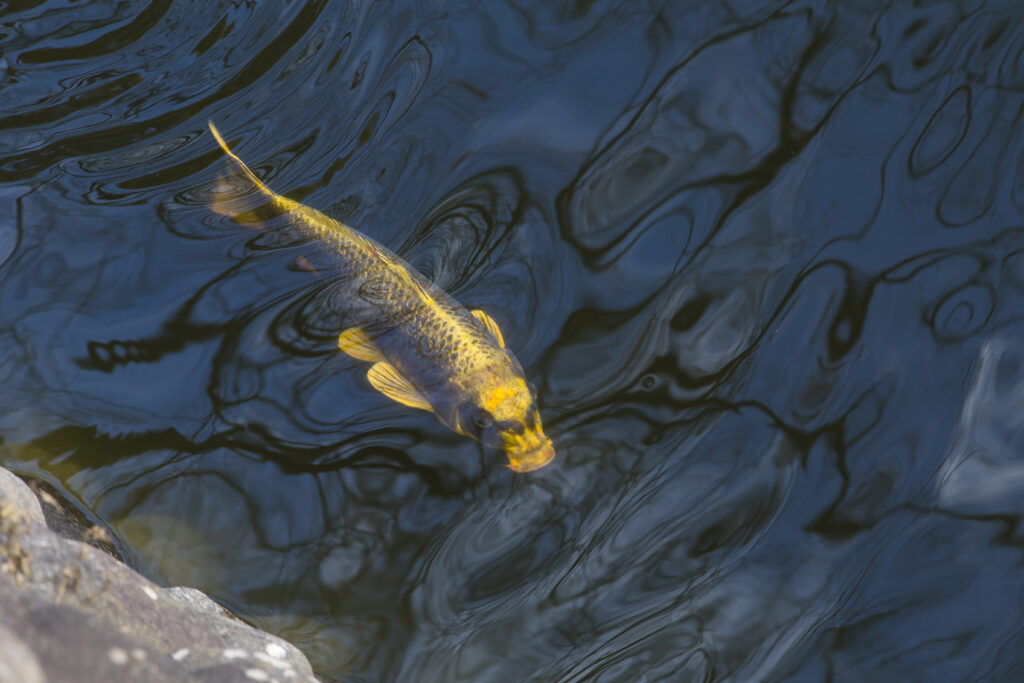
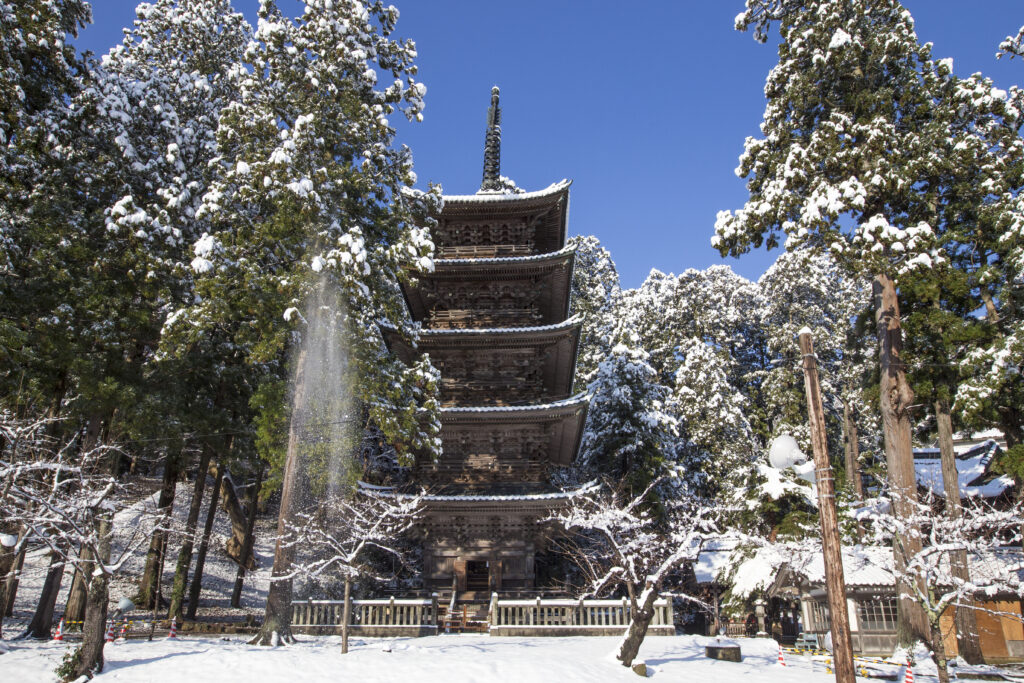
Did you know?
Zenpoji Temple is one of the Three Main Soto Buddhist Temples in Japan, with a history spanning over a millennium. The temple’s main deity is the Dragon God, revered for protecting all things related to water, including fishermen, farmers, and sailors, and for its powers to heal diseases and pain. Zenpoji is so respected throughout the Tohoku region that fishermen from other prefectures proudly display Zenpoji’s flag on their boats, seeking protection and blessings.
Zenpoji gained significant attention in the 90s due to its “human-faced carps” (人面魚 jinmengyo in Japanese) after a Japanese TV program featured these uniquely human-like fish. The jinmengyo are believed to be manifestations of the Dragon God worshipped in the temple’s waters. Visitors often make donations or pray at the shrine near Kaibami-ike pond at the temple’s base, hoping for cures for their illnesses.
During the golden age of the Kitamaebune maritime road (see Niigata’s paragraph for more details) in the 18-19th century, Zenpoji became a prominent site of devotion for merchants seeking protection from sea storms and shipwrecks. This increased popularity and the donations it brought allowed the temple to invest in the creation of beautiful structures, such as the Five-Storied Pagoda and the 500 Rakan Hall.
The temple’s monks perform the prayer 6 times a day. They also offer zazen sessions, shojin-ryori lunches or Buddhist stays at their lodge on the second floor.
Where to sleep in Yunohama Onsen
There are many ryokan options in Yunohama Onsen to have a soothing bath and spend the night. (See our list of ryokan to stay at Yunohama Onsen)
We personally recommend trying “Kameya”, a three-centuries old ryokan that has welcomed two Imperial Couples as its guests in its history, proof of the high-quality of its services and its comfort.
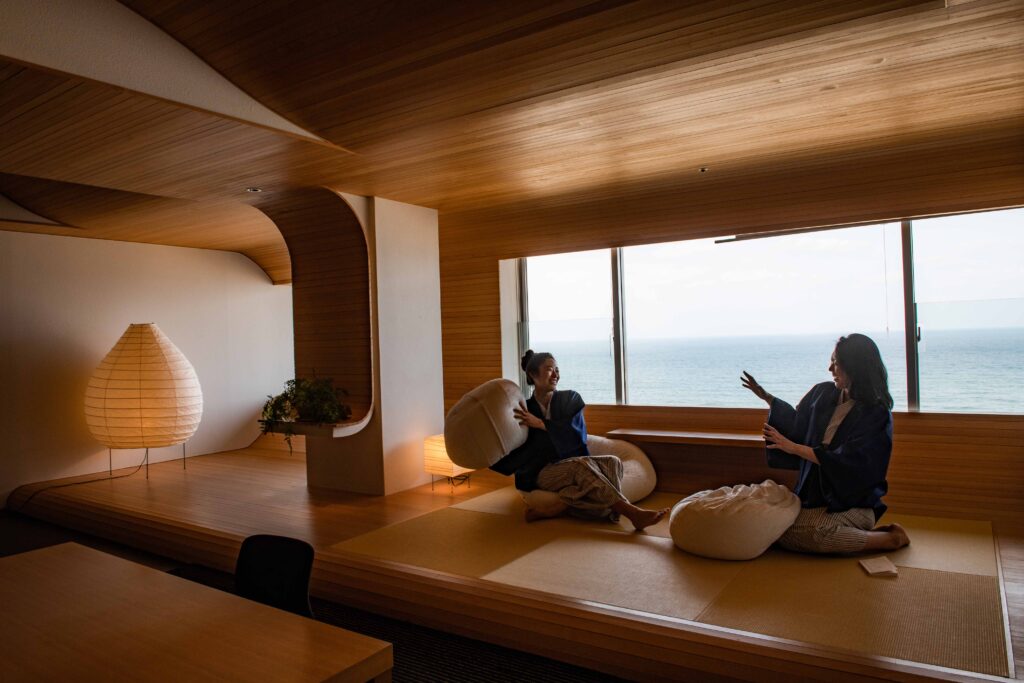
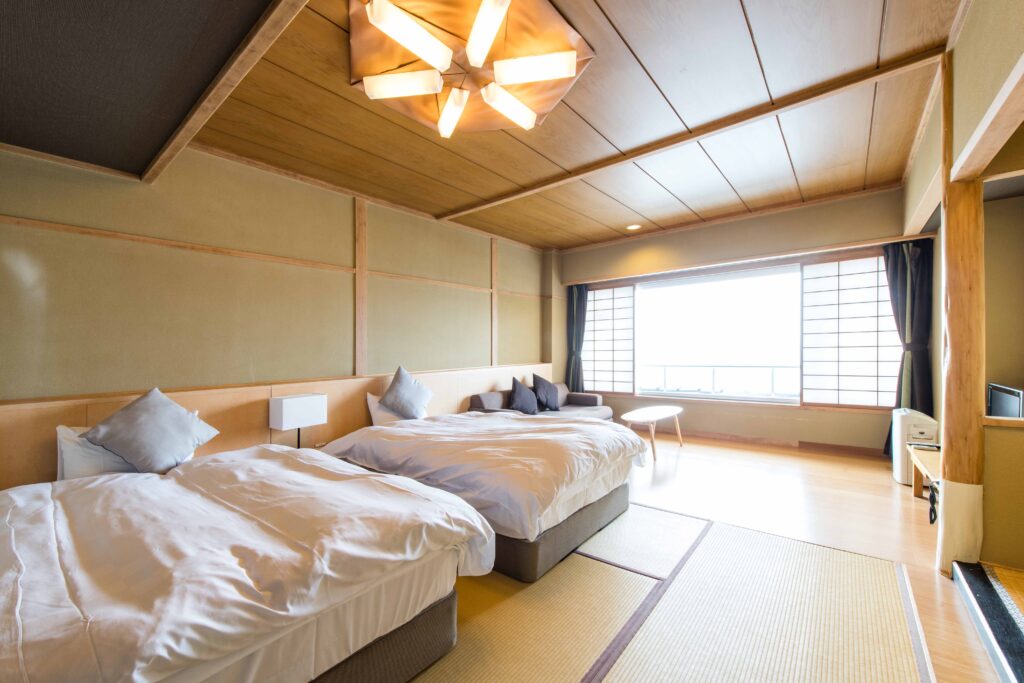
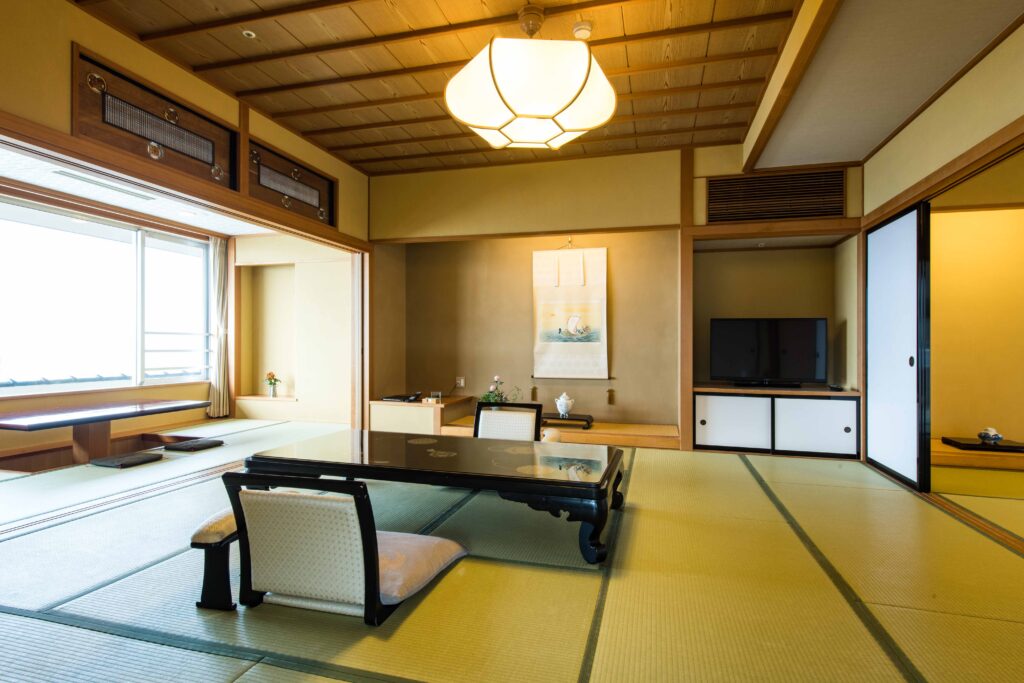
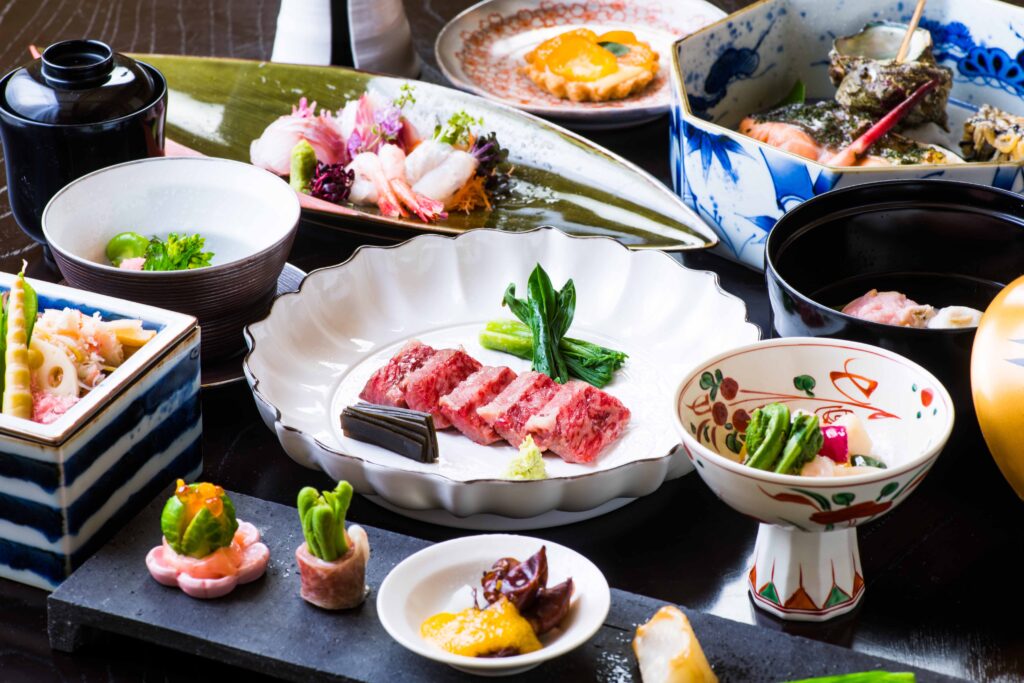
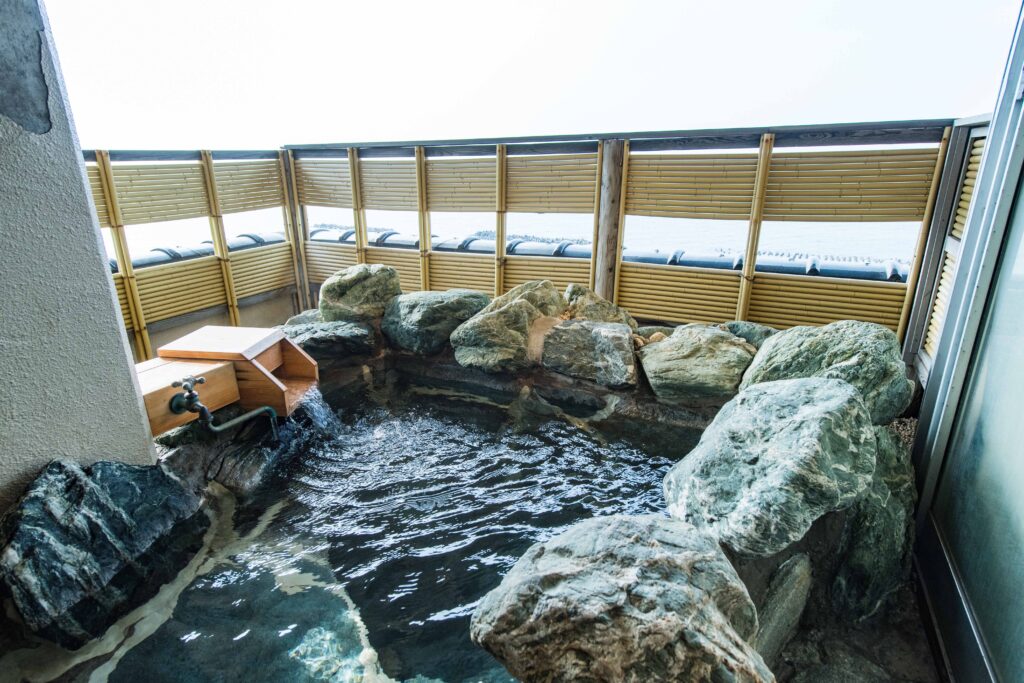
What to eat in Tsuruoka?
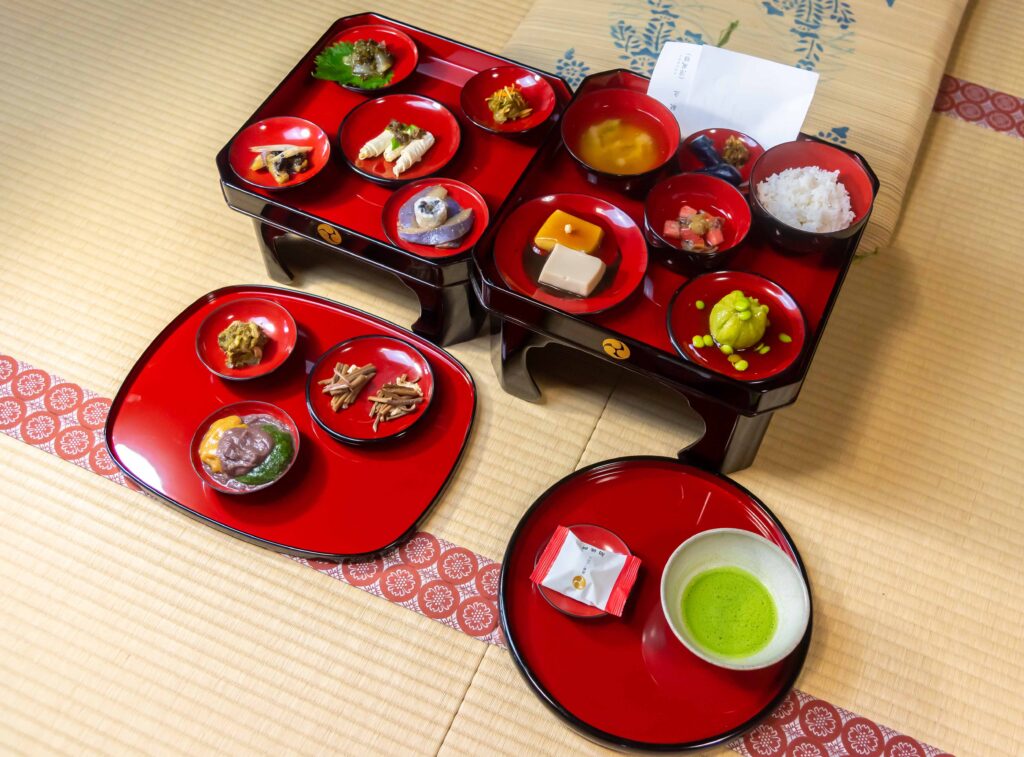
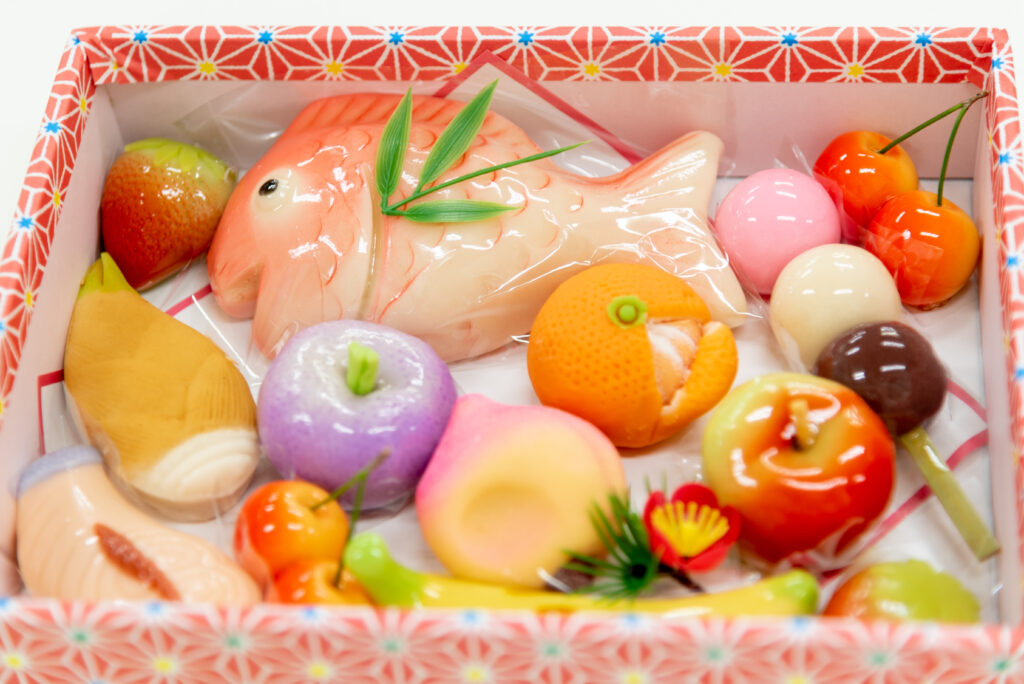
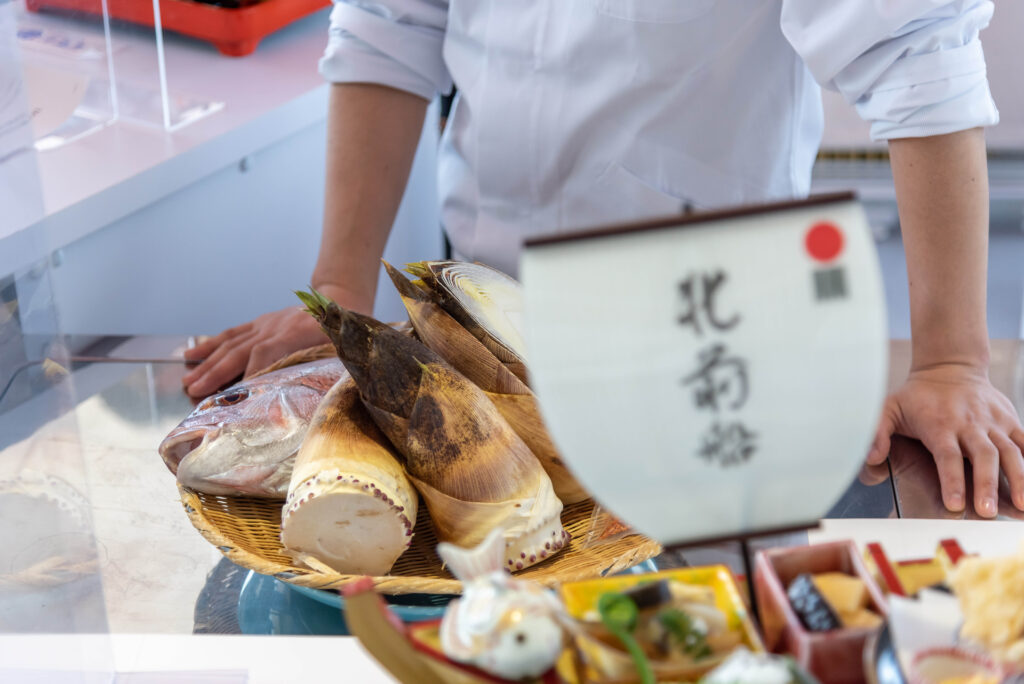
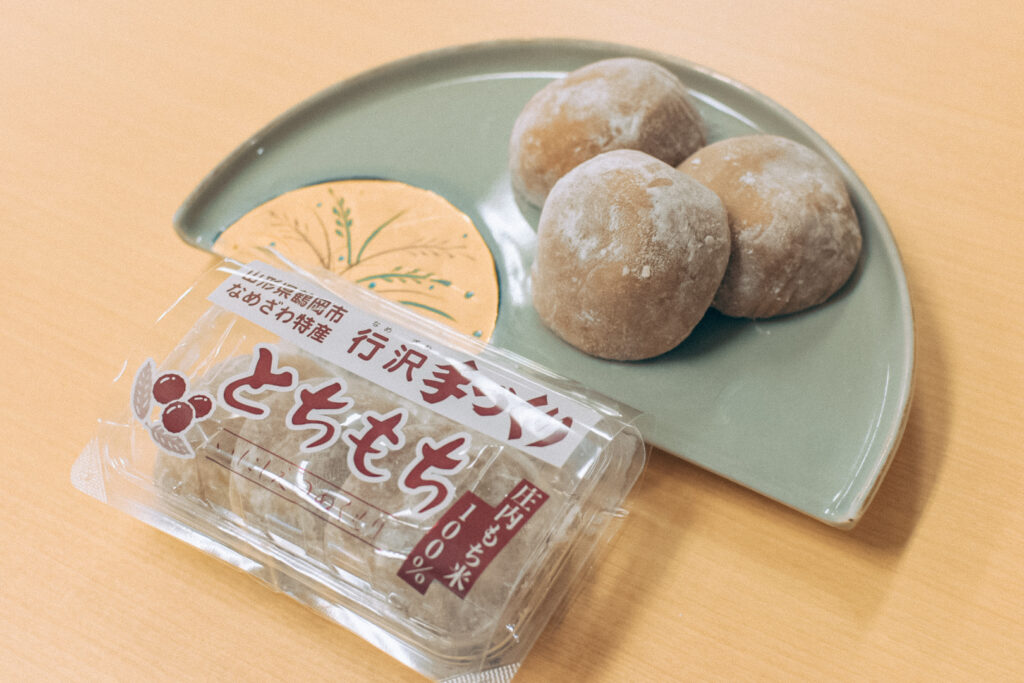
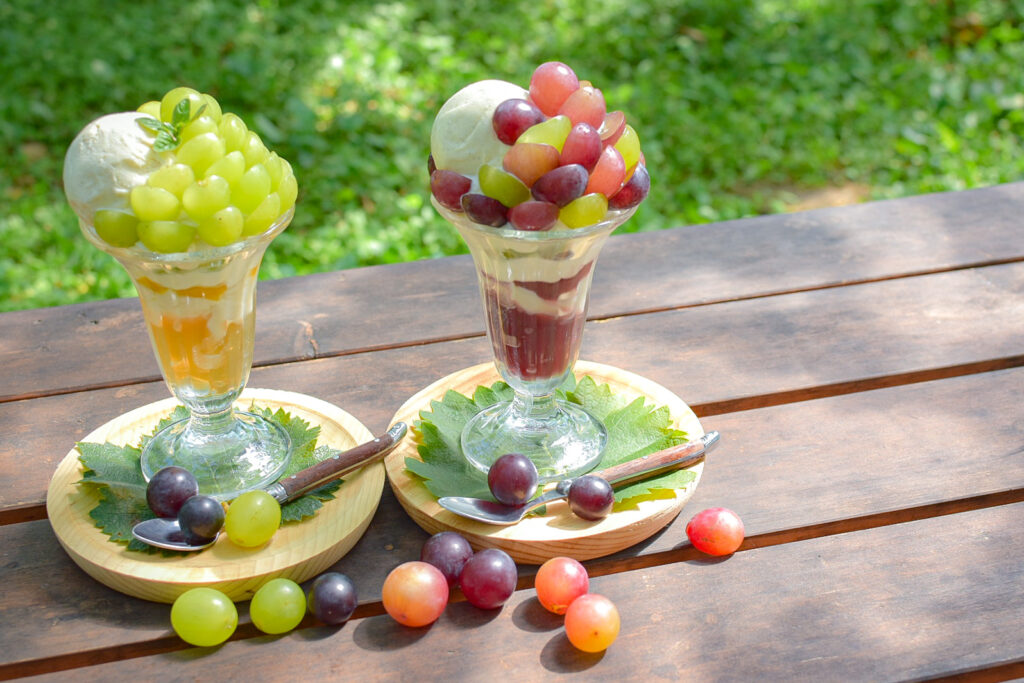
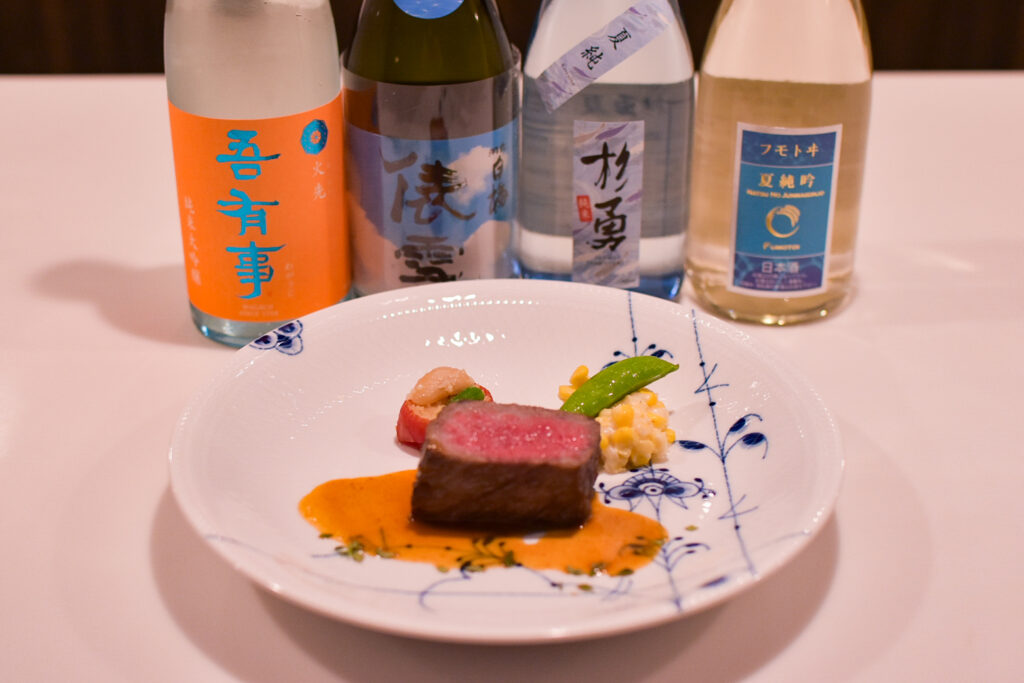
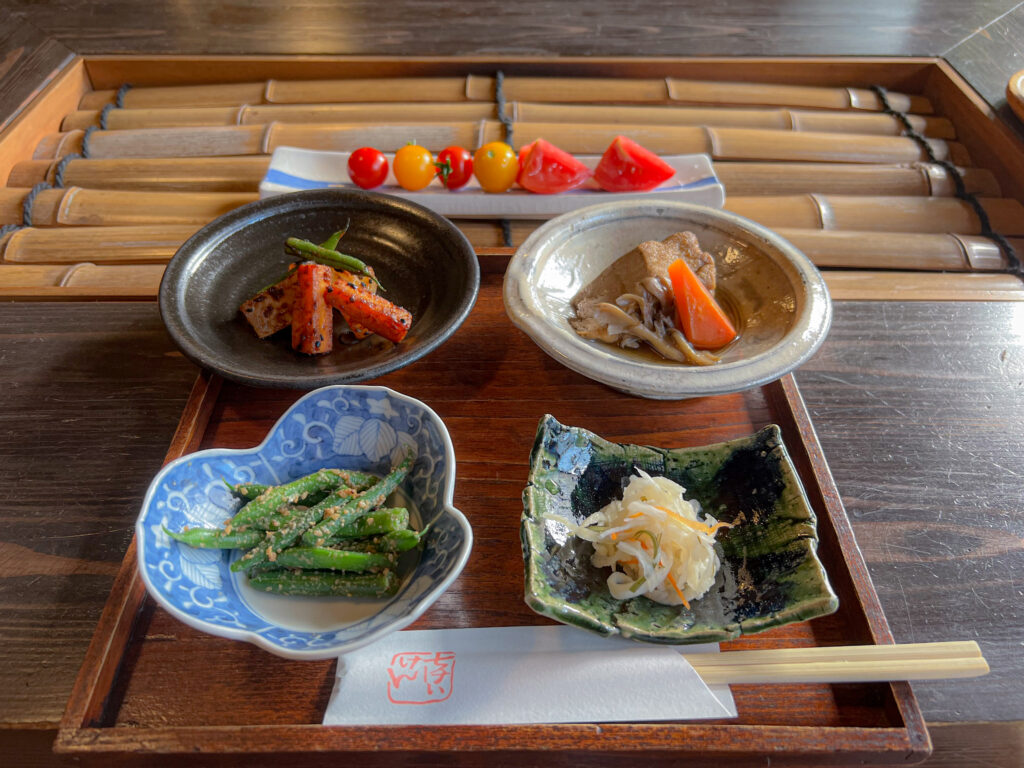
(D5) Sakata city, its maiko & oiran culture and its delicious pork
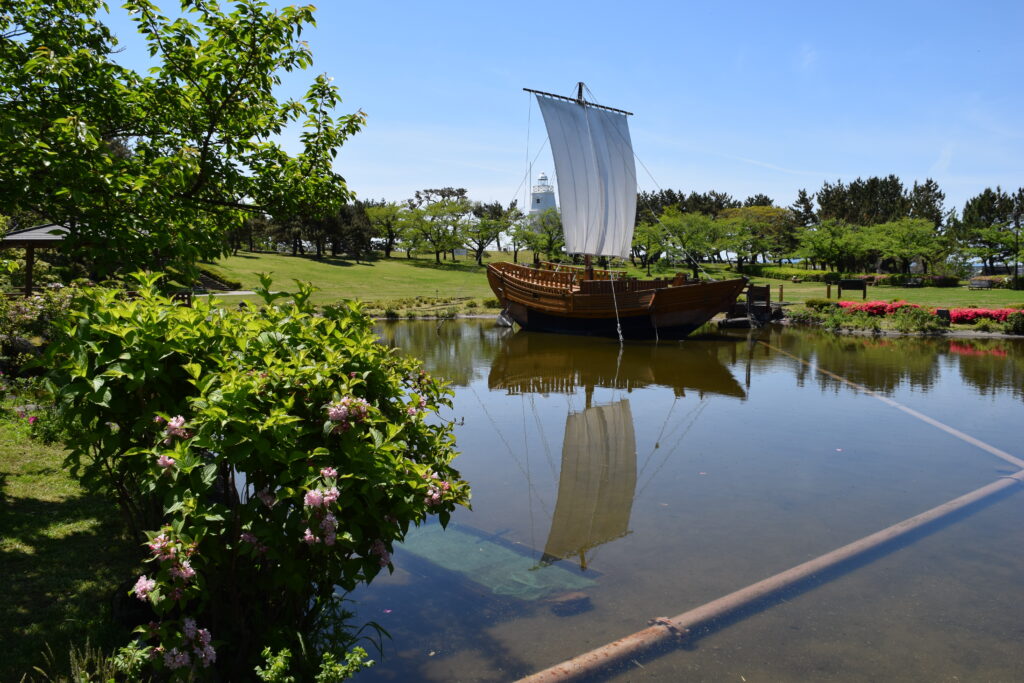
Sakata City, another key hub port of the Kitamaebune trade route until the 19th century, was home to Japan’s wealthiest family, the Honma family, who amassed their fortune through vast rice fields (and harvests). In Sakata, you can immerse yourself in the history of Kitamaebune merchants by exploring the old town, where the Somaro teahouse is located. Somaro’s maiko still perform in the local dialect, offering unique dances and chants for lunch or special occasions. The experienced eye can appreciate the differences from Kyoto geisha and enjoy the distinctive performances of Sakata’s maiko.
Nearby, you can visit the Sanno Kurabu, a former restaurant with a 120-year history. This site showcases the history of Sakata’s oiran (highest-ranked courtesans) through comical and erotic drawings displayed in a small tearoom, as well as doll displays depicting the various workers of a pleasure house.
Surrounded by the Shonai Plain and bordered by the Sea of Japan, Sakata offers exquisite sake and seafood. However, we recommend trying one of Japan’s finest pork meats: Shonai Pork, at Hirata Bokujo’s restaurant. This culinary delight is not to be missed.
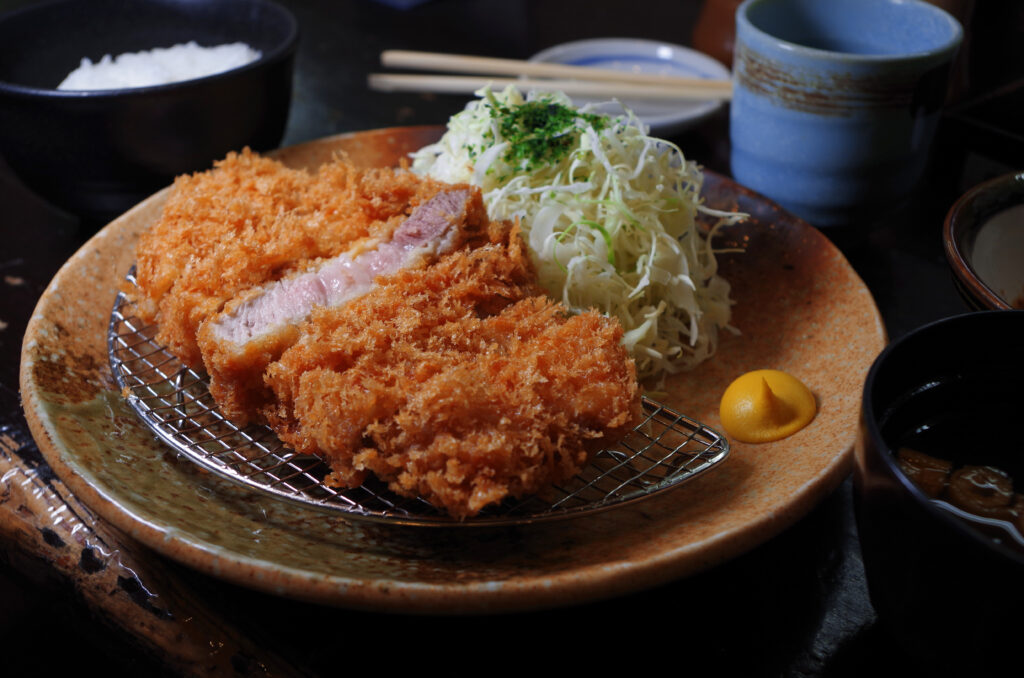
Go to Sakata city, have tonkatsu for lunch
For that, take the bus bound for Tsuruoka station from Yunohama Onsen via Kamo Aquarium, preferrably at 9:00. Arrive at Tsuruoka station (Tsuruoka ekimae) at 9:46 (bus timetable). Take the train bound for Sakata station (Inaho 1) at 10:12. Get off the train at 10:32. Take the city bus B to Mizuho Icchôme (1chome), have tonkatsu for lunch at Tonya (Hirata Bokujo’s restaurant). Once finished, take the same bus to Sankyo Soko’s rice warehouses. Visit the warehouse and the exhibitions inside.
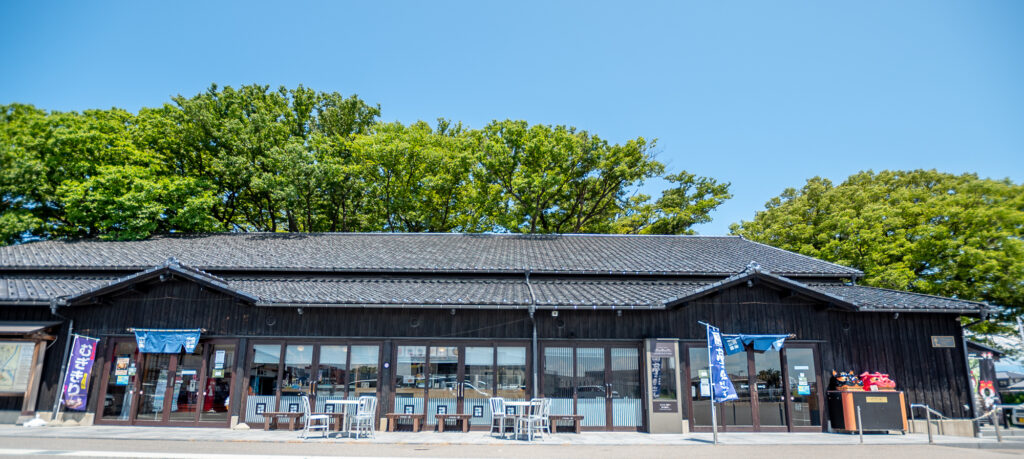
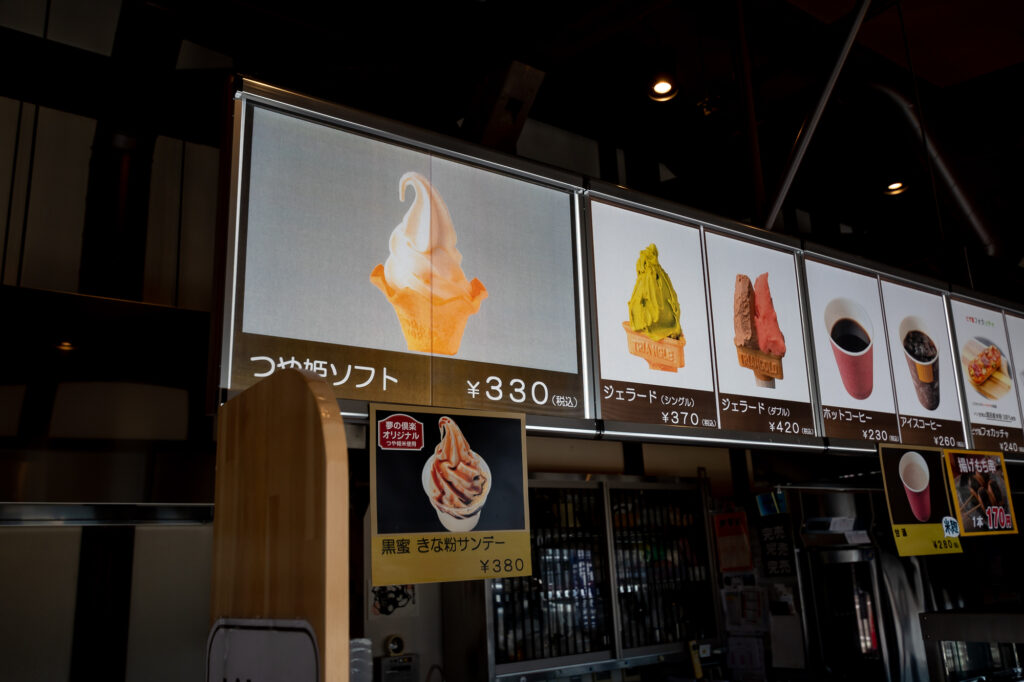
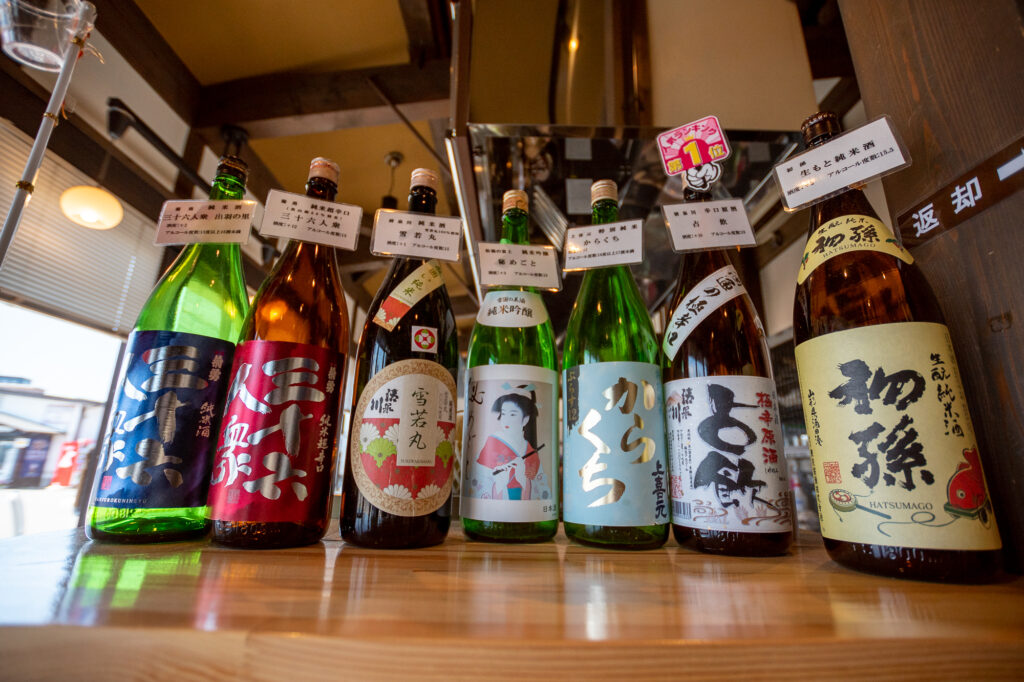
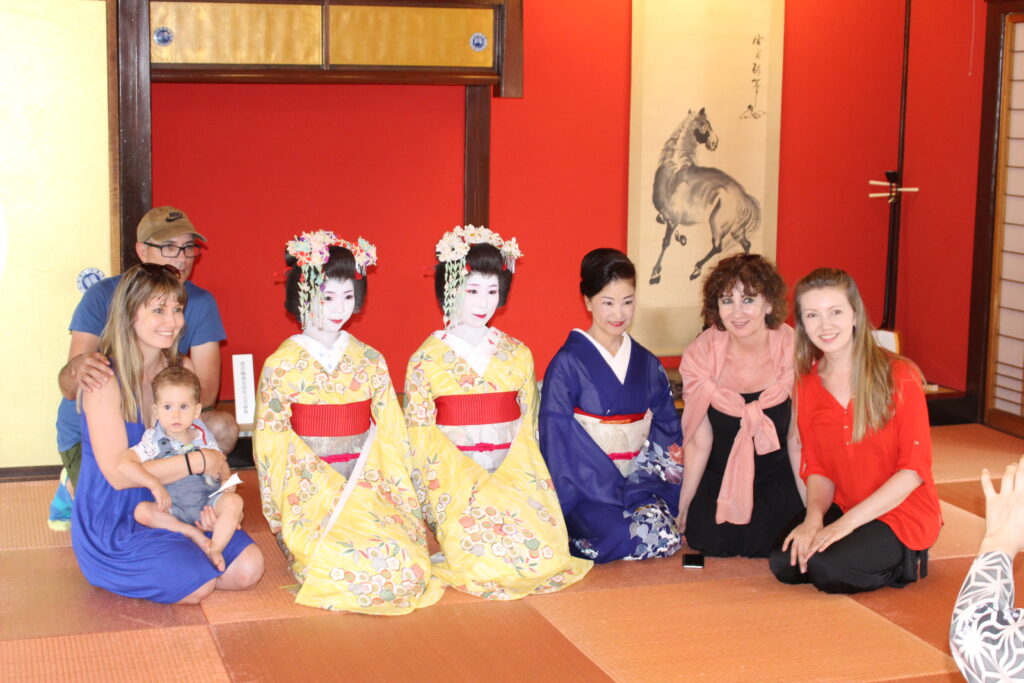
Somaro’s maiko dance and Sanno Kurabu’s history of the Sakata oiran
Walk to Somaro, watch the maiko performance (reservation website) at 14:00.
Once finished, walk to Sanno Kurabu, enjoy the different exhibitions and try to spots every hint at the oiran culture in Sakata city. If you have a little more free time, visit the Honma Museum and its Japanese garden (one of Japan’s Most Scenic Places 国指定名勝). Stay nearby for the night.
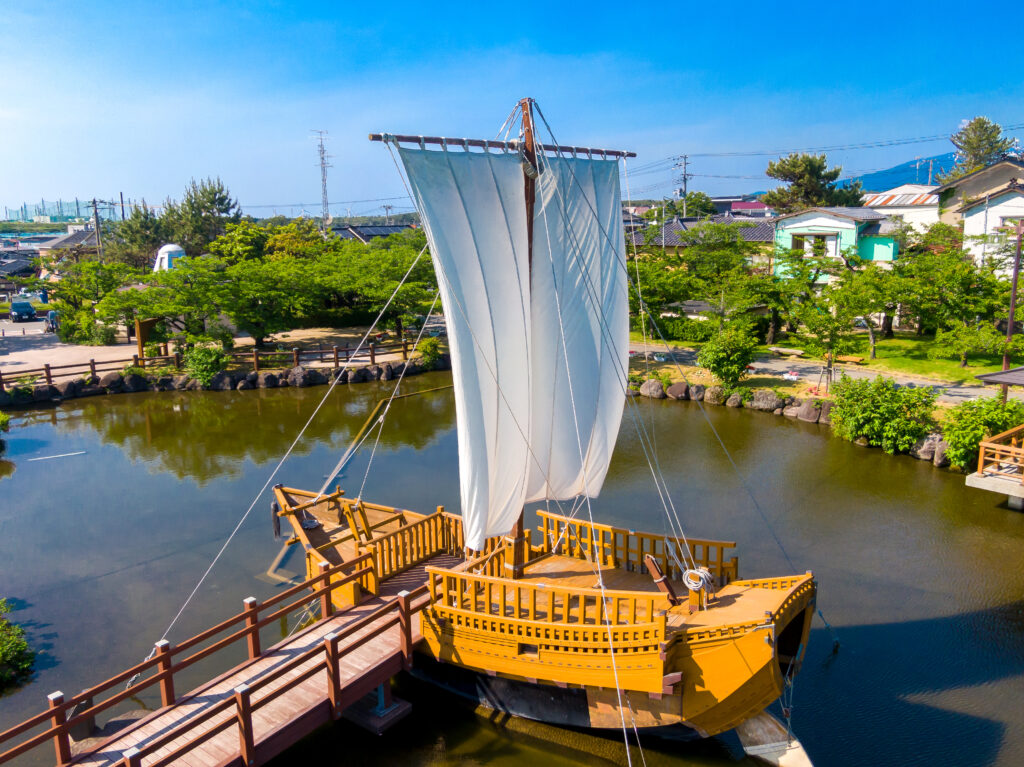
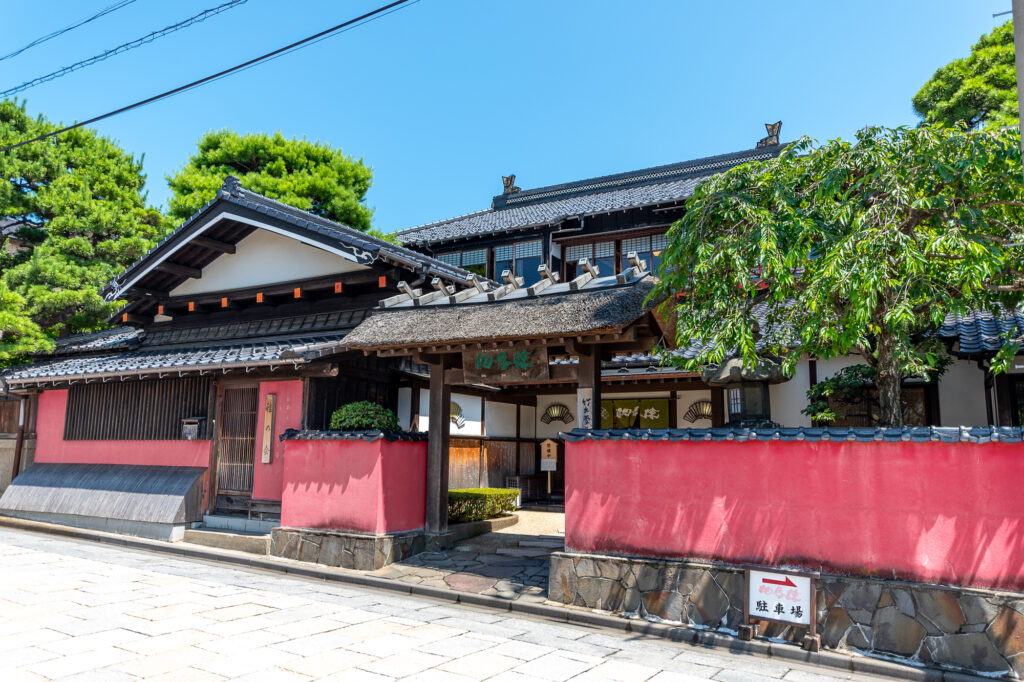
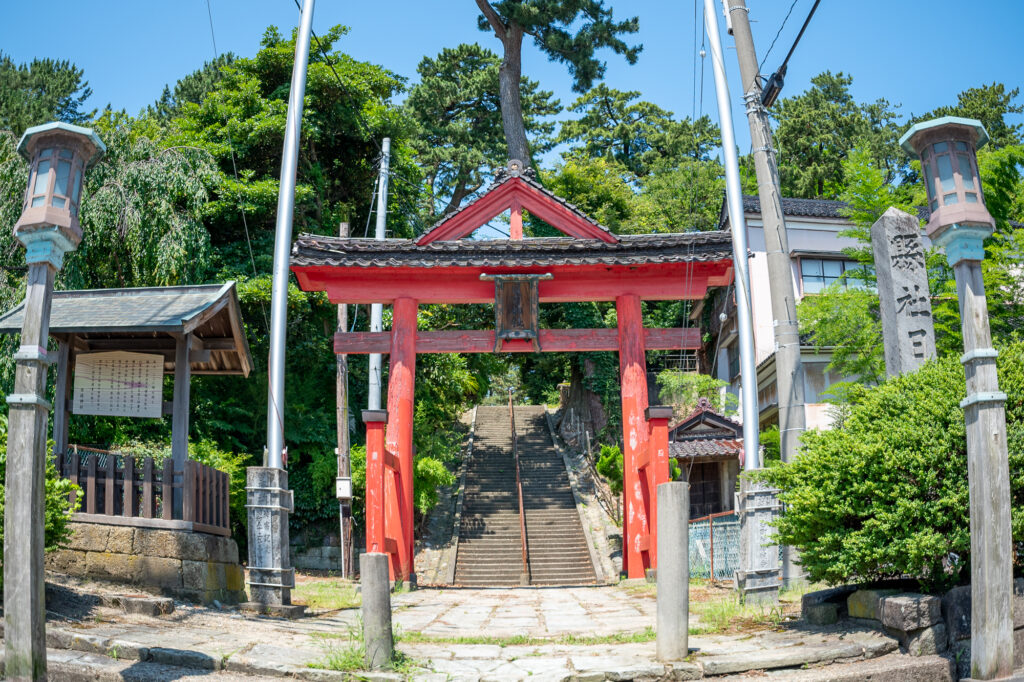
Where to stay in Sakata?
There are many places to stay in Sakata, but our recommendation goes to Wakaba Ryokan, a cozy, traditional ryokan near Somaro, Sanno Kurabu and the Hiyoriyama Park that serves traditional Japanese food and has cozy futon bedrooms.
Did you know?
Many people confuse geisha 芸者 (literally : “person of arts”) and oiran 花魁, since they have relative similar appearances (white makeup, luxurious kimono and hair decorations to name a few). However, those two roles are completely different. Geisha are trained entertainers, who enter a teahouse and train for many years to perfect their instrument-playing, singing, and dancing. Customers buy their services to animate a business meeting or spend a luxurious moment filled in the company of refined ladies. Back in the days, geishas used to be a “transition” for customers who were waiting to see the courtesans, dancing and singing meanwhile.
Oiran were considered elite courtesans within the pleasure quarters (yūkaku), such as the Yoshiwara district in Edo (now Tokyo). They were known for their beauty, elaborate hairstyles, and richly decorated kimonos. Oiran were distinguished by their elaborate and ornate kimonos, tall wooden clogs (koma-geta), and complex, multi-layered hairstyles adorned with numerous hairpins. Their appearance was much more flamboyant compared to geisha. Oiran culture declined with the end of the Edo period and the eventual outlawing of licensed prostitution, while geisha culture has continued to the present day, though in a modernized form.
What to eat in Sakata city?
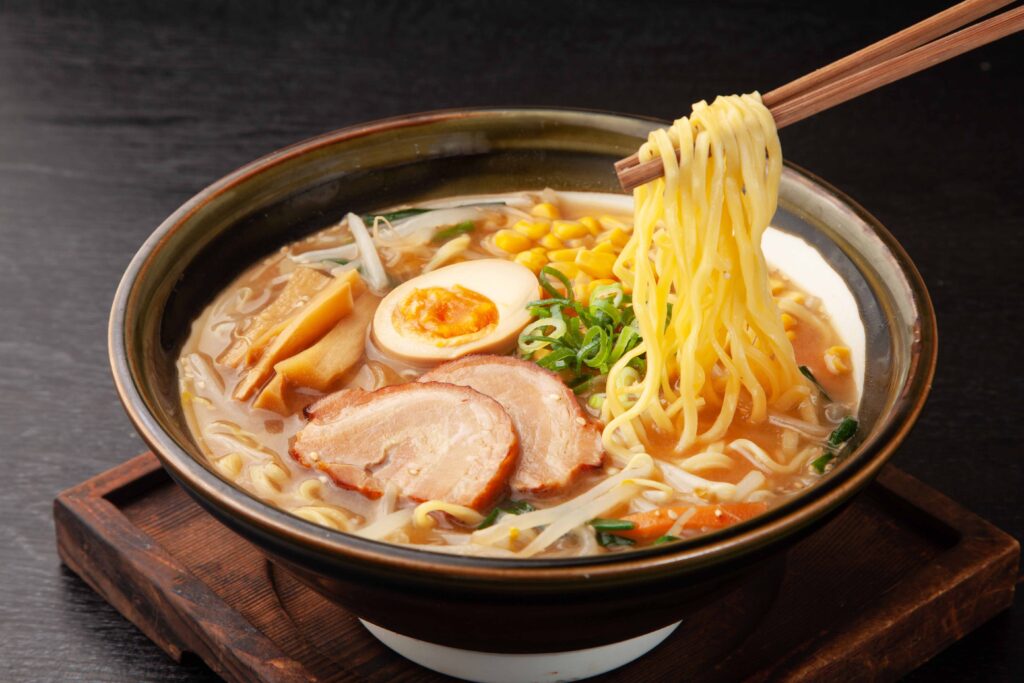
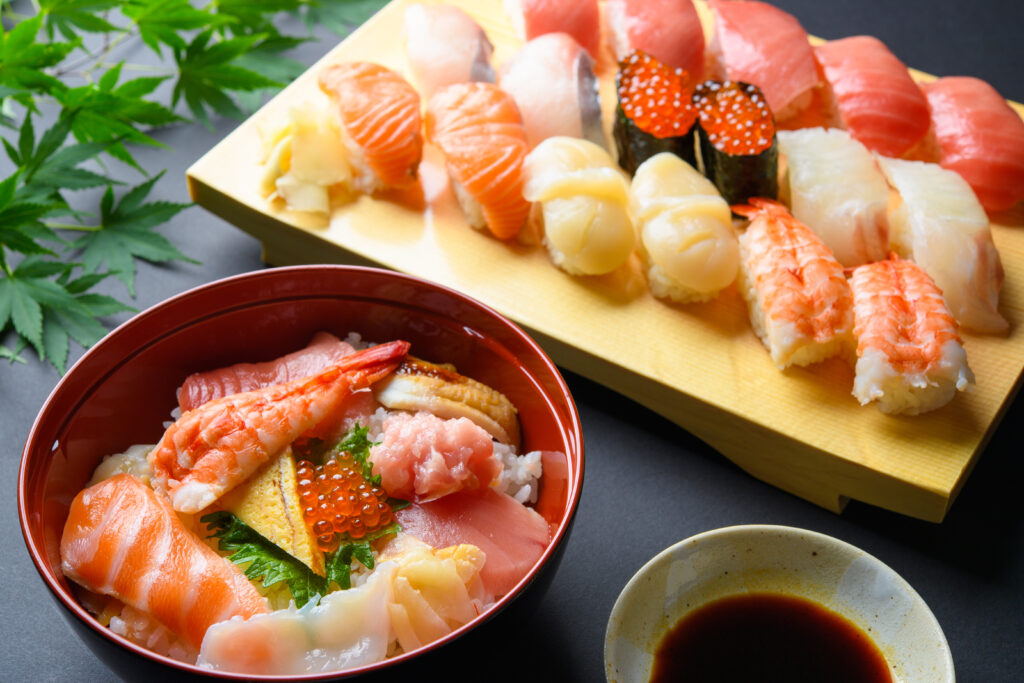

Did you know?
Sakata’s ramen were voted “Japan’s N°1 ramen” in 2023 at the “Japanese local ramen contest” that was held in Shinjuku/Okubo Park.
More ideas of things to do in Sakata
(D6) Ginzan Onsen and Yamagata!
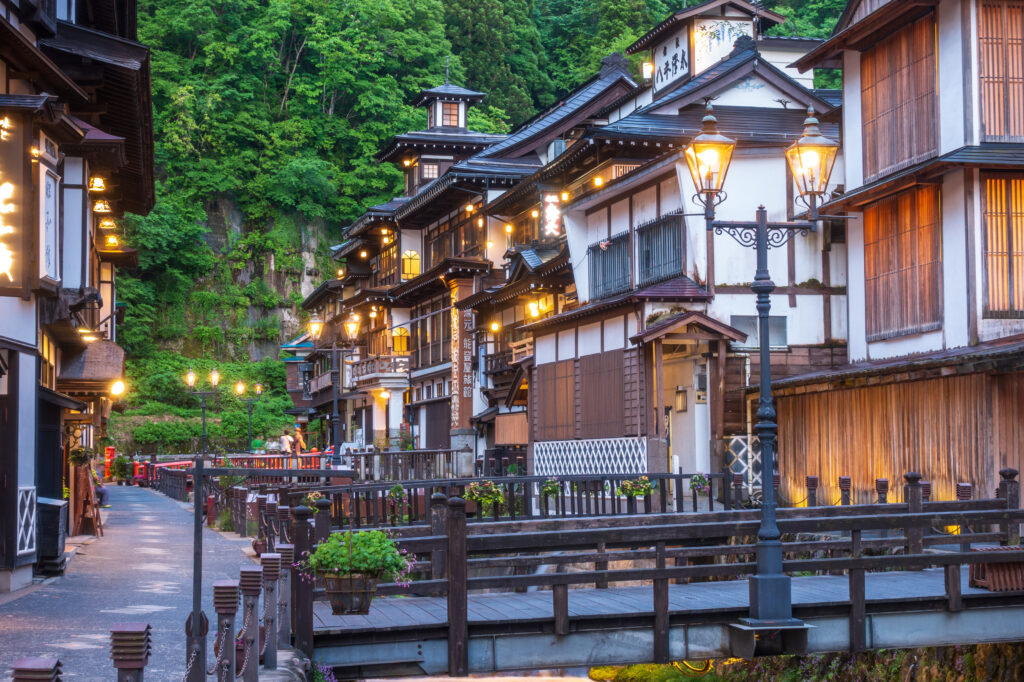
You’re going to have a busy morning this day!
1. Take the the Inaho 6 bound for Niigata at 9:11
2. Get off at Amarume station at 9:19
3. Take the Rikusai Line bound for Shinjo at 9:25
4. Get off the train at Shinjo Station at 10:54
5. Take the Yamagata line bound for Yamagata at 11:35
6. Get off the train at Oishida at 11:54. Have a quick lunch in front of the station
7. Take the JR bus to Ginzan Onsen at 12:35
8. Arrive at 13:11
Don’t miss Yamagata City, a key destination in the Tohoku region. Not only is it a transportation hub connecting you to stunning spots like Yamadera and Ginzan Onsen, but it’s also a “culinary hub,” offering the finest dishes from across the prefecture. Enjoy the famous dadachamame from Tsuruoka (known as the “king of edamame”), savor the rich flavors of Yonezawa beef (one of Japan’s top three wagyu varieties), and taste the renowned Shonai pork. Yamagata is also famous for its ramen and is Japan’s top producer of cherries.
During your one-night, two-day stay in Yamagata, you’ll have plenty of time to fully appreciate the delights this prefecture has to offer!
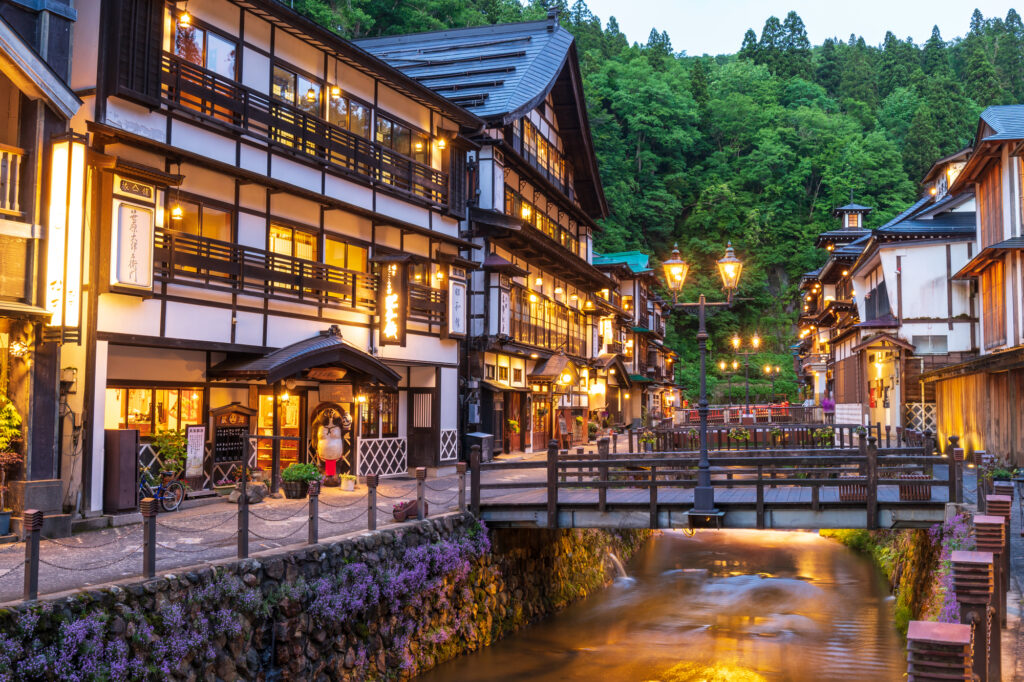
Go to Ginzan Onsen
Nobody needs to introduce this stunning onsen village anymore. Ginzan Onsen is renowned for its beautifully preserved traditional ryokan (Japanese inns) with wooden facades lining the Ginzan River. Many of these buildings date back to the Taisho era (1912-1926) and early Showa era (1926-1989), creating a nostalgic and romantic ambiance, especially when illuminated at night. Explore Ginzan Onsen, visit its historic silver mine and picturesque waterfall, and go down to Yamagata city to stay for the night.
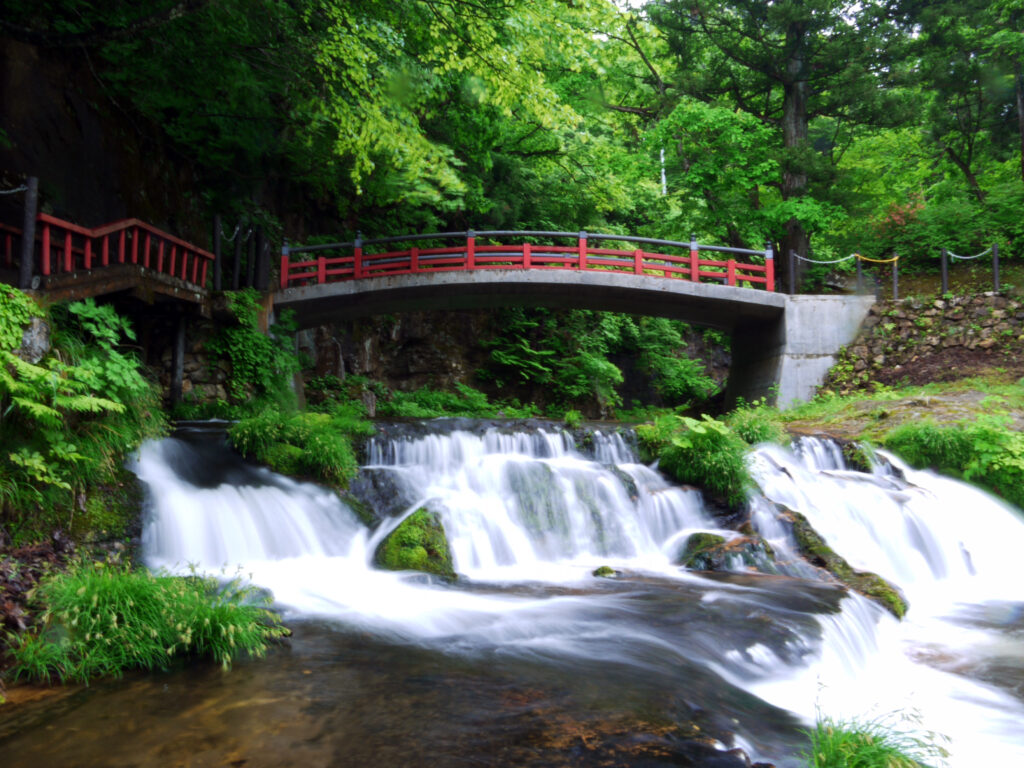
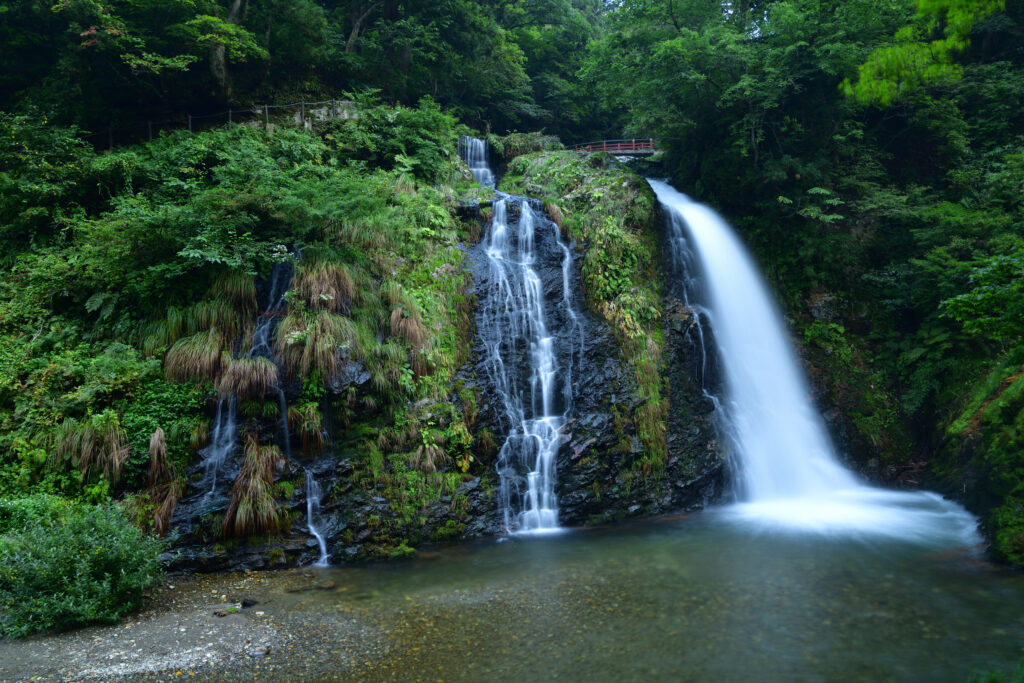
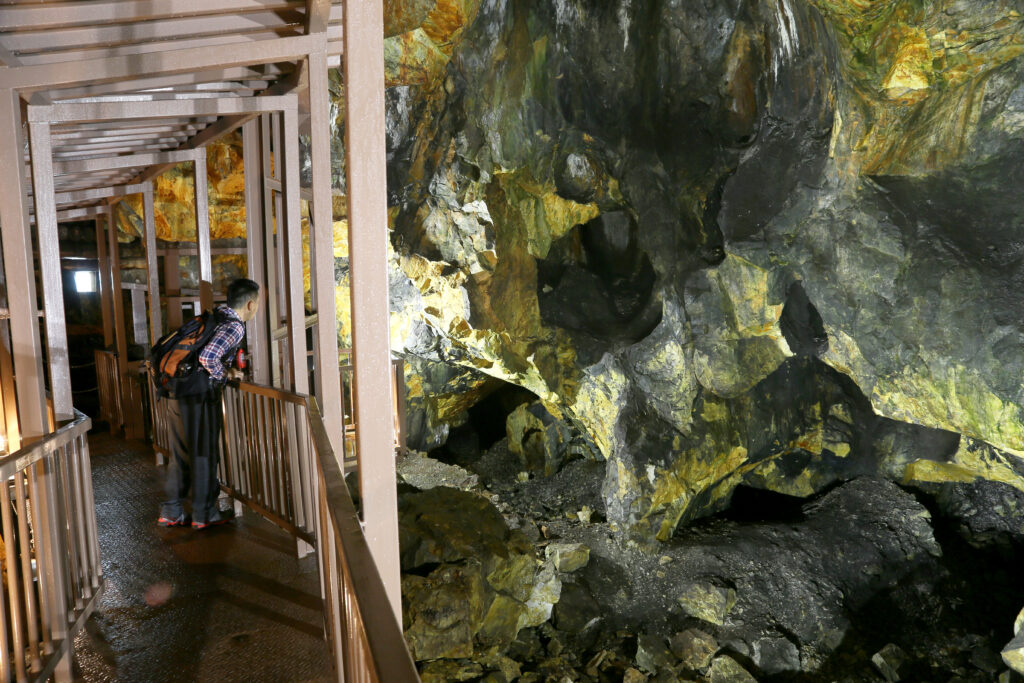
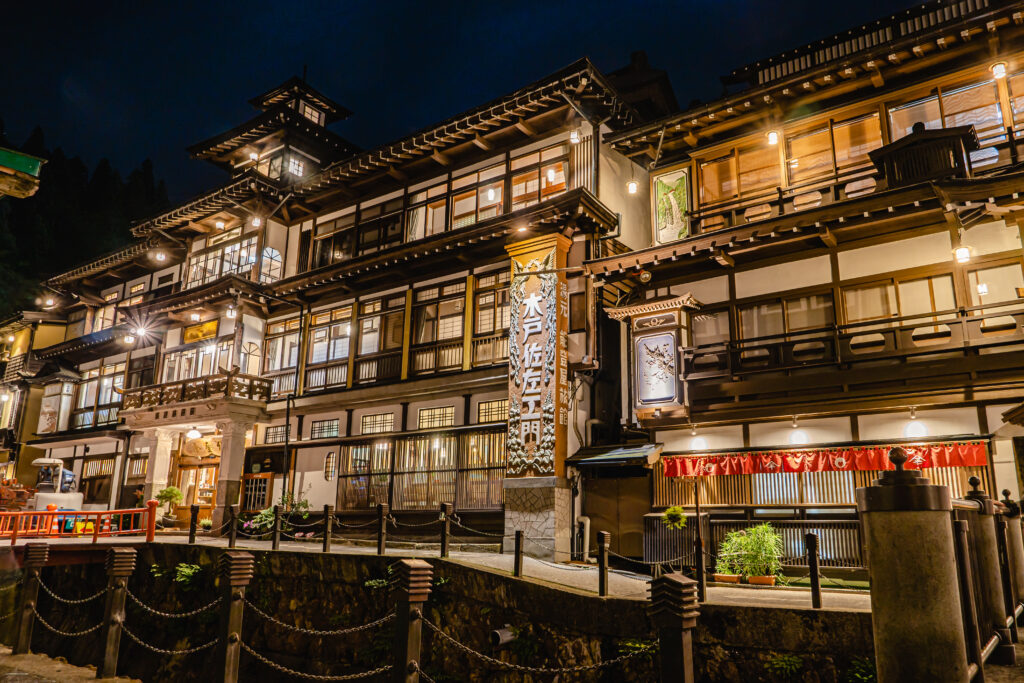
Where to stay near Ginzan Onsen?
It is actually very hard to stay at Ginzan Onsen. Most establishments are full many months in advance, and most rooms’ price is on the upper side of the scale. We recommend you to stay near Yamagata station if you couldn’t make a booking for a ryokan inside Ginzan Onsen.
(D7) Yamagata city, Yamadera’s Buddhist grounds and off to Sendai!
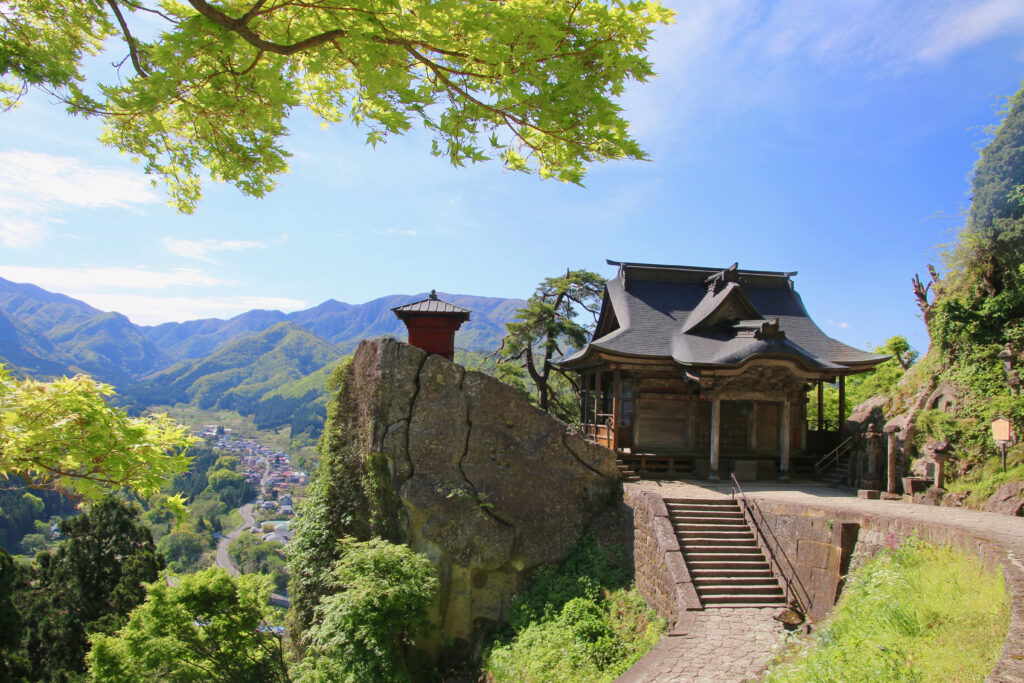
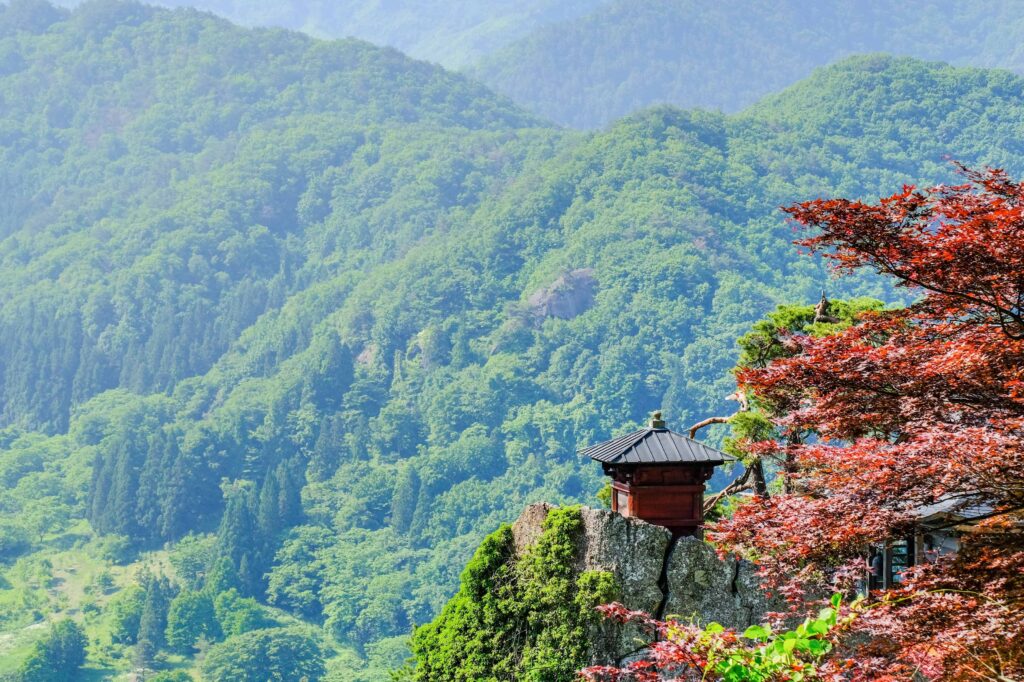
Go to Yamadera
To go to Yamadera from Yamagata Station, take the Sendai Line bound for Sendai, and get off the train at Yamadera station (approx. 20 min.). Have lunch in front of the station. You have plenty of choice: ramen, soba, udon.. Choose the noodles dish you prefer!
Visit Yamadera. You have the possibility to book for a guide/interpreter to accompany you on-site (their website: Yamaderan’s Association).
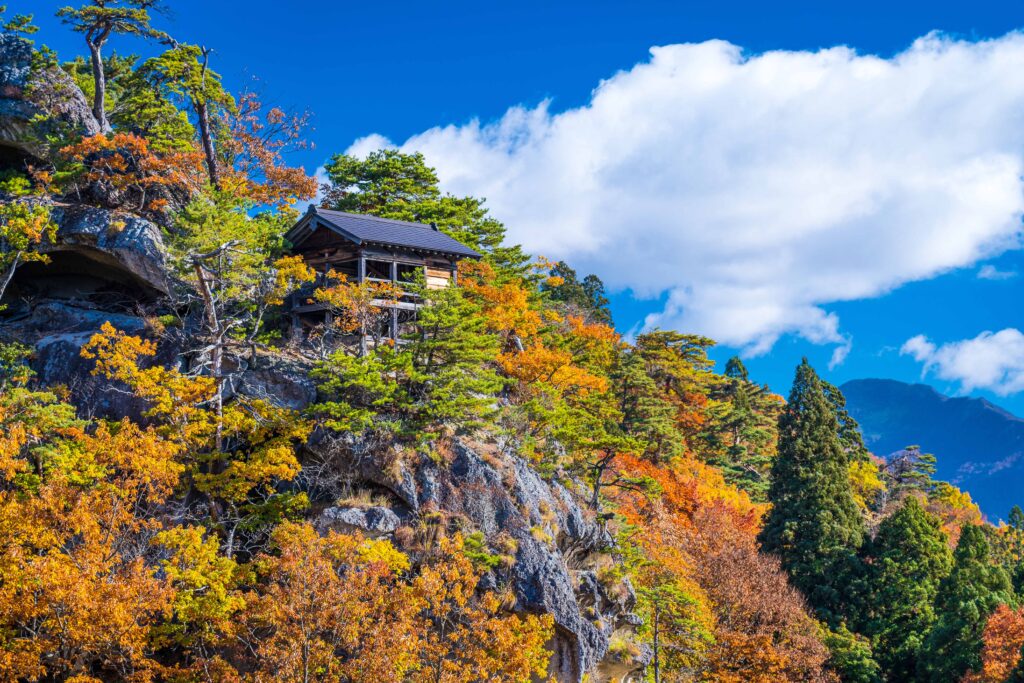
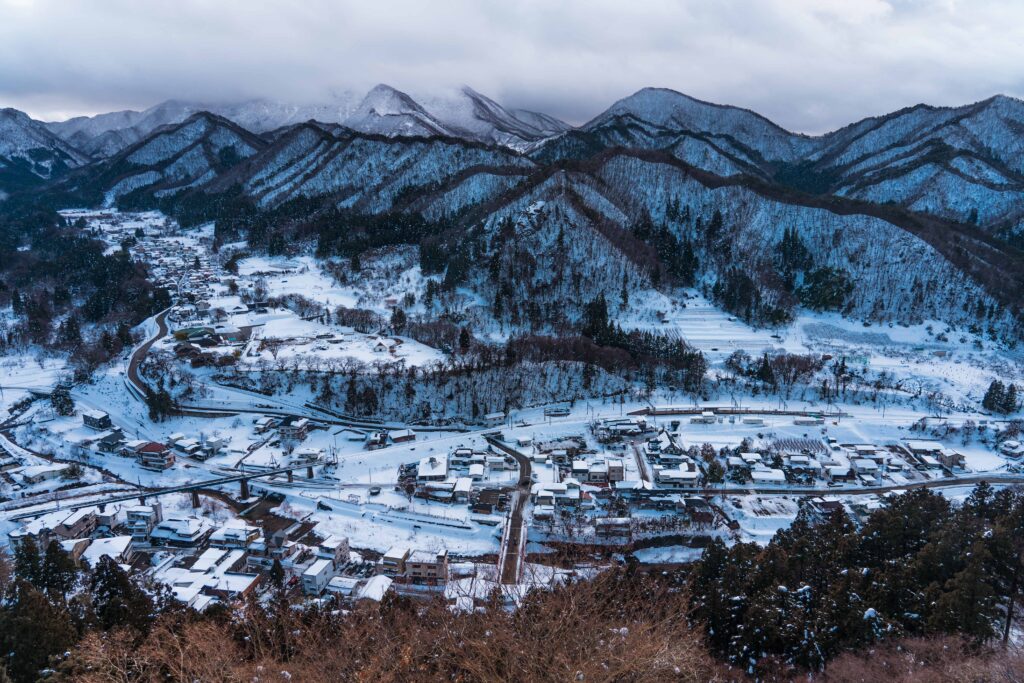
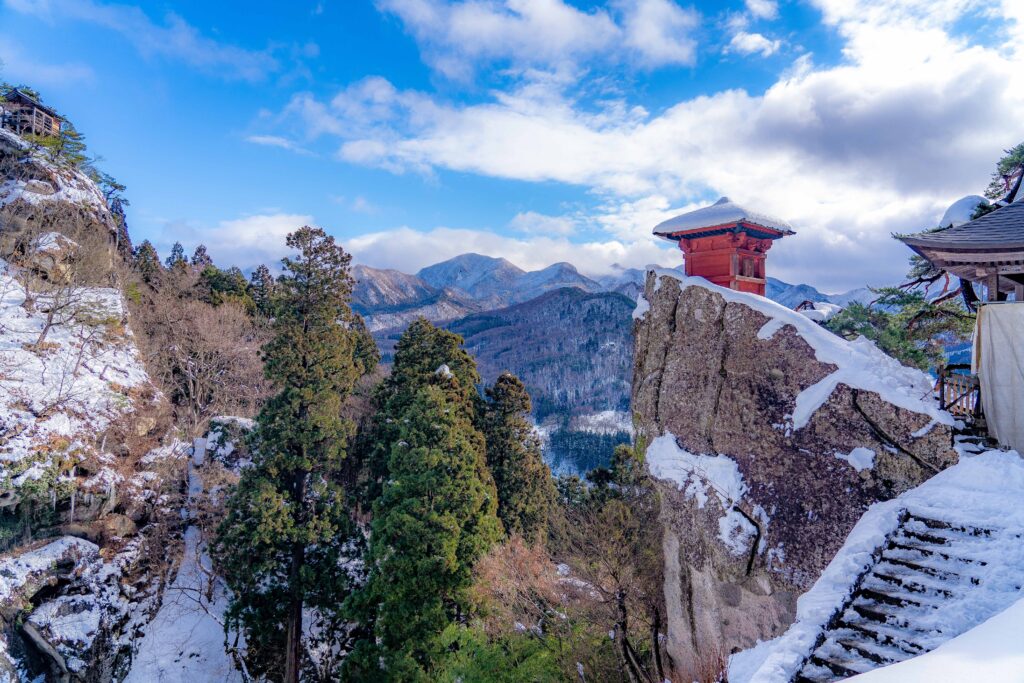
What to eat in Yamagata city
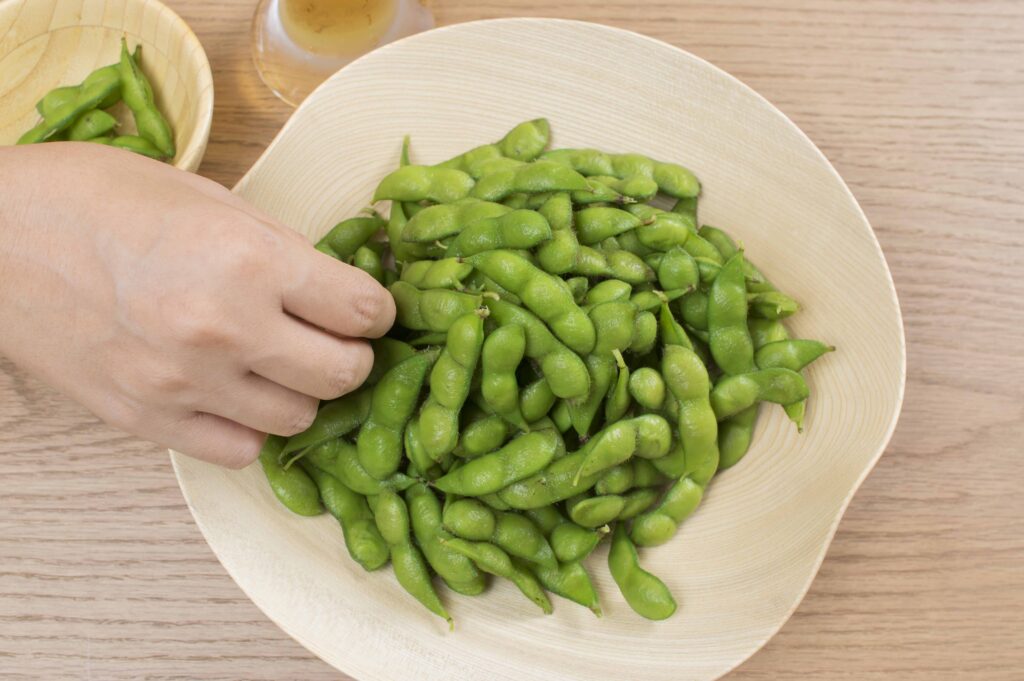
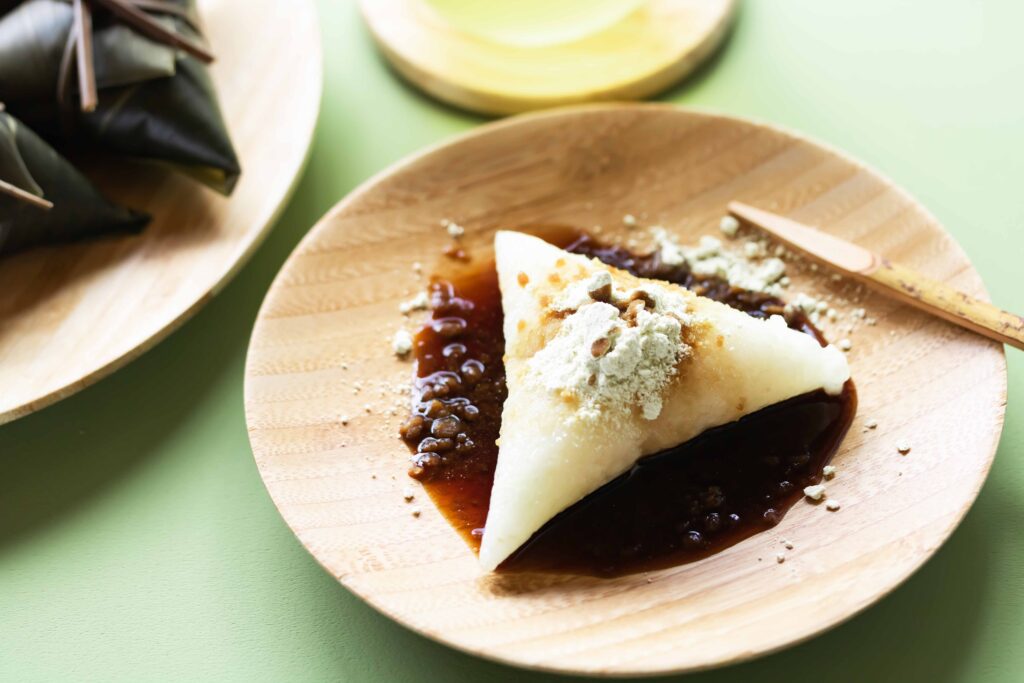
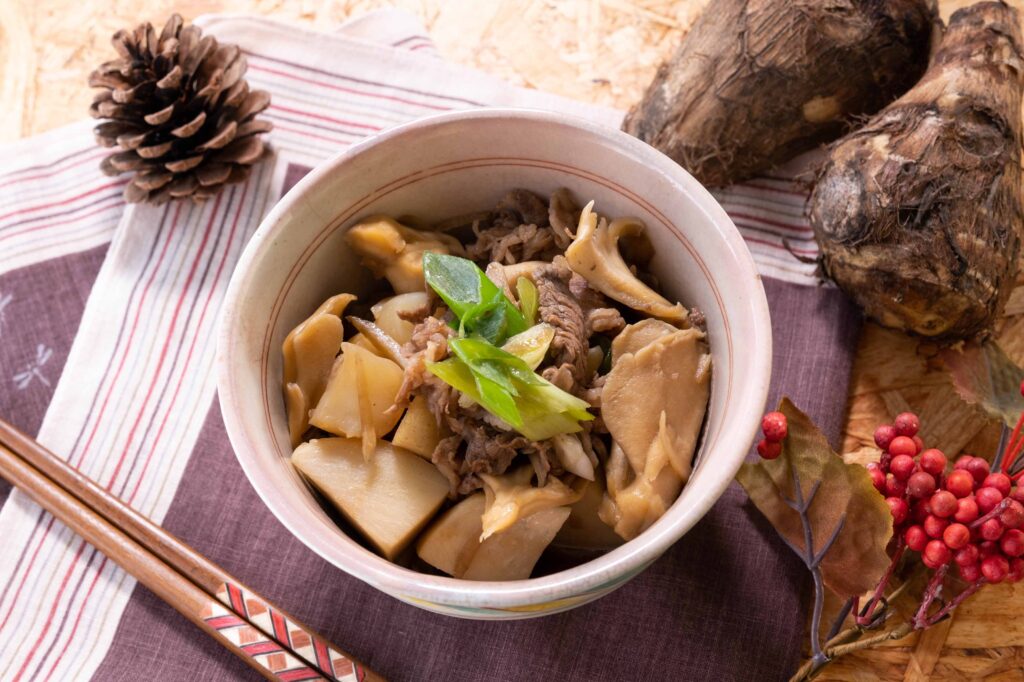
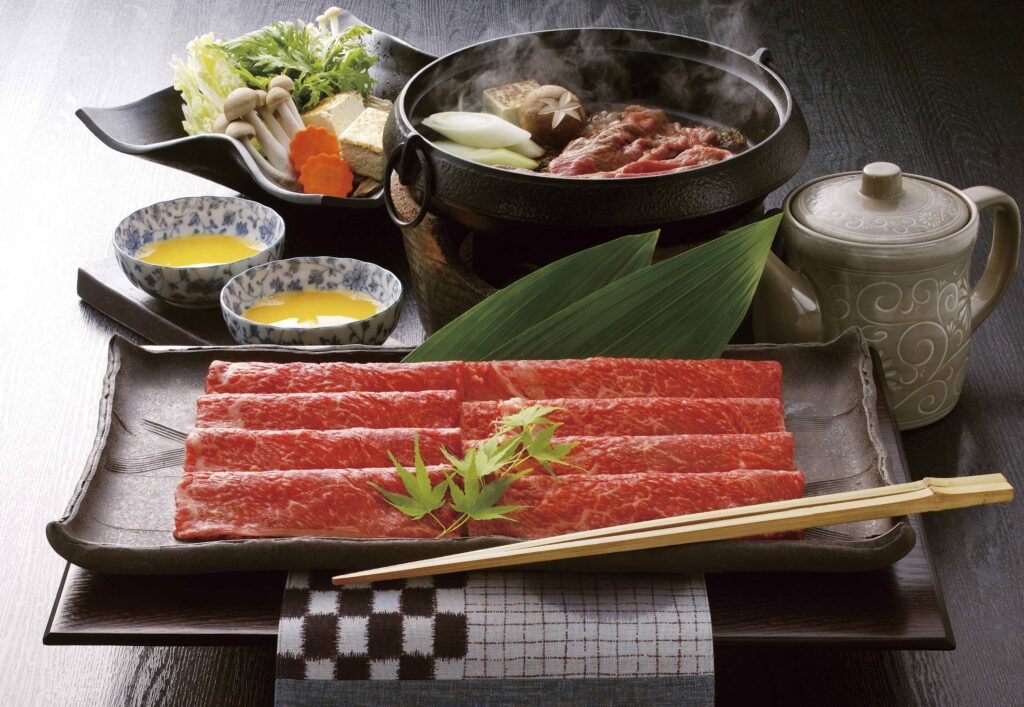
For more ideas of things to do in Yamagata city
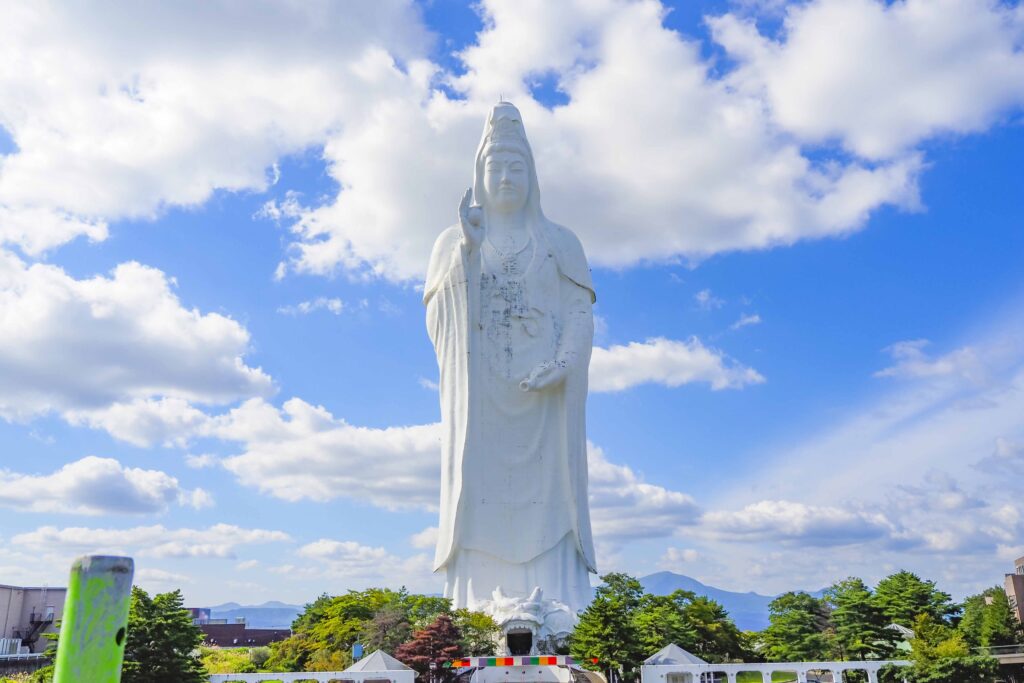
Go to Sendai
Go to Sendai from Yamagata station with the JR Sendai Line (1h20min.). Visit the Ozaki Hachiman Shrine (National Treasure) by taking the train to Ayashi and getting off the train at Tohoku Fukushi Daizen. From there, you can reach the giant Bodhisattva statue with the bus that stops at Kunimigaoka Icchome. Go back to Sendai station to stay at the hotel of your choice
What to eat (and drink) in Sendai?
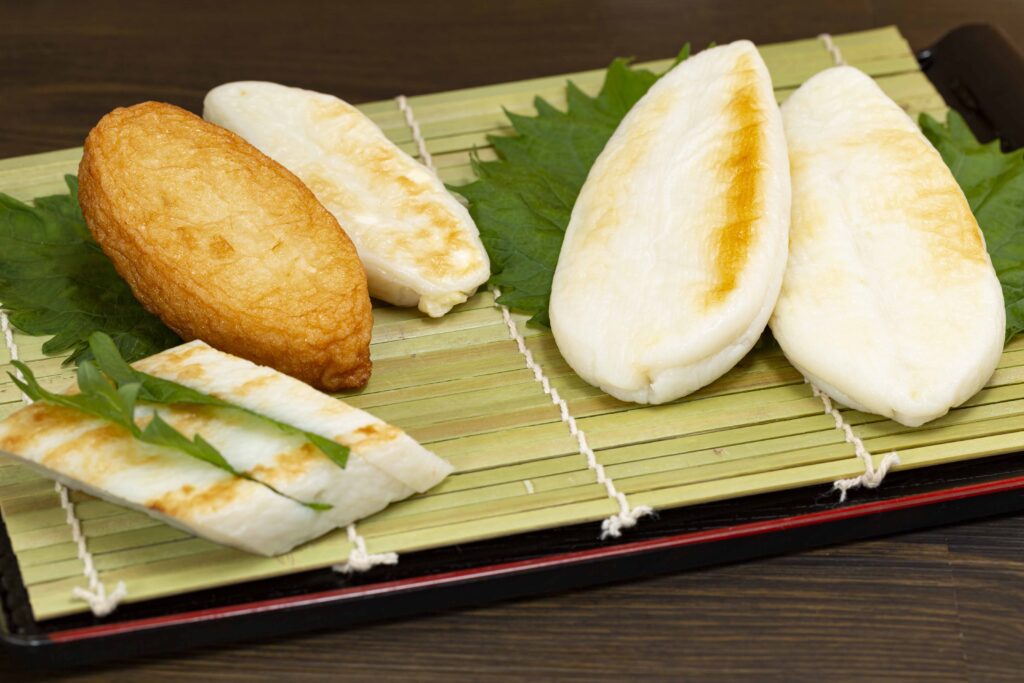
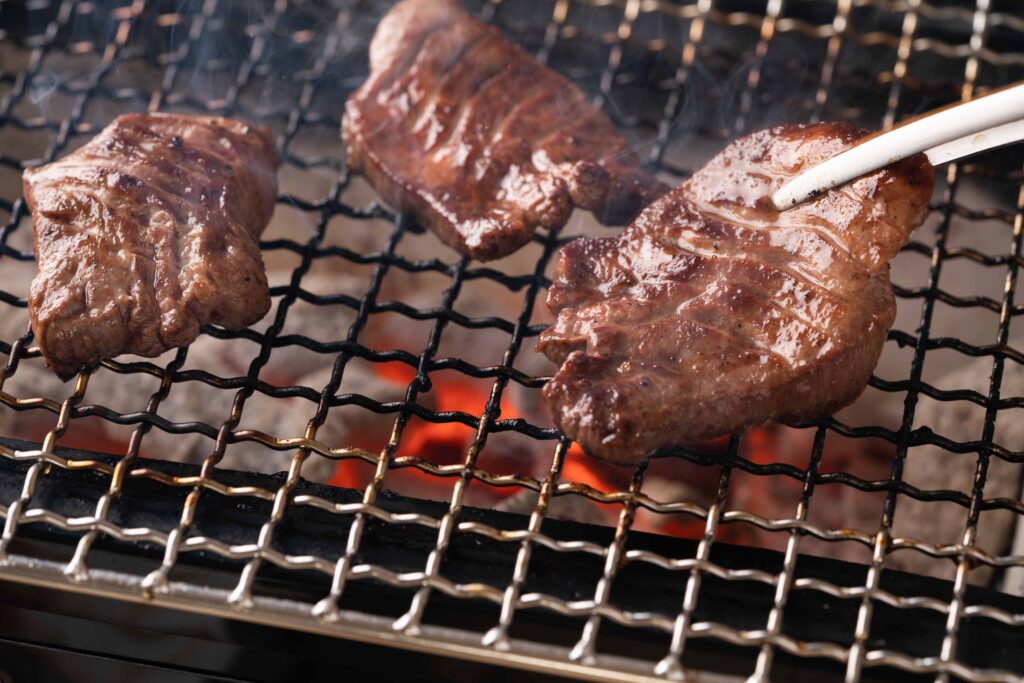
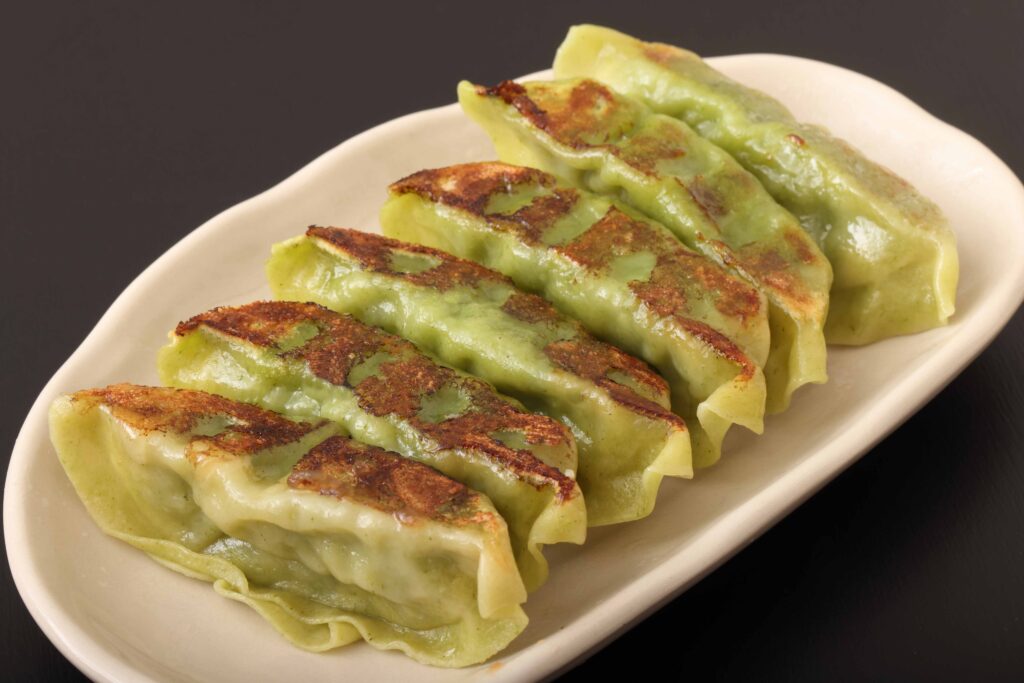
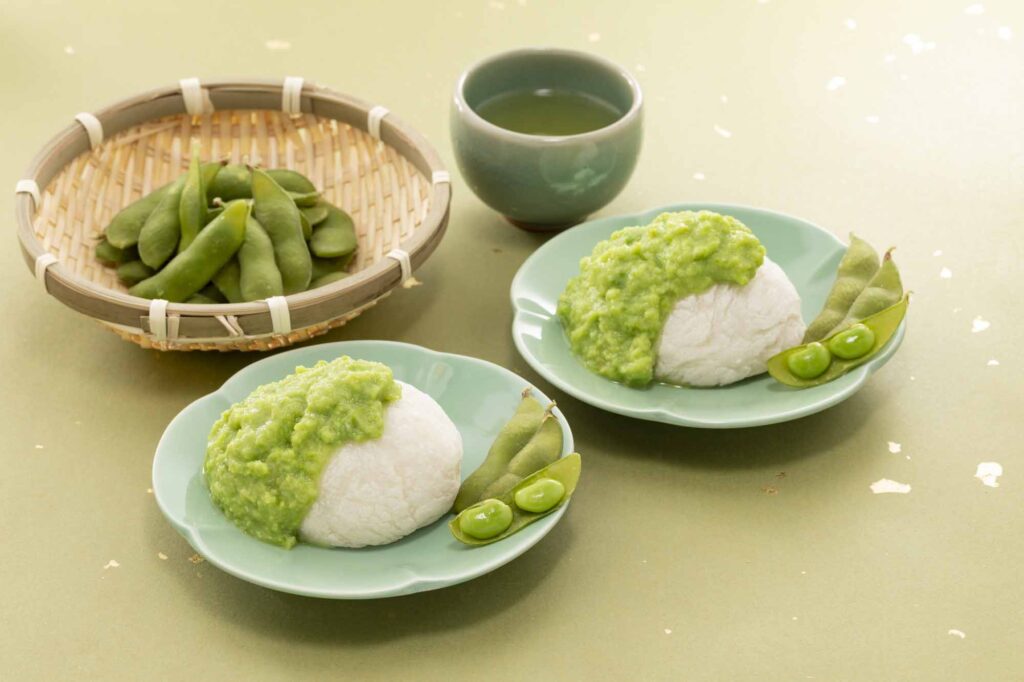
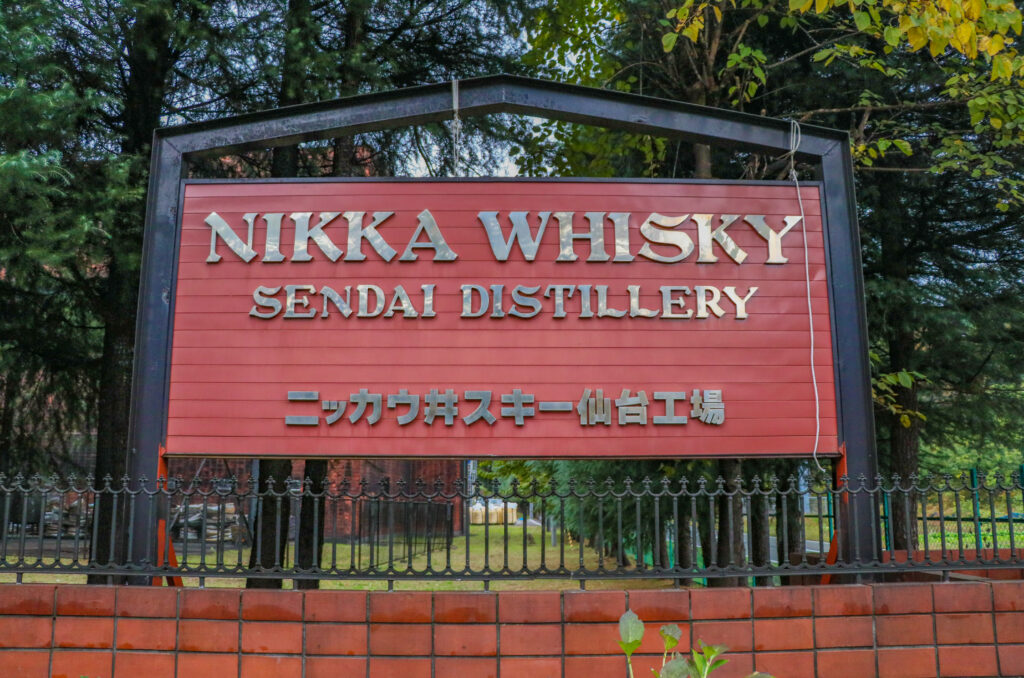
For more ideas of things to do in Sendai:
Visit Miyagi’s Official Website
(D8) Onagawa & Kinkasan Island
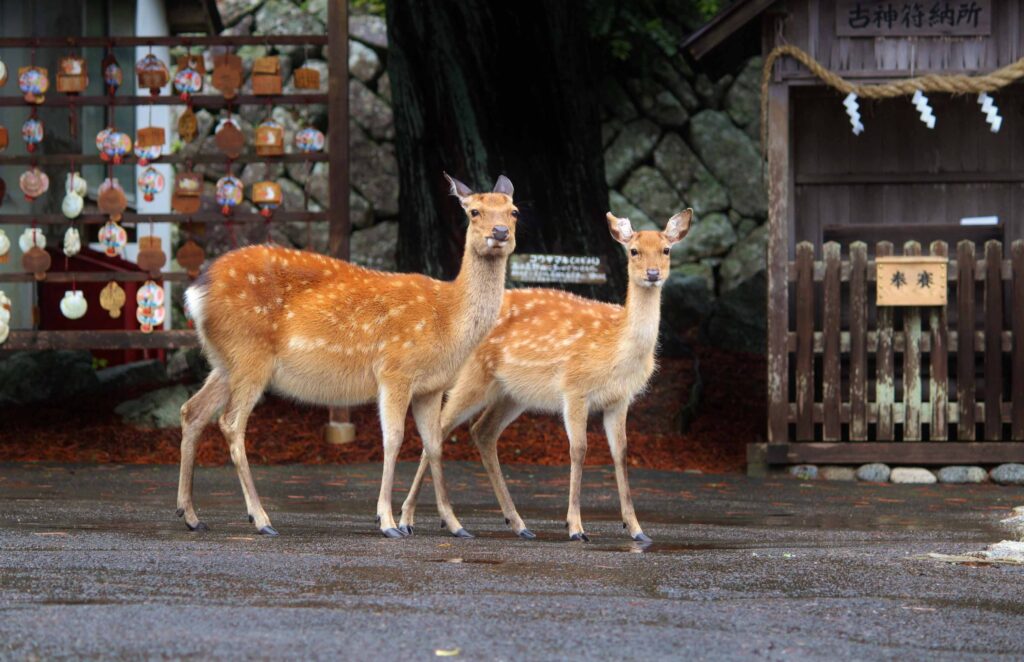
1. Take the Express Senseki Tohoku line to Ishinomaki at 8:20 (1 hour)
2. Make a transfer at Ishinomaki station for the Ishinomaki Line bound for Onagawa at 9:33
3. Get off the train at 9:59 at Onagawa Station
Kinkasan’s Island is designated as a Natural Monument of Japan, recognized for its rich biodiversity and its role as a sanctuary for various wildlife species. The island is home to a thriving population of deer, along with monkeys and numerous bird species, including eagles and other raptors, making it a paradise for wildlife enthusiasts and birdwatchers.
In addition to its vibrant wildlife, Kinkasan boasts a well-maintained pilgrimage route that guides visitors through the island’s lush forests, past ancient shrines and temples.
The island’s atmosphere is often compared to Nara, with its sacred deer and historic sites, but with the added charm of being set in the middle of the ocean. To go there, you will need to take the ferry from Onagawa port, a harbor city that still today hosts the terrible vestiges of the 2011’s Tohoku earthquake and tsunami.
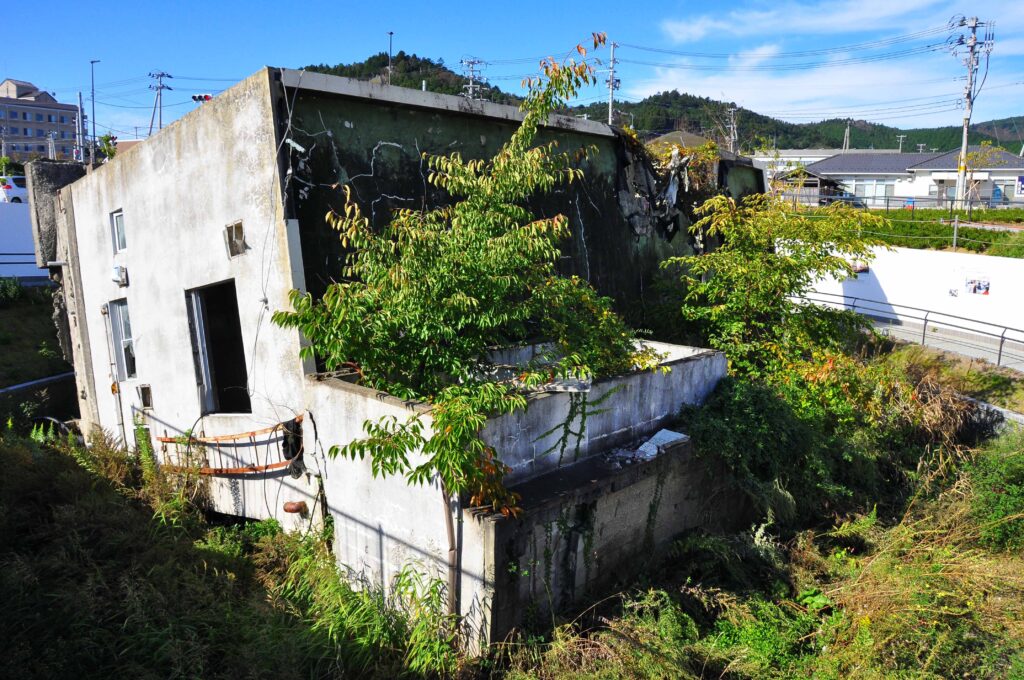
Visit Onagawa’s harbor and its monuments dedicated to the 2011 Tohoku Earthquake
The monument on the picture was the former Onagawa police station, a two-story concrete building that, as you can still see today, was completely swept away by the waves during the 2011 tsunami. Its location, inside what resembles a “pit”, shows how much effort was made by the authorities to rebuild the city on higher grounds as to not relive the same tragedy, should a similar tragedy happen in the future. This poignant site serves as a reminder of the resilience of the Onagawa community and the lessons learned from the devastating event.
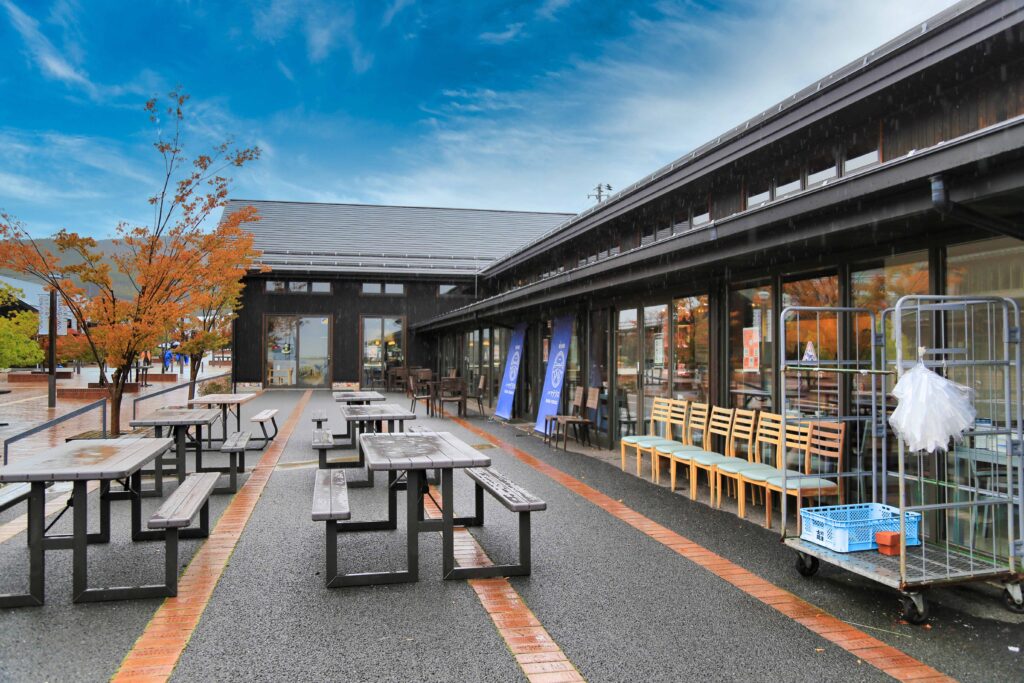
Have a quick morning treat at Onagawa’s fish market
When someone says “harbor city,” seafood naturally comes to mind! Not far from the ferry boarding point, there is a bustling fish market and souvenir shop, as well as numerous nearby restaurants where you can savor the freshest fish, seashells, sea urchins, and the local specialty, “sea squirts.” Even for those who aren’t big fans of seafood, there are plenty of other dining options, including pizza, yakiniku, Chinese food, and Italian restaurants.
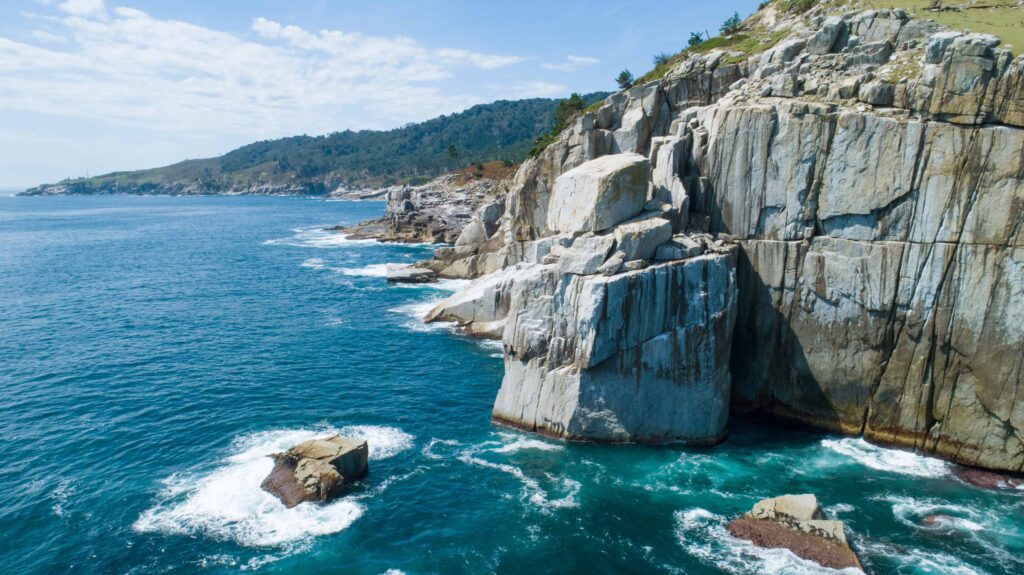
Take the ferry to Kinkasan
It costs 1750 yen for a one-way ferry ticket to Kinkasan Island. The boat is operated by Shio Planning (Japanese website). The time schedule varies according to the season, but most of the time you can expect the boat to leave the port at around 10:30/11:00 am (please verify beforehand)
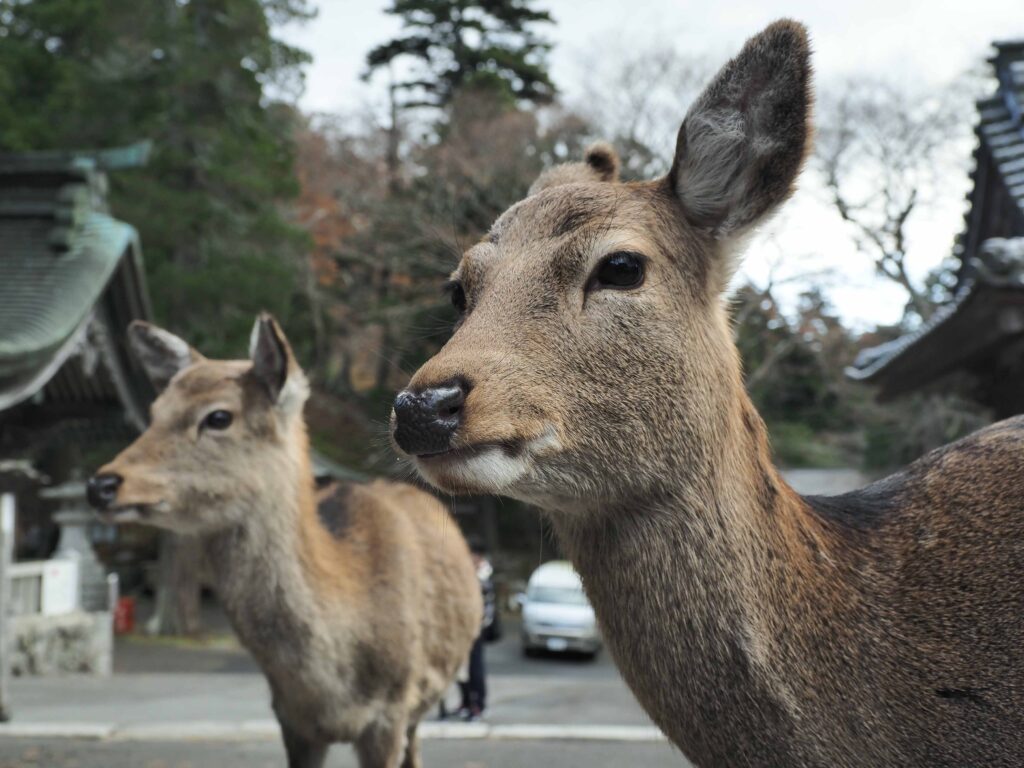
Visit Kinkasan
This is the “little Nara in the North”! Look for the deers, the monkeys, the Japanese serow, or the other native animals that live on the island. There is a lodge/restaurant on the island, where you will have your lunch and spend the night. Take your time to explore this fascinating pilgrimage site on the sea.
(D9) Heading to Iwate’s World Heritage : Hiraizumi
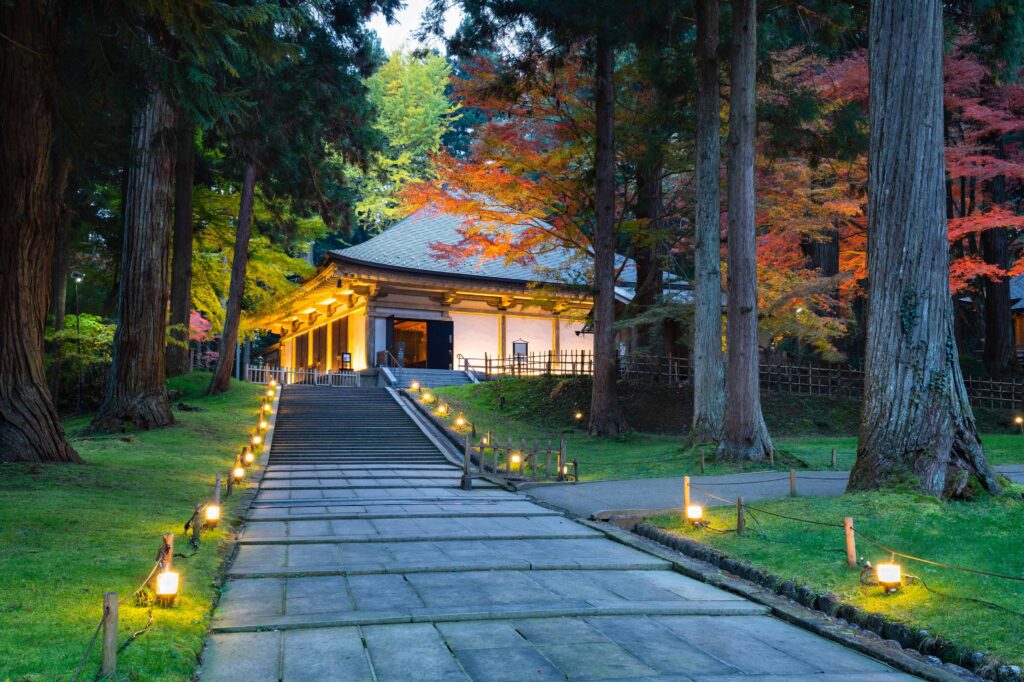
1. Take the ferry to Ishinomaki at 12:30 (verify the timetable as time might change frequently. Be careful! It’s not the same ferry that you came with)
2. Take the 13:54 train from Ishinomaki station to Kogota station (Ishinomaki line)
3. Make a transfer from Kogota station to Hiraizmu (Tohoku Main Line, train bound for Morioka) at 14:45
4. Arrive at Hiraizumi at 15:51
Hiraizumi is a cultural gem in Japan, boasting several UNESCO World Heritage Sites linked to Buddhism. Among these, Chuson-ji Temple and Motsu-ji Temple stand out for their exquisite gardens, ancient architecture, and invaluable historical artifacts. Chuson-ji, founded in the early 12th century, is particularly famous for its Konjikido Hall, a golden pavilion lavishly adorned with gold leaf, making it a stunning example of Heian-period Buddhist art. Motsu-ji, known for its serene Pure Land gardens, offers a glimpse into the spiritual landscape design of the era.
Explore the area on electric bicycles to travel more freely. For lunch, you’ll stop at a local “wanko soba” restaurant. This unique dining experience is a specialty of Iwate Prefecture, where small bowls of soba (buckwheat noodles) are served one after another in rapid succession. The challenge—and the fun—lies in signaling when you’ve had enough by covering your bowl, as servers continuously refill it until you do.
To cap off the day, you’ll enjoy a refreshing Japanese beer. Interestingly, Iwate Prefecture is one of the main producers of hops in Japan, contributing to the country’s excellent beer-making tradition.
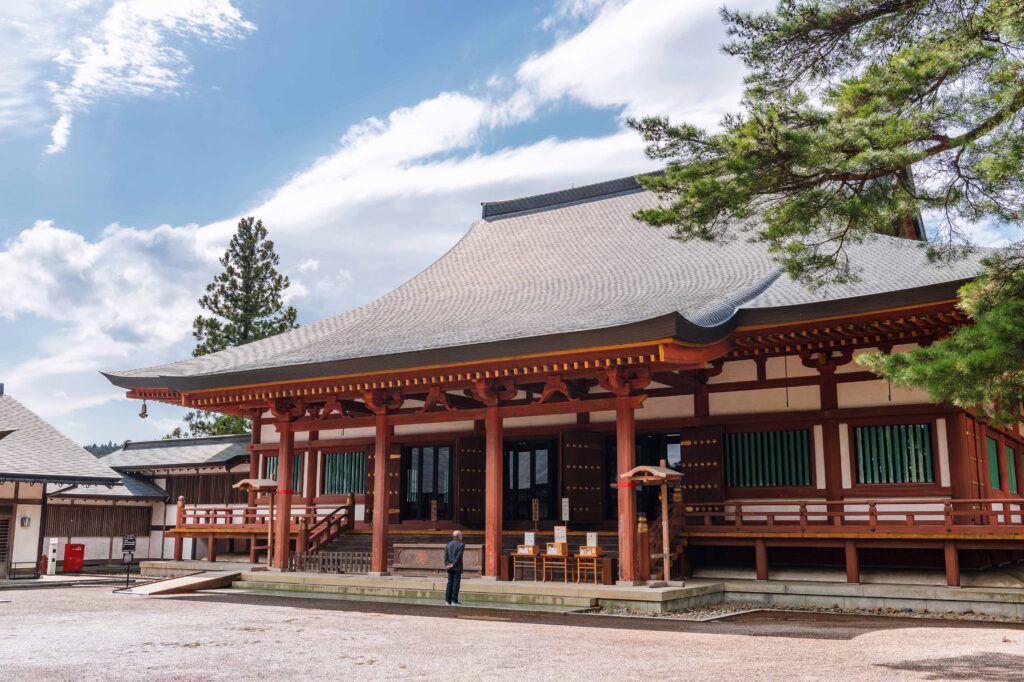
Check-in to your lodging facility and visit (if time allows it) Motsuji temple
Motsu-ji Temple in Hiraizumi is renowned for its serene Pure Land Garden, designed to reflect the Buddhist paradise with its central pond, carefully arranged rocks, and seasonal beauty. Although many original structures were lost, the stone foundations and scattered stupas offer a glimpse into the temple’s historical grandeur. The temple also houses Ennin Hall, dedicated to the influential monk Ennin, and features a small museum displaying artifacts that deepen understanding of its cultural significance.
Where to stay in Hiraizumi?
The cheapest option would be to stay around Ichinoseki station (8 min. away from Hiraizumi station by train). But the most convenient choice would go for a ryokan or minpaku nearby Hiraizumi station. Our recommendation goes to Maizuru’s ryokan, an affordable and comfortable option for a 2 nights stay in Hiraizumi.
(D10) A full day to enjoy Hiraizumi’s temples
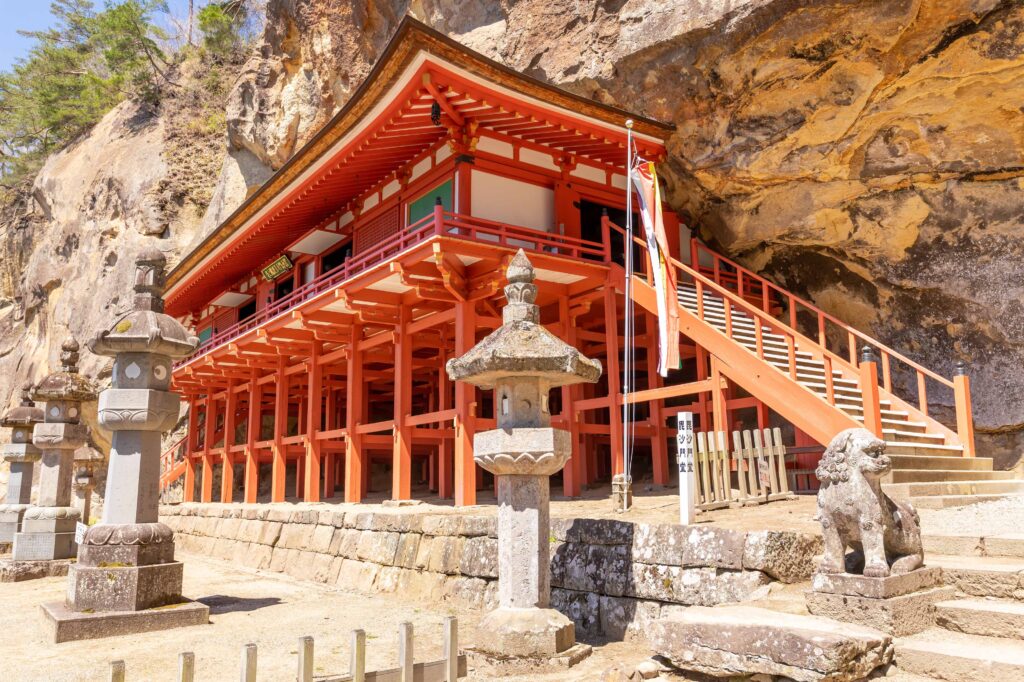
You’ll stay at the same place than the day before. So don’t worry about the next train, bus or check-outs, you can take your time to visit all the temples and main spots of Hiraizumi. We recommend you rent a bicycle next to Hiraizumi’s station (see more) to move more efficiently and effortlessly.
For a complete outlook of things to see and do in Hiraizumi: Hiraizumi Navi’s Official Website
What to eat in Hiraizumi?
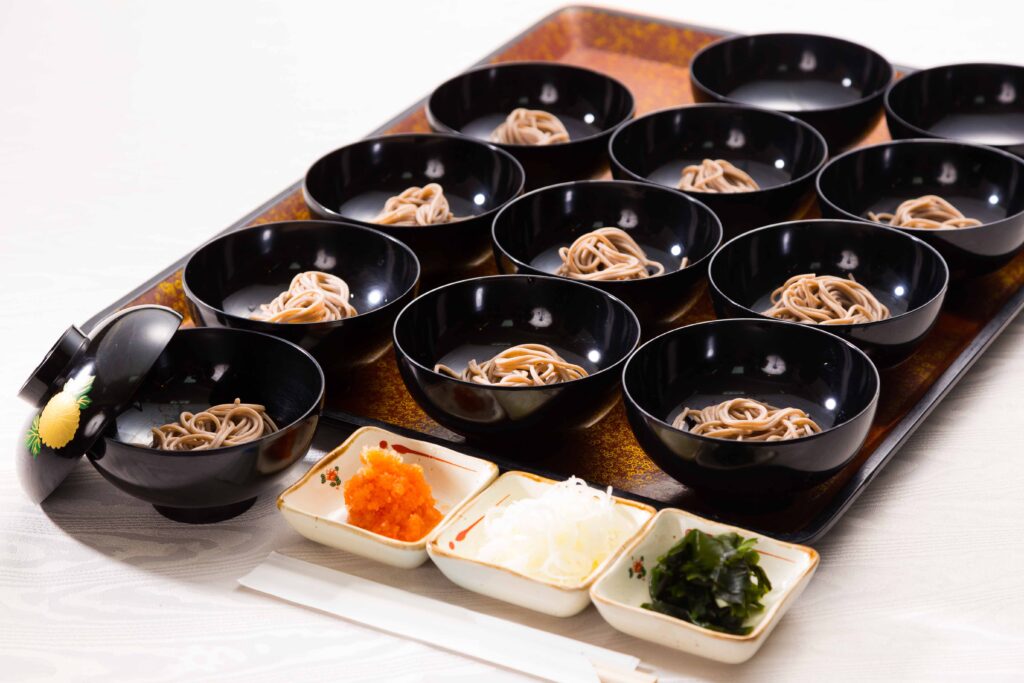
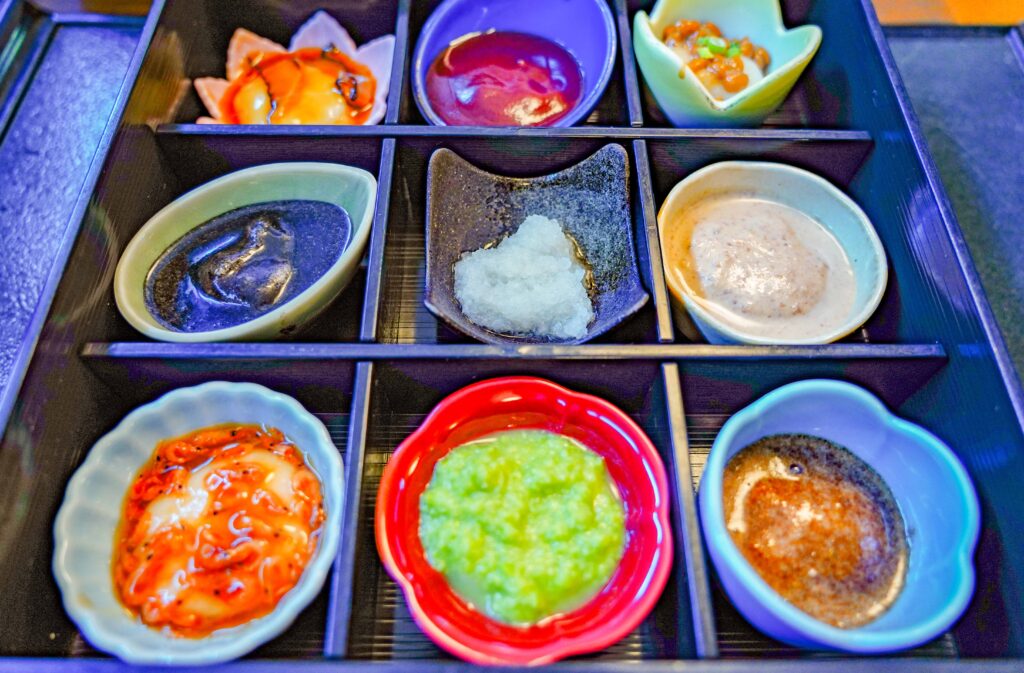
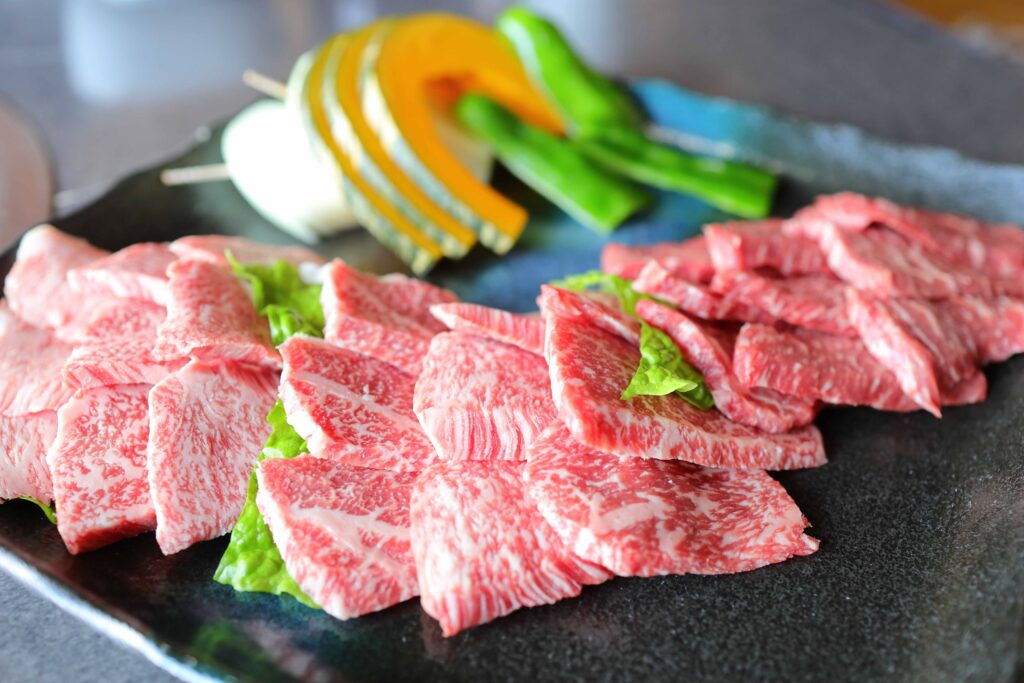
(D11) End your trip on a delicious note: Morioka and its jajamen
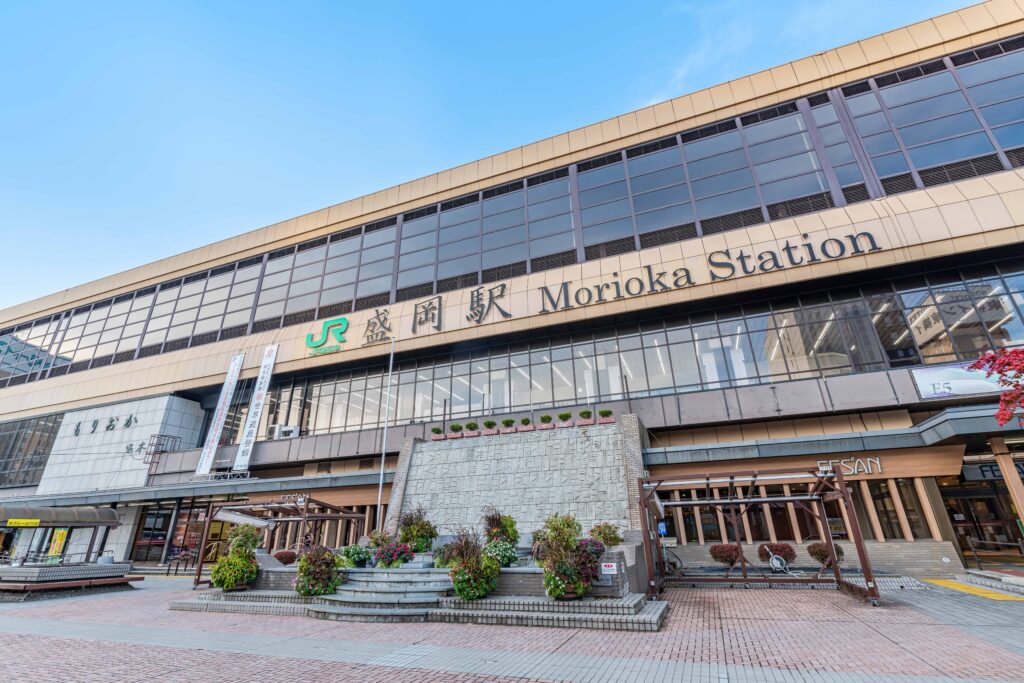
1. Take the Tohoku Main Line at 9:03 to Morioka
2. Arrive at Morioka station at 10:25
On the final day of our Tohoku trip, we’ll ease the bittersweet feeling of departure with a taste of Morioka’s famous “Jajamen” after visiting the striking Morioka Hachimangu Shrine, a vibrant red shrine dating back to the 17th century. Morioka Jajamen is a comforting dish featuring thick, handmade wheat noodles that are satisfyingly chewy. It’s traditionally topped with a flavorful mix of minced meat, usually a blend of pork and beef, along with finely chopped green onions, cucumber, and other fresh vegetables, creating a delightful balance of textures and flavors. Before we head home, we’ll explore local souvenir shops where you can pick up a “Chagchag Umako” doll—an intricately decorated horse figure that makes for a unique memento of Morioka.
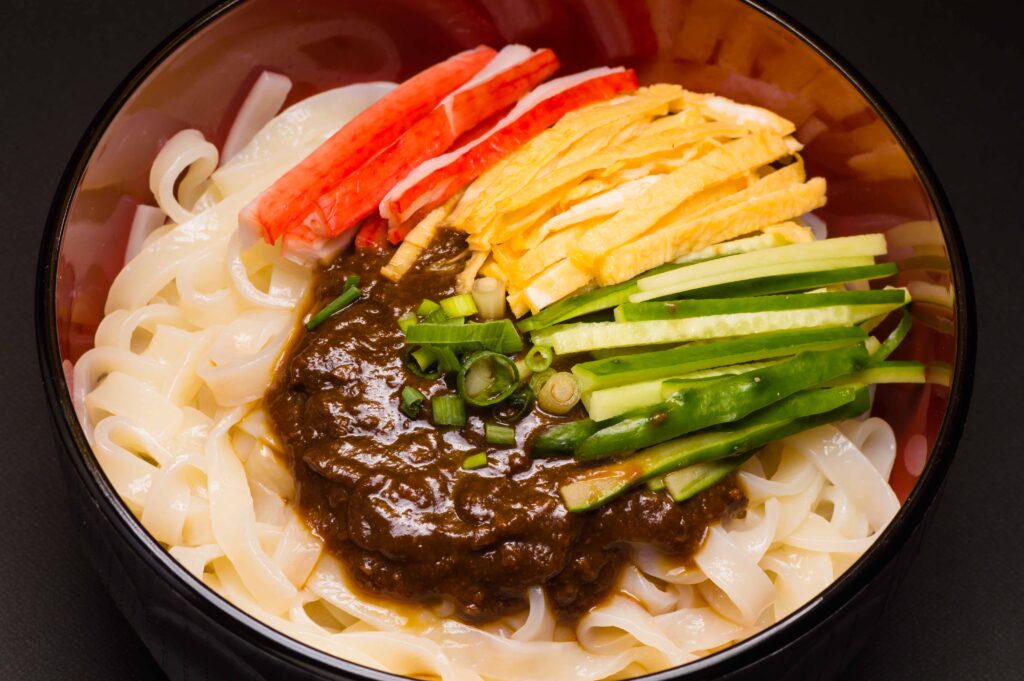
Visit Morioka’s shrines on foot from the station
Start your discovery of Morioka’s shrines with the Sakurayama-jinja inside the park that contains the former Morioka castle’s vestiges. Once done, head for the Morioka Hachiman Shrine but make a stop at the Iwate Bank’s Red Bricks Building, symbol of the Meiji era (early 20th century) architecture. After this building, there are some restaurants serving “Jajamen” along the streets, you can choose to have lunch now or after having seen the Morioka Hachiman shrine.
You can choose to go back to Tokyo from here, or continue your trip further in the North.
You can take the Tohoku Shinkansen back to Tokyo until 20:50 (takes 2 hours 10 min.)
How did you like it?
Thank you for reading our recommended trip to the Tohoku region. Please remind that this is just a recommended itinerary and not a complete travel guide. All the timetables of the several buildings and services noted in this article are subject to change through time and/or according to emergencies or special occasions. Feel free to change the plan, extend some stays or shorten/skip others. Please verify the itinerary, time tables, buildings’ opening hours, hotels’ availabilities, and such by yourself or subscribe to one of our arranged packages (book with us).







